

How to Answer: What Is the Last Book You Read?
Asking about recent reads is a common question many interviewers will ask. Sometimes this question will be phrased as “what book would you recommend that I read?” Or perhaps, “tell me about your favorite book.” If you are not an avid reader, do not fear! Here is how to craft a response that is genuine, intelligent, and insightful.

What Is The Purpose?
Talking about books with a potential employer – what is the purpose of this? What are they really trying to find out? There are a few differing opinions on the matter. First, this could simply be a conversation starter. The interviewer wants to get to know you a little bit and is curious about what kinds of books you read. Another purpose of this question could be to see how well-read you are (in other words, how many books you read, and what kind). In some corporate environments, being well-read is really important to the company.
Take Time To Prepare
Regardless of the purpose behind the question, we will help you to answer it to the best of your ability. Having a quick summary and keynotes from your book of choice at the ready can be an extreme advantage during your next interview. The truth is, you can choose to talk about any book you have read in the past, not just your last read. Carefully explore options available in the literary world and find ways to professionally talk about them. If you’re having trouble deciding which book to bring up in conversation, this is the blog for you. Keep reading to learn how to answer: what is the last book you read?
Choose a Book You Have Actually Read
While in theory, it might seem like a good idea to do a quick google search for a complex and scholarly novel, it is best to choose a book you have actually read. Simply reading the SparkNotes version will not give you the ability to intelligently summarize the book and have a conversation on it. What if that happens to be the interviewer’s favorite book, and wants to talk more about it? Nope, better to be honest, no matter what book you choose. Maybe choose a book that shares a little bit about you as a person. If you are interested in airplanes, pick a book that focuses on aviation. If you are a history geek, choose a book that focuses on the era that you are most interested in. This is a great way to spark some interesting conversation and help the interviewer get to know you better.
Example: My father was a piolet so I have always been interested in airplanes. The aviation-based novel I just completed inspired me to get my piolet’s license!
Or: To be honest, I’ve always loved cooking books. I enjoy simply reading them to learn about different recipes and techniques. I read them as someone else would read a novel!
Why these are good responses:
- You are sharing a unique personal fact about yourself
- These responses sound genuine, truthful, and personal
- Further conversation might spark from your responses
Choose a Book That Teaches a Lesson
If you are still having trouble finding the perfect book to talk about, and are not an avid reader, find a book that teaches a lesson. Pieces of literature that are based around morals, values, and lessons will show your interviewer that you strive to learn. Being interested in growing and learning new things is a great trait that is very attractive to many interviewers. Try looking into The 7 Habits Of Highly Effective People by Steven Covey. You can order yourself a copy off Amazon, here ! If you like reading YA novels, try to think about one that you learned something from.
Example: The 7 Habits Of Highly Effective People has helped me uncover methods to work more productively in a team-based environment.
Why this is a good response:
- Choosing books that specifically focus on teaching the reader show that you are willing to learn
- Shows that you have a growth mindset
- Communicates that you are committed to teamwork
Find a Success-Based Read
Another fabulous topic you can search for when finding a book to discuss in an interview are success story-based reads. These can be autobiographies or short stories of triumph in any area that interests you. For example, you can choose a book that tells the story of a successful businessperson, inventor, athlete, or artist. Stories that focus on success are a great way to show your interviewer you strive for the best. It can also be a great way to segue into talking about your own personal success stories. If you are looking for a book that is sure to get you inspired, check out Grit: The Power of Passion and Perseverance by Angela Duckworth. You can find the link to order yourself a copy on Amazon, here !
Example: The book Grit by Angela Duckworth inspired me to never give up on any task I set my mind to. The success stories in this book inspired me to go back to school to finish my undergraduate degree.
- Shows that you learned something from the book you read
- Communicates that you have been impacted positively
- Segways into sharing more accomplishments and strengths

What if Books Are Just Not Your Thing?
For some people, the thought of finishing an entire book seems almost impossible. If your most recent read was not a book, that is okay, too! Be honest with your interviewer if you prefer to spend your time reading other types of writing. If you are interested in poetry, for example, you can talk about your favorite poet. If you are a movie fan, speak about a script you have read recently and films you have watched that were inspired by your reading.
Even if your answer might sound a little unconventional, it will help your interviewer get to know you and discover if you are a good fit for the company. Sometimes revealing a hobby that is writing-related will allow you to connect further with the interviewer. Even if the only reading you do is the newspaper, that says something about your style, and you should be honest and genuine with the interviewer!
Example: I enjoy reading poetry in my free time, my favorite poet is Edgar Allen Poe. His poetry inspired me to begin writing poems myself.
- Shows your genuine interests
- Does not seem fabricated/lets the employer know more about you
- Gives you a unique competitive edge to help your interview stand out
More to explore:
- How to Answer: What are your pet peeves? – here
- How to Answer: How do you boost your confidence? – here
- How to Answer: What salary expectations do you have? – here
If you follow these tips, you’ll be well on your way to impressing your interviewer. Do you have any book recommendations you would like to share? Let us know!
Get Hired in 24 Hours!
Download the Top-Rated Job App to get a job in 24 hours!
For more helpful content, check out our blog.
Share this:

Leave a Reply Cancel reply
You must be logged in to post a comment.
Writingskills
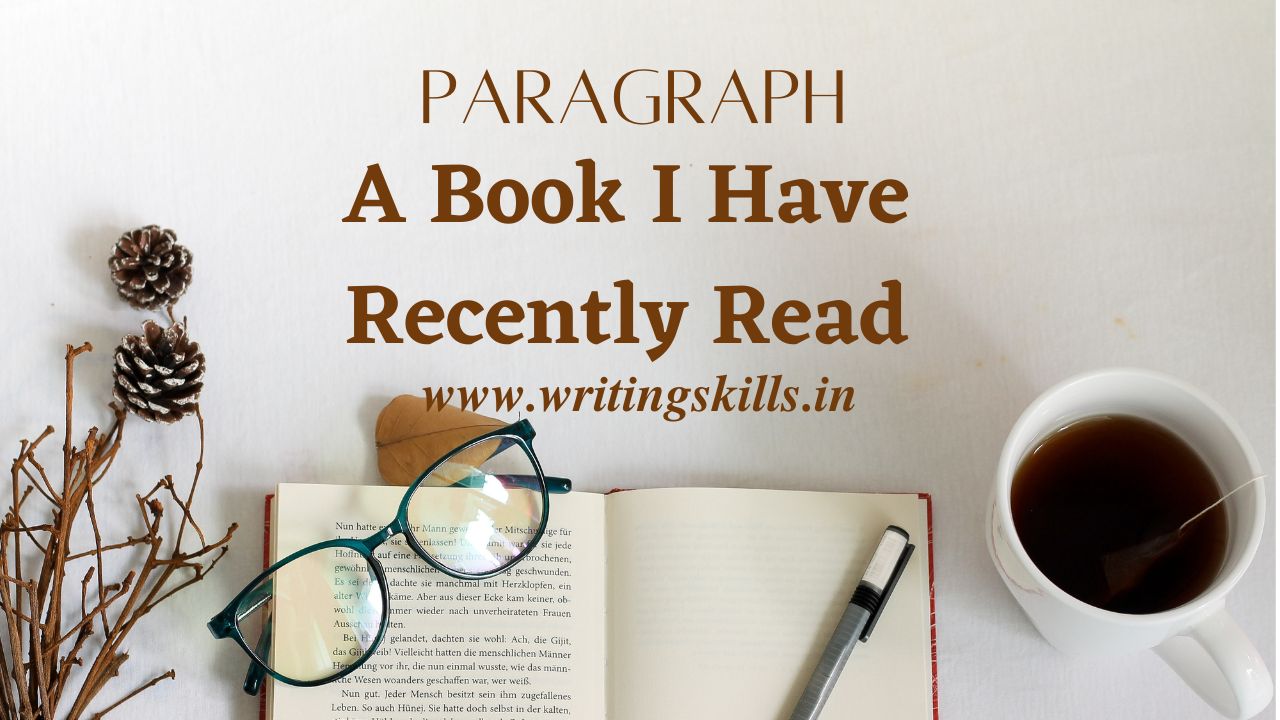
6 Paragraphs on ‘A Book I Have Recently Read’
A Book I Have Recently Read: Books are the best resources of people. With which no earthly wealth can be compared. By reading books we can keep our mind healthy and happy. A good book opens the eyes of the human mind as well as expands and develops the knowledge and intellect and helps to light the mind. Many people like to read story books or other kinds of books. Reading books is a good habit. ‘A Book I Have Recently Read’ is an important paragraph for the students. In this post I have presented six paragraphs on ‘A Book I Have Recently Read’.
A Book I Have Recently Read
Reading books is my passion. I have recently read a book named “ Pather Panchali “. It was written by famous writer Bibhutibhusan Bandopadhyay. The novel is about a little village boy named Apu. The main characters of the book are Apu, Durga, Harihar and Sarbajaya. Harihar and Sarbajaya, a rustic couple, spent their days in miserable distress. But they dreamt of a rosy future. Apu and Durga are their children. Durga died a premature death. It was a great shock to the family. One cannot shed tears when one reads about the death of Apu’s dearest sister Durga. The novel gives us a very living picture of the beauty of a remote village in Bengal. The story reminds us of the hardship of the thousands of poor and helpless people of our country. Really it is an immortal creation of Bibhutibhushan Bandyopadhyay.
Also read : Paragraph on Black Fungus or Mucormycosis
I have little time to read books other than school books. But l heard the story of “Ramer Sumati” written by Saratchandra Chattapadhyay from my grandpa. The story charmed me very much. Recently I managed to have a copy of the book which I finished in a single sitting. It is entirely the story of a joint family of rural Bengal. Here are a few principal characters – Ramlal, the hero, Shyamlal, his step-brother and Narayani, the wife of Shyamlal. Apart from them there are Shyamla’s son and Digambari, his mother-in-law. Ramlal lost his mother when he was only two and a half years old. Narayani, the sister-in-law brought him up with all motherly love and affection. Digambari could not tolerate the sweet relationship between the two. Ramlal was very wayward and that was at the root of all problems. The ancestral home was partitioned and Ramlal was separated much to the pain of Narayani. The author’s portrayal of the characters of Ramlal and Narayani is simply unique. Details of the book cannot be given in this short span. But everybody should go through the book whenever he gets a chance.
Also read : Paragraph on Corona Virus (Covid-19)
I am a genuine book lover. Reading books is my passion. Whenever I get spare time I read story books, novels etc. I am a big fan of cricket as well. My father recently gifted me the autobiography of Sachin Tendulkar “Sachin Tendulkar – Playing It My Way” on my birthday. The book is really very interesting. Sachin Tendulkar is not only a great player but also has become an icon. So a chance to peek into the life of such an icon is always sought after. The chapters describe all the important events of his life. The reader is bound to respect the legend more after going through the book. The book not only brings out Sachin’s passion for cricket but also reveals how caring a father and gentle son he is. I will cherish the experience of reading the book forever and this will be a guide force in my life. I wish to read it once again in future.
A Book I Have Recently Read
Reading books is my passion. I have recently read William Shakespeare’s “The Tempest”. It is the last play of the great playwright, which was written in 1611 at Stafford. Prospero was a learned man. He did not like to rule Milan as merely a Duke. His power was his wisdom. His brother, Antonio, took advantage of this craving for knowledge and conspired to drive him away from Milan with the help of the king of Naples, Alonoso.
Prospero and his daughter eventually took shelter in an alien island. It was a mystic land of which Prospero was little aware. Caliban was an evil spirit which was living in that island. Gradually, Prospero dominated Caliban and became a supreme power by way of his white magic. Dr. Faustus of Marlowe exercised necromancy, but Prospero used his magic for the welfare of the world. Hence his magic was a boon not a bane. His daughter, Miranda, was a lovable and beautiful young lady. Caliban wanted to seduce Miranda, but in vain. At last Ferdinand, the prince of Naples, came to the mysterious land. Miranda was very much appalled to see a beautiful young man for the first time. Seeing Ferdinand, she cried out, “O brave new world.” Later Miranda and Ferdinand fell in love. Prospero wanted to test Ferdinand’s devotion to his daughter. Ferdinand won the mind of Prospero. Using his white magic, Prospero taught everyone including his brother good lessons. Alonso, Antonio and Sebastian realized their misdeed. Gonzalo, who helped Prospero once to escape from his cruel brother, was rewarded.
Finally, everyone was reconciled. Prospero returned to Milan with his daughter and he freed Ariel, the spirit which helped Prospero in fulfilling his desires while living in the alien island. The happy reunion of the play implies the fact that Prospero is a major figure who by way of using his white magic helps everyone reconcile in spite of shortcomings. Honesty and goodness have been rewarded. I felt much aesthetic pleasure while reading the play. Shakespeare’s language, his style, above all, his blending of tragedy and comedy gave to my mind a soothing effect which I cannot forget ever.
Books are our best friends. Even in today’s world of internet and mobile, the importance of books cannot be ignored. I am a genuine book lover. Reading books is my passion. Whenever I get spare time I read story books, novels etc. Recently I have read Bibhutibhushan’s classic novel ‘Chander Pahar’. I loved the book so much that I have lost count of the number of times I flipped through the book even after I had finished reading it.
The book ‘Chander Pahar’ records the adventures of Shankar, the main character of the novel. Shankar, a young bengali boy, faces many adventures in Africa where he goes in connection with his job on the railways. He encounters many ferocious animals like lions, black mamba etc. But the real adventure begins when Shankar accompanies Diago Alverage, a European adventurer, to the Kilimanjaro mountain in search of diamonds. In the course of the events Diago gets killed by a terrible animal called ‘Buniyp’ and Shankar is left all alone in that unknown land of adversity and danger. But he braves it with extraordinary courage and valour.
After a great struggle, he is saved from the desert. Shankar is the embodiment of courage. I love the character very much. I am attracted by Bibhutibhusan Bandyopadhyay’s great narrative skill. He makes the description of African jungles and Shankar’s adventures alive with his narrative skill. Author’s creativity makes Shankar’s character one of the most popular characters of Bengali literature. Whenever I read the novel, I find myself engrossed in it. My mind also travels with Shankar in the land of Africa and feels the adventure. This is why ‘Chander Pahar’ holds such a special place in my mind.
Books are our best friends. Even in today’s world of internet and mobile, the importance of books cannot be ignored. I am a genuine book lover. Reading books is my passion. Whenever I get spare time I read story books, novels etc. Of all the books I have read, I like ‘The Story of My Life’ by Helen Keller the most. The episode centres round the hard struggle of life of Helen Keller. She writes with a natural ease and power, hardly equaled by any other writer of that category. In this book we see that Helen Keller became blind and deaf after a serious illness in her childhood. However, the day when Miss Sullivan came to her as her teacher was the most memorable day in her life. After a long hard process Helen learnt to read, in raised letters in Braille method . She learnt to write also in a special type of typewriter. In the book ‘The Story of My Life’ an account of the first twenty two years of Helen Keller’s life has been given. During this time she came into contact with many noble and affectionate persons. In her autobiography Helen describes her experiences with so much ease and sincerity in such a lucid style that it cannot but arouse love and wonder for her. But the most striking feature of this book is her strong will and iron determination to cross all the hurdles of a handicapped person in her own life. And therefore, it has the universal appeal to all the readers throughout the world. Everybody should go through the book whenever he gets a chance.
Paragraph on ‘My Hobby”
Paragraph On ‘My Aim In Life’
Share this:
- Click to share on WhatsApp (Opens in new window)
- Click to share on Facebook (Opens in new window)
- Click to share on Twitter (Opens in new window)
- Click to email a link to a friend (Opens in new window)
- Click to print (Opens in new window)
8 thoughts on “6 Paragraphs on ‘A Book I Have Recently Read’”
I am very thankful to this passages… 💛💛💛
The essay is the most important part of a college application, so you need to focus and make a good essay to convince the university accept you. You even get help from essay writing expert to ensure you acceptance. Check out, please DigitalEssay.net
thank you very much
helpful page…..
Very useful site. Check also <a href=" https://www.suggestionpedia.com>suggestion and hs suggestion</a> for West Bengal student.
Leave a comment Cancel reply
Save my name, email, and website in this browser for the next time I comment.
How to Answer "What Was the Last Book You Read?" in an Interview

Introduction
Interviews can be interesting & sometimes the interviewer hits you with interesting questions that you haven’t been expecting. Job interviews often include the question, "What was the last book you read?" While it may seem like a simple question,how you answer can be important.
So, let's prepare to answer this common question, even if your reading habits are missing.
1. Make a List of Your Favorite Books, Articles, and Essays
By preparing a list of books, articles, and essays you are communicating to the recruiter that you are organized and well prepared. This also makes it easy for you to recall the most interesting topic you can touch at the time of interview. Note down a list of books that covers all aspects of the theme like leadership, time management, self improvement etc.
2. Analyze What You Liked and Your Big Takeaways
Every book you enjoy has something special about it. Maybe it's a great story, useful life lessons, or interesting ideas. Take some time to think about what made you like each of your favorite things to read. Was it an exciting story, or did you learn something about dealing with people that helps you at work? These thoughts will help you answer more honestly and convincingly.
3. Relate Your Favorites to Relevant Skills or Lessons
A book is knowledge of the river, lessons that may be relevant to us are following through it. Always try to communicate those key learnings you have utilized in a real scenario if possible. By mentioning your learning and application in practical life shows that you are a productive person and you can use what resources you have available to do your job better.
4. Tell a Story About Your Favorite Reads
Story is a powerful way to communicate. Tell a tale about the book rather than just naming it. Share how a book has affected your life and career. You should have a story that is meaningful and makes your answer more interesting and memorable. This shows you have good communication & presentation skills.
In job interviews, even simple questions like "What was the last book you read?" can be important. Our reading choices can become a powerful way to show your adaptability, knowledge, and ability to use what you learn in real life. So, the next time you get this question, be ready to share your reading journey and show employers how it can benefit them. By Tapesh Kushmi Tharu
Recruitment Officer, Jobs Sniper Pvt. Ltd.

Have a language expert improve your writing
Run a free plagiarism check in 10 minutes, generate accurate citations for free.
- Knowledge Base
- How to write a literary analysis essay | A step-by-step guide
How to Write a Literary Analysis Essay | A Step-by-Step Guide
Published on January 30, 2020 by Jack Caulfield . Revised on August 14, 2023.
Literary analysis means closely studying a text, interpreting its meanings, and exploring why the author made certain choices. It can be applied to novels, short stories, plays, poems, or any other form of literary writing.
A literary analysis essay is not a rhetorical analysis , nor is it just a summary of the plot or a book review. Instead, it is a type of argumentative essay where you need to analyze elements such as the language, perspective, and structure of the text, and explain how the author uses literary devices to create effects and convey ideas.
Before beginning a literary analysis essay, it’s essential to carefully read the text and c ome up with a thesis statement to keep your essay focused. As you write, follow the standard structure of an academic essay :
- An introduction that tells the reader what your essay will focus on.
- A main body, divided into paragraphs , that builds an argument using evidence from the text.
- A conclusion that clearly states the main point that you have shown with your analysis.
Instantly correct all language mistakes in your text
Upload your document to correct all your mistakes in minutes

Table of contents
Step 1: reading the text and identifying literary devices, step 2: coming up with a thesis, step 3: writing a title and introduction, step 4: writing the body of the essay, step 5: writing a conclusion, other interesting articles.
The first step is to carefully read the text(s) and take initial notes. As you read, pay attention to the things that are most intriguing, surprising, or even confusing in the writing—these are things you can dig into in your analysis.
Your goal in literary analysis is not simply to explain the events described in the text, but to analyze the writing itself and discuss how the text works on a deeper level. Primarily, you’re looking out for literary devices —textual elements that writers use to convey meaning and create effects. If you’re comparing and contrasting multiple texts, you can also look for connections between different texts.
To get started with your analysis, there are several key areas that you can focus on. As you analyze each aspect of the text, try to think about how they all relate to each other. You can use highlights or notes to keep track of important passages and quotes.
Language choices
Consider what style of language the author uses. Are the sentences short and simple or more complex and poetic?
What word choices stand out as interesting or unusual? Are words used figuratively to mean something other than their literal definition? Figurative language includes things like metaphor (e.g. “her eyes were oceans”) and simile (e.g. “her eyes were like oceans”).
Also keep an eye out for imagery in the text—recurring images that create a certain atmosphere or symbolize something important. Remember that language is used in literary texts to say more than it means on the surface.
Narrative voice
Ask yourself:
- Who is telling the story?
- How are they telling it?
Is it a first-person narrator (“I”) who is personally involved in the story, or a third-person narrator who tells us about the characters from a distance?
Consider the narrator’s perspective . Is the narrator omniscient (where they know everything about all the characters and events), or do they only have partial knowledge? Are they an unreliable narrator who we are not supposed to take at face value? Authors often hint that their narrator might be giving us a distorted or dishonest version of events.
The tone of the text is also worth considering. Is the story intended to be comic, tragic, or something else? Are usually serious topics treated as funny, or vice versa ? Is the story realistic or fantastical (or somewhere in between)?
Consider how the text is structured, and how the structure relates to the story being told.
- Novels are often divided into chapters and parts.
- Poems are divided into lines, stanzas, and sometime cantos.
- Plays are divided into scenes and acts.
Think about why the author chose to divide the different parts of the text in the way they did.
There are also less formal structural elements to take into account. Does the story unfold in chronological order, or does it jump back and forth in time? Does it begin in medias res —in the middle of the action? Does the plot advance towards a clearly defined climax?
With poetry, consider how the rhyme and meter shape your understanding of the text and your impression of the tone. Try reading the poem aloud to get a sense of this.
In a play, you might consider how relationships between characters are built up through different scenes, and how the setting relates to the action. Watch out for dramatic irony , where the audience knows some detail that the characters don’t, creating a double meaning in their words, thoughts, or actions.
Here's why students love Scribbr's proofreading services
Discover proofreading & editing
Your thesis in a literary analysis essay is the point you want to make about the text. It’s the core argument that gives your essay direction and prevents it from just being a collection of random observations about a text.
If you’re given a prompt for your essay, your thesis must answer or relate to the prompt. For example:
Essay question example
Is Franz Kafka’s “Before the Law” a religious parable?
Your thesis statement should be an answer to this question—not a simple yes or no, but a statement of why this is or isn’t the case:
Thesis statement example
Franz Kafka’s “Before the Law” is not a religious parable, but a story about bureaucratic alienation.
Sometimes you’ll be given freedom to choose your own topic; in this case, you’ll have to come up with an original thesis. Consider what stood out to you in the text; ask yourself questions about the elements that interested you, and consider how you might answer them.
Your thesis should be something arguable—that is, something that you think is true about the text, but which is not a simple matter of fact. It must be complex enough to develop through evidence and arguments across the course of your essay.
Say you’re analyzing the novel Frankenstein . You could start by asking yourself:
Your initial answer might be a surface-level description:
The character Frankenstein is portrayed negatively in Mary Shelley’s Frankenstein .
However, this statement is too simple to be an interesting thesis. After reading the text and analyzing its narrative voice and structure, you can develop the answer into a more nuanced and arguable thesis statement:
Mary Shelley uses shifting narrative perspectives to portray Frankenstein in an increasingly negative light as the novel goes on. While he initially appears to be a naive but sympathetic idealist, after the creature’s narrative Frankenstein begins to resemble—even in his own telling—the thoughtlessly cruel figure the creature represents him as.
Remember that you can revise your thesis statement throughout the writing process , so it doesn’t need to be perfectly formulated at this stage. The aim is to keep you focused as you analyze the text.
Finding textual evidence
To support your thesis statement, your essay will build an argument using textual evidence —specific parts of the text that demonstrate your point. This evidence is quoted and analyzed throughout your essay to explain your argument to the reader.
It can be useful to comb through the text in search of relevant quotations before you start writing. You might not end up using everything you find, and you may have to return to the text for more evidence as you write, but collecting textual evidence from the beginning will help you to structure your arguments and assess whether they’re convincing.
To start your literary analysis paper, you’ll need two things: a good title, and an introduction.
Your title should clearly indicate what your analysis will focus on. It usually contains the name of the author and text(s) you’re analyzing. Keep it as concise and engaging as possible.
A common approach to the title is to use a relevant quote from the text, followed by a colon and then the rest of your title.
If you struggle to come up with a good title at first, don’t worry—this will be easier once you’ve begun writing the essay and have a better sense of your arguments.
“Fearful symmetry” : The violence of creation in William Blake’s “The Tyger”
The introduction
The essay introduction provides a quick overview of where your argument is going. It should include your thesis statement and a summary of the essay’s structure.
A typical structure for an introduction is to begin with a general statement about the text and author, using this to lead into your thesis statement. You might refer to a commonly held idea about the text and show how your thesis will contradict it, or zoom in on a particular device you intend to focus on.
Then you can end with a brief indication of what’s coming up in the main body of the essay. This is called signposting. It will be more elaborate in longer essays, but in a short five-paragraph essay structure, it shouldn’t be more than one sentence.
Mary Shelley’s Frankenstein is often read as a crude cautionary tale about the dangers of scientific advancement unrestrained by ethical considerations. In this reading, protagonist Victor Frankenstein is a stable representation of the callous ambition of modern science throughout the novel. This essay, however, argues that far from providing a stable image of the character, Shelley uses shifting narrative perspectives to portray Frankenstein in an increasingly negative light as the novel goes on. While he initially appears to be a naive but sympathetic idealist, after the creature’s narrative Frankenstein begins to resemble—even in his own telling—the thoughtlessly cruel figure the creature represents him as. This essay begins by exploring the positive portrayal of Frankenstein in the first volume, then moves on to the creature’s perception of him, and finally discusses the third volume’s narrative shift toward viewing Frankenstein as the creature views him.
Some students prefer to write the introduction later in the process, and it’s not a bad idea. After all, you’ll have a clearer idea of the overall shape of your arguments once you’ve begun writing them!
If you do write the introduction first, you should still return to it later to make sure it lines up with what you ended up writing, and edit as necessary.
The body of your essay is everything between the introduction and conclusion. It contains your arguments and the textual evidence that supports them.
Paragraph structure
A typical structure for a high school literary analysis essay consists of five paragraphs : the three paragraphs of the body, plus the introduction and conclusion.
Each paragraph in the main body should focus on one topic. In the five-paragraph model, try to divide your argument into three main areas of analysis, all linked to your thesis. Don’t try to include everything you can think of to say about the text—only analysis that drives your argument.
In longer essays, the same principle applies on a broader scale. For example, you might have two or three sections in your main body, each with multiple paragraphs. Within these sections, you still want to begin new paragraphs at logical moments—a turn in the argument or the introduction of a new idea.
Robert’s first encounter with Gil-Martin suggests something of his sinister power. Robert feels “a sort of invisible power that drew me towards him.” He identifies the moment of their meeting as “the beginning of a series of adventures which has puzzled myself, and will puzzle the world when I am no more in it” (p. 89). Gil-Martin’s “invisible power” seems to be at work even at this distance from the moment described; before continuing the story, Robert feels compelled to anticipate at length what readers will make of his narrative after his approaching death. With this interjection, Hogg emphasizes the fatal influence Gil-Martin exercises from his first appearance.
Topic sentences
To keep your points focused, it’s important to use a topic sentence at the beginning of each paragraph.
A good topic sentence allows a reader to see at a glance what the paragraph is about. It can introduce a new line of argument and connect or contrast it with the previous paragraph. Transition words like “however” or “moreover” are useful for creating smooth transitions:
… The story’s focus, therefore, is not upon the divine revelation that may be waiting beyond the door, but upon the mundane process of aging undergone by the man as he waits.
Nevertheless, the “radiance” that appears to stream from the door is typically treated as religious symbolism.
This topic sentence signals that the paragraph will address the question of religious symbolism, while the linking word “nevertheless” points out a contrast with the previous paragraph’s conclusion.
Using textual evidence
A key part of literary analysis is backing up your arguments with relevant evidence from the text. This involves introducing quotes from the text and explaining their significance to your point.
It’s important to contextualize quotes and explain why you’re using them; they should be properly introduced and analyzed, not treated as self-explanatory:
It isn’t always necessary to use a quote. Quoting is useful when you’re discussing the author’s language, but sometimes you’ll have to refer to plot points or structural elements that can’t be captured in a short quote.
In these cases, it’s more appropriate to paraphrase or summarize parts of the text—that is, to describe the relevant part in your own words:
Prevent plagiarism. Run a free check.
The conclusion of your analysis shouldn’t introduce any new quotations or arguments. Instead, it’s about wrapping up the essay. Here, you summarize your key points and try to emphasize their significance to the reader.
A good way to approach this is to briefly summarize your key arguments, and then stress the conclusion they’ve led you to, highlighting the new perspective your thesis provides on the text as a whole:
If you want to know more about AI tools , college essays , or fallacies make sure to check out some of our other articles with explanations and examples or go directly to our tools!
- Ad hominem fallacy
- Post hoc fallacy
- Appeal to authority fallacy
- False cause fallacy
- Sunk cost fallacy
College essays
- Choosing Essay Topic
- Write a College Essay
- Write a Diversity Essay
- College Essay Format & Structure
- Comparing and Contrasting in an Essay
(AI) Tools
- Grammar Checker
- Paraphrasing Tool
- Text Summarizer
- AI Detector
- Plagiarism Checker
- Citation Generator
By tracing the depiction of Frankenstein through the novel’s three volumes, I have demonstrated how the narrative structure shifts our perception of the character. While the Frankenstein of the first volume is depicted as having innocent intentions, the second and third volumes—first in the creature’s accusatory voice, and then in his own voice—increasingly undermine him, causing him to appear alternately ridiculous and vindictive. Far from the one-dimensional villain he is often taken to be, the character of Frankenstein is compelling because of the dynamic narrative frame in which he is placed. In this frame, Frankenstein’s narrative self-presentation responds to the images of him we see from others’ perspectives. This conclusion sheds new light on the novel, foregrounding Shelley’s unique layering of narrative perspectives and its importance for the depiction of character.
Cite this Scribbr article
If you want to cite this source, you can copy and paste the citation or click the “Cite this Scribbr article” button to automatically add the citation to our free Citation Generator.
Caulfield, J. (2023, August 14). How to Write a Literary Analysis Essay | A Step-by-Step Guide. Scribbr. Retrieved April 12, 2024, from https://www.scribbr.com/academic-essay/literary-analysis/
Is this article helpful?

Jack Caulfield
Other students also liked, how to write a thesis statement | 4 steps & examples, academic paragraph structure | step-by-step guide & examples, how to write a narrative essay | example & tips, unlimited academic ai-proofreading.
✔ Document error-free in 5minutes ✔ Unlimited document corrections ✔ Specialized in correcting academic texts
Forgotten password
Please enter the email address that you use to login to TeenInk.com, and we'll email you instructions to reset your password.
- Poetry All Poetry Free Verse Song Lyrics Sonnet Haiku Limerick Ballad
- Fiction All Fiction Action-Adventure Fan Fiction Historical Fiction Realistic Fiction Romance Sci-fi/Fantasy Scripts & Plays Thriller/Mystery All Novels Action-Adventure Fan Fiction Historical Fiction Realistic Fiction Romance Sci-fi/Fantasy Thriller/Mystery Other
- Nonfiction All Nonfiction Bullying Books Academic Author Interviews Celebrity interviews College Articles College Essays Educator of the Year Heroes Interviews Memoir Personal Experience Sports Travel & Culture All Opinions Bullying Current Events / Politics Discrimination Drugs / Alcohol / Smoking Entertainment / Celebrities Environment Love / Relationships Movies / Music / TV Pop Culture / Trends School / College Social Issues / Civics Spirituality / Religion Sports / Hobbies All Hot Topics Bullying Community Service Environment Health Letters to the Editor Pride & Prejudice What Matters
- Reviews All Reviews Hot New Books Book Reviews Music Reviews Movie Reviews TV Show Reviews Video Game Reviews Summer Program Reviews College Reviews
- Art/Photo Art Photo Videos
- Summer Guide Program Links Program Reviews
- College Guide College Links College Reviews College Essays College Articles
Summer Guide
College guide.
- Song Lyrics
All Fiction
- Action-Adventure
- Fan Fiction
- Historical Fiction
- Realistic Fiction
- Sci-fi/Fantasy
- Scripts & Plays
- Thriller/Mystery
All Nonfiction
- Author Interviews
- Celebrity interviews
- College Articles
- College Essays
- Educator of the Year
- Personal Experience
- Travel & Culture
All Opinions
- Current Events / Politics
- Discrimination
- Drugs / Alcohol / Smoking
- Entertainment / Celebrities
- Environment
- Love / Relationships
- Movies / Music / TV
- Pop Culture / Trends
- School / College
- Social Issues / Civics
- Spirituality / Religion
- Sports / Hobbies
All Hot Topics
- Community Service
- Letters to the Editor
- Pride & Prejudice
- What Matters
All Reviews
- Hot New Books
- Book Reviews
- Music Reviews
- Movie Reviews
- TV Show Reviews
- Video Game Reviews
Summer Program Reviews
- College Reviews
- Writers Workshop
- Regular Forums
- Program Links
- Program Reviews
- College Links
The Last Book in the Universe by Rodman Philbrick
On all of the books I have read in my fourteen years of life, none have them have surprised me like this novel, The Last Book in the Universe by Rodman Philbrick. This science-fiction novel, in my opinion, HAS the potential to become a motion picture movie. Enthralling, amazing, spectacular, and I give thanks for this reading experience to my Language Arts teacher, Mrs. Shaykhudtinov who forced this book upon us. This novel begins with Spaz, a teenage epileptic, complaining how he can not use a needle probe. In his time, the needle probe is a needle you plug in your head and you can watch television, read novels, and surf the internet all at once. If Spaz were to plug on one, he would suffer a seizure. Unfortunately, that is why his name is Spaz, due to the seizure spasms he has. Spaz was sent to rip off this old gummy 9old man), Ryter, by the latchboss, Billy Bizmo and his followers, the Bully Bangers. The latch is like a state and Billy Bizmo and the Bully Bangers could be compared to the way Lord Voldermolt and the Death Eaters ruled in the book Harry Potter or in real life the mafia. Ryter is a lower-class person who lives in the Stacks, which is a little concrete box staked ten high in rows of a hundred only assorted boxes. It smell quiet rancid because of the lack of plumbing. The problem is if you don't give half of your belongings to the Bangers, you would get killed! During Spaz's trek to Ryter's house, he got lost and has to bribe a small sickly little boy, who can not speak, with a choxbar (chocolate bar) to show him Ryter was waiting for Spaz. Ryter had everything he owned out and ready for Spaz. After Ryter's mistake of not protecting his book, it becomes evident that Ryter is hiding the last book in the universe. Spaz does not believe him because books are in libraries and libraries were destroyed in the Big Shake. Big Shake was a natural disaster which killed 1 billion people and shorten the average life expectancy 20 years! According to Ryter, people have forgotten most things because the probes had softened their minds. Ryter tells Spaz about how he wants to write a story and how uses a “voicewriter”. A voicewriter is like talking into a microphone and words are appearing on the screen. After Spaz's meeting with Ryter, Spaz runs into a proov, a genetically improved human, at the market. In Spaz's eyes she is the most beautiful thing. This proov, Lanaya, fed him protein bars, carboshakes and choxbars. Later in his home in Crypts, Spaz watches his favorite 3D movie; he placed himself as the hero and Lanaya as the female lead. Spaz tells Billy about the proofs and Billy tells him to avoid contact with a Proov or risk getting killed. Later Spaz went back to Ryter's house and ran into Little Face, the little kid from the last visit. At Ryter's house, Ryter pester Spaz about his past. It turns out that Spaz's little adopted sister Bean, had developed blood sickness or leukemia, when she was 8. The remedy lady gave Bean a liquid medication which was very vulgar tasting. Bean had looked up to Spaz and only took her medication if Spaz gave it to her. Bean's condition had gotten better and one day Spaz got so excited he had s seizure, Charly his foster dad though he was a treat to Bean, Charly and Spaz began to fight and things escaladed out of control between Charly and kicked Spaz out of the house. Ryter told Spaz that the electric needles would have caused him to forget Bean. That angered Spaz and he left angry. Back home at the Crypts, he received a latch runner who brings the news of Bean's condition had worsen and waned to see Spaz for the last time. Latch Runners are illegal because the latch bosses like to control information. Spaz was thought that Billy Bizmo would be his protection through the latches. Billy rejected his request and tries to sneak out through following the edge. Spaz runs into Little Face and gets attacked by an angry mob. Spaz has a seizure and is saved by Ryter how demands he comes along. They traveled by the Pipe and later found out Little Face followed them. In the Break in the Pipe, they were kidnapped by the Monkey Boys. They meet Mongo the Magnificent who was so addicted to the probes, he was hooked on one for a year and he had ooze all over him and was very dirty. It was the only thing keeping alive. With Ryter's persuasion, they replaced Mongo with Great Gorm. They continued there travel through the rusty gunk filled Pipe. Ryter even compared it to an Odyssey. On the way to Bean's latch, they run into Lanaya, child of Eden when were all of the proovs lived. Ryter protects the Lanaya from hunger crazies and was almost eaten himself. As a sign of appreciation, Lanaya offers them a ride to Bean's lath. On the way there they ran into my favorite character. This appreciation was short-lived, when Lanaya and Spaz often fight over every little thing. Lotti Getts, the biker chick from *heck. She was so in charge, she had sharpened bladders on the nails. Her followers, the Vandals were there too. Lotti had threatened them to find the Latch Runner distributing the needle probes. They made a plan to go to Traderville to obtain probes. There, there was an incident with Vida Bleek and the Furies and Lotti Getts. There is a latch boss war and Lotti was the victor, Lotti let them leave the latch. Finally, they go Bean's house and were greeted by Charly and Kay, his former foster parents. It was Charly who sent the latch runner, for Bean. Bean saw Spaz and was cheered up. The next day, bean entered a coma and Ryter and Lanaya taker her to Eden in a glass case with Spaz. On there way back, they ran into Lotti Getts with a bagged head of Vida Bleek. In Eden, it was hard to see the Proovs because they were taught to blend into their surroundings. Spaz and Ryter met Jin and Bree, Lanaya's parents. After intense research, they find out that the proovs did not keep a record of normal diseases. The Primary Lab people had the idea to put modified genes to prevent the cancer from spreading and to kill them. It worked for Bean with in the next few days' she was back to normal. After leaving the lab, Bean and Jin played checkers and they kept playing until one reached stalemate. Bree adopts Little Face and Spaz, Bree and Ryter get deported but after they remove the needle probes. People in Ryter's and Spaz's latch put the blame on Ryter. This punishment was to tied to the ends of jetbikes and o be dragged until death. But before Ryter died, the last book in the universe was destroyed and the true came out that Billy Bizmo is Spaz's dad. Spaz ignores Billy Bizmo and does not want a relationship with Billy. People began to call him, Ryter and he used Ryter's voicewriter to finish Ryter's story. Bree sent him a Latch Runner of encouragement. To me, I think that this book is about self-sacrifice, loyalty and a sense of belonging. I give this book a 5 out 5 stars and recommended it to every person. This book will move you, feel the pain.
Similar Articles
Favorite Quote: saltyprengles:-)
JOIN THE DISCUSSION
This article has 1 comment.
- Subscribe to Teen Ink magazine
- Submit to Teen Ink
- Find A College
- Find a Summer Program
Share this on
Send to a friend.
Thank you for sharing this page with a friend!
Tell my friends
Choose what to email.
Which of your works would you like to tell your friends about? (These links will automatically appear in your email.)
Send your email
Delete my account, we hate to see you go please note as per our terms and conditions, you agreed that all materials submitted become the property of teen ink. going forward, your work will remain on teenink.com submitted “by anonymous.”, delete this, change anonymous status, send us site feedback.
If you have a suggestion about this website or are experiencing a problem with it, or if you need to report abuse on the site, please let us know. We try to make TeenInk.com the best site it can be, and we take your feedback very seriously. Please note that while we value your input, we cannot respond to every message. Also, if you have a comment about a particular piece of work on this website, please go to the page where that work is displayed and post a comment on it. Thank you!
Pardon Our Dust
Teen Ink is currently undergoing repairs to our image server. In addition to being unable to display images, we cannot currently accept image submissions. All other parts of the website are functioning normally. Please check back to submit your art and photography and to enjoy work from teen artists around the world!
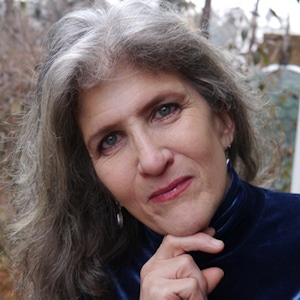
Marion Winik ** ** is the author of nine books, including The Big Book of the Dead (Counterpoint, 2019) and First Comes Love (Vintage, 1997). Her essays have been published in The New York Times , AGNI , The Sun , and elsewhere; her column at BaltimoreFishbowl.com has been running since 2011. A professor at the University of Baltimore, she reviews books for The Washington Post , Oprah Daily , and People and hosts the NPR podcast The Weekly Reader . She was a commentator on NPR’s All Things Considered for fifteen years. marionwinik.com (updated 4/2024)
- Craft and Criticism
- Fiction and Poetry
- News and Culture
- Lit Hub Radio
- Reading Lists

- Literary Criticism
- Craft and Advice
- In Conversation
- On Translation
- Short Story
- From the Novel
- Bookstores and Libraries
- Film and TV
- Art and Photography
- Freeman’s
- The Virtual Book Channel
- Behind the Mic
- Beyond the Page
- The Cosmic Library
- The Critic and Her Publics
- Emergence Magazine
- Fiction/Non/Fiction
- First Draft: A Dialogue on Writing
- Future Fables
- The History of Literature
- I’m a Writer But
- Just the Right Book
- Lit Century
- The Literary Life with Mitchell Kaplan
- New Books Network
- Tor Presents: Voyage Into Genre
- Windham-Campbell Prizes Podcast
- Write-minded
- The Best of the Decade
- Best Reviewed Books
- BookMarks Daily Giveaway
- The Daily Thrill
- CrimeReads Daily Giveaway

The 10 Best Essay Collections of the Decade
Ever tried. ever failed. no matter..
Friends, it’s true: the end of the decade approaches. It’s been a difficult, anxiety-provoking, morally compromised decade, but at least it’s been populated by some damn fine literature. We’ll take our silver linings where we can.
So, as is our hallowed duty as a literary and culture website—though with full awareness of the potentially fruitless and endlessly contestable nature of the task—in the coming weeks, we’ll be taking a look at the best and most important (these being not always the same) books of the decade that was. We will do this, of course, by means of a variety of lists. We began with the best debut novels , the best short story collections , the best poetry collections , and the best memoirs of the decade , and we have now reached the fifth list in our series: the best essay collections published in English between 2010 and 2019.
The following books were chosen after much debate (and several rounds of voting) by the Literary Hub staff. Tears were spilled, feelings were hurt, books were re-read. And as you’ll shortly see, we had a hard time choosing just ten—so we’ve also included a list of dissenting opinions, and an even longer list of also-rans. As ever, free to add any of your own favorites that we’ve missed in the comments below.
The Top Ten
Oliver sacks, the mind’s eye (2010).
Toward the end of his life, maybe suspecting or sensing that it was coming to a close, Dr. Oliver Sacks tended to focus his efforts on sweeping intellectual projects like On the Move (a memoir), The River of Consciousness (a hybrid intellectual history), and Hallucinations (a book-length meditation on, what else, hallucinations). But in 2010, he gave us one more classic in the style that first made him famous, a form he revolutionized and brought into the contemporary literary canon: the medical case study as essay. In The Mind’s Eye , Sacks focuses on vision, expanding the notion to embrace not only how we see the world, but also how we map that world onto our brains when our eyes are closed and we’re communing with the deeper recesses of consciousness. Relaying histories of patients and public figures, as well as his own history of ocular cancer (the condition that would eventually spread and contribute to his death), Sacks uses vision as a lens through which to see all of what makes us human, what binds us together, and what keeps us painfully apart. The essays that make up this collection are quintessential Sacks: sensitive, searching, with an expertise that conveys scientific information and experimentation in terms we can not only comprehend, but which also expand how we see life carrying on around us. The case studies of “Stereo Sue,” of the concert pianist Lillian Kalir, and of Howard, the mystery novelist who can no longer read, are highlights of the collection, but each essay is a kind of gem, mined and polished by one of the great storytellers of our era. –Dwyer Murphy, CrimeReads Managing Editor
John Jeremiah Sullivan, Pulphead (2011)
The American essay was having a moment at the beginning of the decade, and Pulphead was smack in the middle. Without any hard data, I can tell you that this collection of John Jeremiah Sullivan’s magazine features—published primarily in GQ , but also in The Paris Review , and Harper’s —was the only full book of essays most of my literary friends had read since Slouching Towards Bethlehem , and probably one of the only full books of essays they had even heard of.
Well, we all picked a good one. Every essay in Pulphead is brilliant and entertaining, and illuminates some small corner of the American experience—even if it’s just one house, with Sullivan and an aging writer inside (“Mr. Lytle” is in fact a standout in a collection with no filler; fittingly, it won a National Magazine Award and a Pushcart Prize). But what are they about? Oh, Axl Rose, Christian Rock festivals, living around the filming of One Tree Hill , the Tea Party movement, Michael Jackson, Bunny Wailer, the influence of animals, and by god, the Miz (of Real World/Road Rules Challenge fame).
But as Dan Kois has pointed out , what connects these essays, apart from their general tone and excellence, is “their author’s essential curiosity about the world, his eye for the perfect detail, and his great good humor in revealing both his subjects’ and his own foibles.” They are also extremely well written, drawing much from fictional techniques and sentence craft, their literary pleasures so acute and remarkable that James Wood began his review of the collection in The New Yorker with a quiz: “Are the following sentences the beginnings of essays or of short stories?” (It was not a hard quiz, considering the context.)
It’s hard not to feel, reading this collection, like someone reached into your brain, took out the half-baked stuff you talk about with your friends, researched it, lived it, and represented it to you smarter and better and more thoroughly than you ever could. So read it in awe if you must, but read it. –Emily Temple, Senior Editor
Aleksandar Hemon, The Book of My Lives (2013)
Such is the sentence-level virtuosity of Aleksandar Hemon—the Bosnian-American writer, essayist, and critic—that throughout his career he has frequently been compared to the granddaddy of borrowed language prose stylists: Vladimir Nabokov. While it is, of course, objectively remarkable that anyone could write so beautifully in a language they learned in their twenties, what I admire most about Hemon’s work is the way in which he infuses every essay and story and novel with both a deep humanity and a controlled (but never subdued) fury. He can also be damn funny. Hemon grew up in Sarajevo and left in 1992 to study in Chicago, where he almost immediately found himself stranded, forced to watch from afar as his beloved home city was subjected to a relentless four-year bombardment, the longest siege of a capital in the history of modern warfare. This extraordinary memoir-in-essays is many things: it’s a love letter to both the family that raised him and the family he built in exile; it’s a rich, joyous, and complex portrait of a place the 90s made synonymous with war and devastation; and it’s an elegy for the wrenching loss of precious things. There’s an essay about coming of age in Sarajevo and another about why he can’t bring himself to leave Chicago. There are stories about relationships forged and maintained on the soccer pitch or over the chessboard, and stories about neighbors and mentors turned monstrous by ethnic prejudice. As a chorus they sing with insight, wry humor, and unimaginable sorrow. I am not exaggerating when I say that the collection’s devastating final piece, “The Aquarium”—which details his infant daughter’s brain tumor and the agonizing months which led up to her death—remains the most painful essay I have ever read. –Dan Sheehan, Book Marks Editor
Robin Wall Kimmerer, Braiding Sweetgrass (2013)
Of every essay in my relentlessly earmarked copy of Braiding Sweetgrass , Dr. Robin Wall Kimmerer’s gorgeously rendered argument for why and how we should keep going, there’s one that especially hits home: her account of professor-turned-forester Franz Dolp. When Dolp, several decades ago, revisited the farm that he had once shared with his ex-wife, he found a scene of destruction: The farm’s new owners had razed the land where he had tried to build a life. “I sat among the stumps and the swirling red dust and I cried,” he wrote in his journal.
So many in my generation (and younger) feel this kind of helplessness–and considerable rage–at finding ourselves newly adult in a world where those in power seem determined to abandon or destroy everything that human bodies have always needed to survive: air, water, land. Asking any single book to speak to this helplessness feels unfair, somehow; yet, Braiding Sweetgrass does, by weaving descriptions of indigenous tradition with the environmental sciences in order to show what survival has looked like over the course of many millennia. Kimmerer’s essays describe her personal experience as a Potawotami woman, plant ecologist, and teacher alongside stories of the many ways that humans have lived in relationship to other species. Whether describing Dolp’s work–he left the stumps for a life of forest restoration on the Oregon coast–or the work of others in maple sugar harvesting, creating black ash baskets, or planting a Three Sisters garden of corn, beans, and squash, she brings hope. “In ripe ears and swelling fruit, they counsel us that all gifts are multiplied in relationship,” she writes of the Three Sisters, which all sustain one another as they grow. “This is how the world keeps going.” –Corinne Segal, Senior Editor
Hilton Als, White Girls (2013)
In a world where we are so often reduced to one essential self, Hilton Als’ breathtaking book of critical essays, White Girls , which meditates on the ways he and other subjects read, project and absorb parts of white femininity, is a radically liberating book. It’s one of the only works of critical thinking that doesn’t ask the reader, its author or anyone he writes about to stoop before the doorframe of complete legibility before entering. Something he also permitted the subjects and readers of his first book, the glorious book-length essay, The Women , a series of riffs and psychological portraits of Dorothy Dean, Owen Dodson, and the author’s own mother, among others. One of the shifts of that book, uncommon at the time, was how it acknowledges the way we inhabit bodies made up of variously gendered influences. To read White Girls now is to experience the utter freedom of this gift and to marvel at Als’ tremendous versatility and intelligence.
He is easily the most diversely talented American critic alive. He can write into genres like pop music and film where being part of an audience is a fantasy happening in the dark. He’s also wired enough to know how the art world builds reputations on the nod of rich white patrons, a significant collision in a time when Jean-Michel Basquiat is America’s most expensive modern artist. Als’ swerving and always moving grip on performance means he’s especially good on describing the effect of art which is volatile and unstable and built on the mingling of made-up concepts and the hard fact of their effect on behavior, such as race. Writing on Flannery O’Connor for instance he alone puts a finger on her “uneasy and unavoidable union between black and white, the sacred and the profane, the shit and the stars.” From Eminem to Richard Pryor, André Leon Talley to Michael Jackson, Als enters the life and work of numerous artists here who turn the fascinations of race and with whiteness into fury and song and describes the complexity of their beauty like his life depended upon it. There are also brief memoirs here that will stop your heart. This is an essential work to understanding American culture. –John Freeman, Executive Editor
Eula Biss, On Immunity (2014)
We move through the world as if we can protect ourselves from its myriad dangers, exercising what little agency we have in an effort to keep at bay those fears that gather at the edges of any given life: of loss, illness, disaster, death. It is these fears—amplified by the birth of her first child—that Eula Biss confronts in her essential 2014 essay collection, On Immunity . As any great essayist does, Biss moves outward in concentric circles from her own very private view of the world to reveal wider truths, discovering as she does a culture consumed by anxiety at the pervasive toxicity of contemporary life. As Biss interrogates this culture—of privilege, of whiteness—she interrogates herself, questioning the flimsy ways in which we arm ourselves with science or superstition against the impurities of daily existence.
Five years on from its publication, it is dismaying that On Immunity feels as urgent (and necessary) a defense of basic science as ever. Vaccination, we learn, is derived from vacca —for cow—after the 17th-century discovery that a small application of cowpox was often enough to inoculate against the scourge of smallpox, an etymological digression that belies modern conspiratorial fears of Big Pharma and its vaccination agenda. But Biss never scolds or belittles the fears of others, and in her generosity and openness pulls off a neat (and important) trick: insofar as we are of the very world we fear, she seems to be suggesting, we ourselves are impure, have always been so, permeable, vulnerable, yet so much stronger than we think. –Jonny Diamond, Editor-in-Chief
Rebecca Solnit, The Mother of All Questions (2016)
When Rebecca Solnit’s essay, “Men Explain Things to Me,” was published in 2008, it quickly became a cultural phenomenon unlike almost any other in recent memory, assigning language to a behavior that almost every woman has witnessed—mansplaining—and, in the course of identifying that behavior, spurring a movement, online and offline, to share the ways in which patriarchal arrogance has intersected all our lives. (It would also come to be the titular essay in her collection published in 2014.) The Mother of All Questions follows up on that work and takes it further in order to examine the nature of self-expression—who is afforded it and denied it, what institutions have been put in place to limit it, and what happens when it is employed by women. Solnit has a singular gift for describing and decoding the misogynistic dynamics that govern the world so universally that they can seem invisible and the gendered violence that is so common as to seem unremarkable; this naming is powerful, and it opens space for sharing the stories that shape our lives.
The Mother of All Questions, comprised of essays written between 2014 and 2016, in many ways armed us with some of the tools necessary to survive the gaslighting of the Trump years, in which many of us—and especially women—have continued to hear from those in power that the things we see and hear do not exist and never existed. Solnit also acknowledges that labels like “woman,” and other gendered labels, are identities that are fluid in reality; in reviewing the book for The New Yorker , Moira Donegan suggested that, “One useful working definition of a woman might be ‘someone who experiences misogyny.'” Whichever words we use, Solnit writes in the introduction to the book that “when words break through unspeakability, what was tolerated by a society sometimes becomes intolerable.” This storytelling work has always been vital; it continues to be vital, and in this book, it is brilliantly done. –Corinne Segal, Senior Editor
Valeria Luiselli, Tell Me How It Ends (2017)
The newly minted MacArthur fellow Valeria Luiselli’s four-part (but really six-part) essay Tell Me How It Ends: An Essay in Forty Questions was inspired by her time spent volunteering at the federal immigration court in New York City, working as an interpreter for undocumented, unaccompanied migrant children who crossed the U.S.-Mexico border. Written concurrently with her novel Lost Children Archive (a fictional exploration of the same topic), Luiselli’s essay offers a fascinating conceit, the fashioning of an argument from the questions on the government intake form given to these children to process their arrivals. (Aside from the fact that this essay is a heartbreaking masterpiece, this is such a good conceit—transforming a cold, reproducible administrative document into highly personal literature.) Luiselli interweaves a grounded discussion of the questionnaire with a narrative of the road trip Luiselli takes with her husband and family, across America, while they (both Mexican citizens) wait for their own Green Card applications to be processed. It is on this trip when Luiselli reflects on the thousands of migrant children mysteriously traveling across the border by themselves. But the real point of the essay is to actually delve into the real stories of some of these children, which are agonizing, as well as to gravely, clearly expose what literally happens, procedural, when they do arrive—from forms to courts, as they’re swallowed by a bureaucratic vortex. Amid all of this, Luiselli also takes on more, exploring the larger contextual relationship between the United States of America and Mexico (as well as other countries in Central America, more broadly) as it has evolved to our current, adverse moment. Tell Me How It Ends is so small, but it is so passionate and vigorous: it desperately accomplishes in its less-than-100-pages-of-prose what centuries and miles and endless records of federal bureaucracy have never been able, and have never cared, to do: reverse the dehumanization of Latin American immigrants that occurs once they set foot in this country. –Olivia Rutigliano, CrimeReads Editorial Fellow
Zadie Smith, Feel Free (2018)
In the essay “Meet Justin Bieber!” in Feel Free , Zadie Smith writes that her interest in Justin Bieber is not an interest in the interiority of the singer himself, but in “the idea of the love object”. This essay—in which Smith imagines a meeting between Bieber and the late philosopher Martin Buber (“Bieber and Buber are alternative spellings of the same German surname,” she explains in one of many winning footnotes. “Who am I to ignore these hints from the universe?”). Smith allows that this premise is a bit premise -y: “I know, I know.” Still, the resulting essay is a very funny, very smart, and un-tricky exploration of individuality and true “meeting,” with a dash of late capitalism thrown in for good measure. The melding of high and low culture is the bread and butter of pretty much every prestige publication on the internet these days (and certainly of the Twitter feeds of all “public intellectuals”), but the essays in Smith’s collection don’t feel familiar—perhaps because hers is, as we’ve long known, an uncommon skill. Though I believe Smith could probably write compellingly about anything, she chooses her subjects wisely. She writes with as much electricity about Brexit as the aforementioned Beliebers—and each essay is utterly engrossing. “She contains multitudes, but her point is we all do,” writes Hermione Hoby in her review of the collection in The New Republic . “At the same time, we are, in our endless difference, nobody but ourselves.” –Jessie Gaynor, Social Media Editor
Tressie McMillan Cottom, Thick: And Other Essays (2019)
Tressie McMillan Cottom is an academic who has transcended the ivory tower to become the sort of public intellectual who can easily appear on radio or television talk shows to discuss race, gender, and capitalism. Her collection of essays reflects this duality, blending scholarly work with memoir to create a collection on the black female experience in postmodern America that’s “intersectional analysis with a side of pop culture.” The essays range from an analysis of sexual violence, to populist politics, to social media, but in centering her own experiences throughout, the collection becomes something unlike other pieces of criticism of contemporary culture. In explaining the title, she reflects on what an editor had said about her work: “I was too readable to be academic, too deep to be popular, too country black to be literary, and too naïve to show the rigor of my thinking in the complexity of my prose. I had wanted to create something meaningful that sounded not only like me, but like all of me. It was too thick.” One of the most powerful essays in the book is “Dying to be Competent” which begins with her unpacking the idiocy of LinkedIn (and the myth of meritocracy) and ends with a description of her miscarriage, the mishandling of black woman’s pain, and a condemnation of healthcare bureaucracy. A finalist for the 2019 National Book Award for Nonfiction, Thick confirms McMillan Cottom as one of our most fearless public intellectuals and one of the most vital. –Emily Firetog, Deputy Editor
Dissenting Opinions
The following books were just barely nudged out of the top ten, but we (or at least one of us) couldn’t let them pass without comment.
Elif Batuman, The Possessed (2010)
In The Possessed Elif Batuman indulges her love of Russian literature and the result is hilarious and remarkable. Each essay of the collection chronicles some adventure or other that she had while in graduate school for Comparative Literature and each is more unpredictable than the next. There’s the time a “well-known 20th-centuryist” gave a graduate student the finger; and the time when Batuman ended up living in Samarkand, Uzbekistan, for a summer; and the time that she convinced herself Tolstoy was murdered and spent the length of the Tolstoy Conference in Yasnaya Polyana considering clues and motives. Rich in historic detail about Russian authors and literature and thoughtfully constructed, each essay is an amalgam of critical analysis, cultural criticism, and serious contemplation of big ideas like that of identity, intellectual legacy, and authorship. With wit and a serpentine-like shape to her narratives, Batuman adopts a form reminiscent of a Socratic discourse, setting up questions at the beginning of her essays and then following digressions that more or less entreat the reader to synthesize the answer for herself. The digressions are always amusing and arguably the backbone of the collection, relaying absurd anecdotes with foreign scholars or awkward, surreal encounters with Eastern European strangers. Central also to the collection are Batuman’s intellectual asides where she entertains a theory—like the “problem of the person”: the inability to ever wholly capture one’s character—that ultimately layer the book’s themes. “You are certainly my most entertaining student,” a professor said to Batuman. But she is also curious and enthusiastic and reflective and so knowledgeable that she might even convince you (she has me!) that you too love Russian literature as much as she does. –Eleni Theodoropoulos, Editorial Fellow
Roxane Gay, Bad Feminist (2014)
Roxane Gay’s now-classic essay collection is a book that will make you laugh, think, cry, and then wonder, how can cultural criticism be this fun? My favorite essays in the book include Gay’s musings on competitive Scrabble, her stranded-in-academia dispatches, and her joyous film and television criticism, but given the breadth of topics Roxane Gay can discuss in an entertaining manner, there’s something for everyone in this one. This book is accessible because feminism itself should be accessible – Roxane Gay is as likely to draw inspiration from YA novels, or middle-brow shows about friendship, as she is to introduce concepts from the academic world, and if there’s anyone I trust to bridge the gap between high culture, low culture, and pop culture, it’s the Goddess of Twitter. I used to host a book club dedicated to radical reads, and this was one of the first picks for the club; a week after the book club met, I spied a few of the attendees meeting in the café of the bookstore, and found out that they had bonded so much over discussing Bad Feminist that they couldn’t wait for the next meeting of the book club to keep discussing politics and intersectionality, and that, in a nutshell, is the power of Roxane. –Molly Odintz, CrimeReads Associate Editor
Rivka Galchen, Little Labors (2016)
Generally, I find stories about the trials and tribulations of child-having to be of limited appeal—useful, maybe, insofar as they offer validation that other people have also endured the bizarre realities of living with a tiny human, but otherwise liable to drift into the musings of parents thrilled at the simple fact of their own fecundity, as if they were the first ones to figure the process out (or not). But Little Labors is not simply an essay collection about motherhood, perhaps because Galchen initially “didn’t want to write about” her new baby—mostly, she writes, “because I had never been interested in babies, or mothers; in fact, those subjects had seemed perfectly not interesting to me.” Like many new mothers, though, Galchen soon discovered her baby—which she refers to sometimes as “the puma”—to be a preoccupying thought, demanding to be written about. Galchen’s interest isn’t just in her own progeny, but in babies in literature (“Literature has more dogs than babies, and also more abortions”), The Pillow Book , the eleventh-century collection of musings by Sei Shōnagon, and writers who are mothers. There are sections that made me laugh out loud, like when Galchen continually finds herself in an elevator with a neighbor who never fails to remark on the puma’s size. There are also deeper, darker musings, like the realization that the baby means “that it’s not permissible to die. There are days when this does not feel good.” It is a slim collection that I happened to read at the perfect time, and it remains one of my favorites of the decade. –Emily Firetog, Deputy Editor
Charlie Fox, This Young Monster (2017)
On social media as in his writing, British art critic Charlie Fox rejects lucidity for allusion and doesn’t quite answer the Twitter textbox’s persistent question: “What’s happening?” These days, it’s hard to tell. This Young Monster (2017), Fox’s first book,was published a few months after Donald Trump’s election, and at one point Fox takes a swipe at a man he judges “direct from a nightmare and just a repulsive fucking goon.” Fox doesn’t linger on politics, though, since most of the monsters he looks at “embody otherness and make it into art, ripping any conventional idea of beauty to shreds and replacing it with something weird and troubling of their own invention.”
If clichés are loathed because they conform to what philosopher Georges Bataille called “the common measure,” then monsters are rebellious non-sequiturs, comedic or horrific derailments from a classical ideal. Perverts in the most literal sense, monsters have gone astray from some “proper” course. The book’s nine chapters, which are about a specific monster or type of monster, are full of callbacks to familiar and lesser-known media. Fox cites visual art, film, songs, and books with the screwy buoyancy of a savant. Take one of his essays, “Spook House,” framed as a stage play with two principal characters, Klaus (“an intoxicated young skinhead vampire”) and Hermione (“a teen sorceress with green skin and jet-black hair” who looks more like The Wicked Witch than her namesake). The chorus is a troupe of trick-or-treaters. Using the filmmaker Cameron Jamie as a starting point, the rest is free association on gothic decadence and Detroit and L.A. as cities of the dead. All the while, Klaus quotes from Artforum , Dazed & Confused , and Time Out. It’s a technical feat that makes fictionalized dialogue a conveyor belt for cultural criticism.
In Fox’s imagination, David Bowie and the Hydra coexist alongside Peter Pan, Dennis Hopper, and the maenads. Fox’s book reaches for the monster’s mask, not really to peel it off but to feel and smell the rubber schnoz, to know how it’s made before making sure it’s still snugly set. With a stylistic blend of arthouse suavity and B-movie chic, This Young Monster considers how monsters in culture are made. Aren’t the scariest things made in post-production? Isn’t the creature just duplicity, like a looping choir or a dubbed scream? –Aaron Robertson, Assistant Editor
Elena Passarello, Animals Strike Curious Poses (2017)
Elena Passarello’s collection of essays Animals Strike Curious Poses picks out infamous animals and grants them the voice, narrative, and history they deserve. Not only is a collection like this relevant during the sixth extinction but it is an ambitious historical and anthropological undertaking, which Passarello has tackled with thorough research and a playful tone that rather than compromise her subject, complicates and humanizes it. Passarello’s intention is to investigate the role of animals across the span of human civilization and in doing so, to construct a timeline of humanity as told through people’s interactions with said animals. “Of all the images that make our world, animal images are particularly buried inside us,” Passarello writes in her first essay, to introduce us to the object of the book and also to the oldest of her chosen characters: Yuka, a 39,000-year-old mummified woolly mammoth discovered in the Siberian permafrost in 2010. It was an occasion so remarkable and so unfathomable given the span of human civilization that Passarello says of Yuka: “Since language is epically younger than both thought and experience, ‘woolly mammoth’ means, to a human brain, something more like time.” The essay ends with a character placing a hand on a cave drawing of a woolly mammoth, accompanied by a phrase which encapsulates the author’s vision for the book: “And he becomes the mammoth so he can envision the mammoth.” In Passarello’s hands the imagined boundaries between the animal, natural, and human world disintegrate and what emerges is a cohesive if baffling integrated history of life. With the accuracy and tenacity of a journalist and the spirit of a storyteller, Elena Passarello has assembled a modern bestiary worthy of contemplation and awe. –Eleni Theodoropoulos, Editorial Fellow
Esmé Weijun Wang, The Collected Schizophrenias (2019)
Esmé Weijun Wang’s collection of essays is a kaleidoscopic look at mental health and the lives affected by the schizophrenias. Each essay takes on a different aspect of the topic, but you’ll want to read them together for a holistic perspective. Esmé Weijun Wang generously begins The Collected Schizophrenias by acknowledging the stereotype, “Schizophrenia terrifies. It is the archetypal disorder of lunacy.” From there, she walks us through the technical language, breaks down the Diagnostic and Statistical Manual ( DSM-5 )’s clinical definition. And then she gets very personal, telling us about how she came to her own diagnosis and the way it’s touched her daily life (her relationships, her ideas about motherhood). Esmé Weijun Wang is uniquely situated to write about this topic. As a former lab researcher at Stanford, she turns a precise, analytical eye to her experience while simultaneously unfolding everything with great patience for her reader. Throughout, she brilliantly dissects the language around mental health. (On saying “a person living with bipolar disorder” instead of using “bipolar” as the sole subject: “…we are not our diseases. We are instead individuals with disorders and malfunctions. Our conditions lie over us like smallpox blankets; we are one thing and the illness is another.”) She pinpoints the ways she arms herself against anticipated reactions to the schizophrenias: high fashion, having attended an Ivy League institution. In a particularly piercing essay, she traces mental illness back through her family tree. She also places her story within more mainstream cultural contexts, calling on groundbreaking exposés about the dangerous of institutionalization and depictions of mental illness in television and film (like the infamous Slender Man case, in which two young girls stab their best friend because an invented Internet figure told them to). At once intimate and far-reaching, The Collected Schizophrenias is an informative and important (and let’s not forget artful) work. I’ve never read a collection quite so beautifully-written and laid-bare as this. –Katie Yee, Book Marks Assistant Editor
Ross Gay, The Book of Delights (2019)
When Ross Gay began writing what would become The Book of Delights, he envisioned it as a project of daily essays, each focused on a moment or point of delight in his day. This plan quickly disintegrated; on day four, he skipped his self-imposed assignment and decided to “in honor and love, delight in blowing it off.” (Clearly, “blowing it off” is a relative term here, as he still produced the book.) Ross Gay is a generous teacher of how to live, and this moment of reveling in self-compassion is one lesson among many in The Book of Delights , which wanders from moments of connection with strangers to a shade of “red I don’t think I actually have words for,” a text from a friend reading “I love you breadfruit,” and “the sun like a guiding hand on my back, saying everything is possible. Everything .”
Gay does not linger on any one subject for long, creating the sense that delight is a product not of extenuating circumstances, but of our attention; his attunement to the possibilities of a single day, and awareness of all the small moments that produce delight, are a model for life amid the warring factions of the attention economy. These small moments range from the physical–hugging a stranger, transplanting fig cuttings–to the spiritual and philosophical, giving the impression of sitting beside Gay in his garden as he thinks out loud in real time. It’s a privilege to listen. –Corinne Segal, Senior Editor
Honorable Mentions
A selection of other books that we seriously considered for both lists—just to be extra about it (and because decisions are hard).
Terry Castle, The Professor and Other Writings (2010) · Joyce Carol Oates, In Rough Country (2010) · Geoff Dyer, Otherwise Known as the Human Condition (2011) · Christopher Hitchens, Arguably (2011) · Roberto Bolaño, tr. Natasha Wimmer, Between Parentheses (2011) · Dubravka Ugresic, tr. David Williams, Karaoke Culture (2011) · Tom Bissell, Magic Hours (2012) · Kevin Young, The Grey Album (2012) · William H. Gass, Life Sentences: Literary Judgments and Accounts (2012) · Mary Ruefle, Madness, Rack, and Honey (2012) · Herta Müller, tr. Geoffrey Mulligan, Cristina and Her Double (2013) · Leslie Jamison, The Empathy Exams (2014) · Meghan Daum, The Unspeakable (2014) · Daphne Merkin, The Fame Lunches (2014) · Charles D’Ambrosio, Loitering (2015) · Wendy Walters, Multiply/Divide (2015) · Colm Tóibín, On Elizabeth Bishop (2015) · Renee Gladman, Calamities (2016) · Jesmyn Ward, ed. The Fire This Time (2016) · Lindy West, Shrill (2016) · Mary Oliver, Upstream (2016) · Emily Witt, Future Sex (2016) · Olivia Laing, The Lonely City (2016) · Mark Greif, Against Everything (2016) · Durga Chew-Bose, Too Much and Not the Mood (2017) · Sarah Gerard, Sunshine State (2017) · Jim Harrison, A Really Big Lunch (2017) · J.M. Coetzee, Late Essays: 2006-2017 (2017) · Melissa Febos, Abandon Me (2017) · Louise Glück, American Originality (2017) · Joan Didion, South and West (2017) · Tom McCarthy, Typewriters, Bombs, Jellyfish (2017) · Hanif Abdurraqib, They Can’t Kill Us Until they Kill Us (2017) · Ta-Nehisi Coates, We Were Eight Years in Power (2017) · Samantha Irby, We Are Never Meeting in Real Life (2017) · Alexander Chee, How to Write an Autobiographical Novel (2018) · Alice Bolin, Dead Girls (2018) · Marilynne Robinson, What Are We Doing Here? (2018) · Lorrie Moore, See What Can Be Done (2018) · Maggie O’Farrell, I Am I Am I Am (2018) · Ijeoma Oluo, So You Want to Talk About Race (2018) · Rachel Cusk, Coventry (2019) · Jia Tolentino, Trick Mirror (2019) · Emily Bernard, Black is the Body (2019) · Toni Morrison, The Source of Self-Regard (2019) · Margaret Renkl, Late Migrations (2019) · Rachel Munroe, Savage Appetites (2019) · Robert A. Caro, Working (2019) · Arundhati Roy, My Seditious Heart (2019).

Emily Temple
Previous article, next article.

- RSS - Posts
Literary Hub
Created by Grove Atlantic and Electric Literature
Sign Up For Our Newsletters
How to Pitch Lit Hub
Advertisers: Contact Us
Privacy Policy
Support Lit Hub - Become A Member
Become a Lit Hub Supporting Member : Because Books Matter
For the past decade, Literary Hub has brought you the best of the book world for free—no paywall. But our future relies on you. In return for a donation, you’ll get an ad-free reading experience , exclusive editors’ picks, book giveaways, and our coveted Joan Didion Lit Hub tote bag . Most importantly, you’ll keep independent book coverage alive and thriving on the internet.

Become a member for as low as $5/month
- Skip to main content
- Keyboard shortcuts for audio player
NPR defends its journalism after senior editor says it has lost the public's trust

David Folkenflik

NPR is defending its journalism and integrity after a senior editor wrote an essay accusing it of losing the public's trust. Saul Loeb/AFP via Getty Images hide caption
NPR is defending its journalism and integrity after a senior editor wrote an essay accusing it of losing the public's trust.
NPR's top news executive defended its journalism and its commitment to reflecting a diverse array of views on Tuesday after a senior NPR editor wrote a broad critique of how the network has covered some of the most important stories of the age.
"An open-minded spirit no longer exists within NPR, and now, predictably, we don't have an audience that reflects America," writes Uri Berliner.
A strategic emphasis on diversity and inclusion on the basis of race, ethnicity and sexual orientation, promoted by NPR's former CEO, John Lansing, has fed "the absence of viewpoint diversity," Berliner writes.
NPR's chief news executive, Edith Chapin, wrote in a memo to staff Tuesday afternoon that she and the news leadership team strongly reject Berliner's assessment.
"We're proud to stand behind the exceptional work that our desks and shows do to cover a wide range of challenging stories," she wrote. "We believe that inclusion — among our staff, with our sourcing, and in our overall coverage — is critical to telling the nuanced stories of this country and our world."

NPR names tech executive Katherine Maher to lead in turbulent era
She added, "None of our work is above scrutiny or critique. We must have vigorous discussions in the newsroom about how we serve the public as a whole."
A spokesperson for NPR said Chapin, who also serves as the network's chief content officer, would have no further comment.
Praised by NPR's critics
Berliner is a senior editor on NPR's Business Desk. (Disclosure: I, too, am part of the Business Desk, and Berliner has edited many of my past stories. He did not see any version of this article or participate in its preparation before it was posted publicly.)
Berliner's essay , titled "I've Been at NPR for 25 years. Here's How We Lost America's Trust," was published by The Free Press, a website that has welcomed journalists who have concluded that mainstream news outlets have become reflexively liberal.
Berliner writes that as a Subaru-driving, Sarah Lawrence College graduate who "was raised by a lesbian peace activist mother ," he fits the mold of a loyal NPR fan.
Yet Berliner says NPR's news coverage has fallen short on some of the most controversial stories of recent years, from the question of whether former President Donald Trump colluded with Russia in the 2016 election, to the origins of the virus that causes COVID-19, to the significance and provenance of emails leaked from a laptop owned by Hunter Biden weeks before the 2020 election. In addition, he blasted NPR's coverage of the Israel-Hamas conflict.
On each of these stories, Berliner asserts, NPR has suffered from groupthink due to too little diversity of viewpoints in the newsroom.
The essay ricocheted Tuesday around conservative media , with some labeling Berliner a whistleblower . Others picked it up on social media, including Elon Musk, who has lambasted NPR for leaving his social media site, X. (Musk emailed another NPR reporter a link to Berliner's article with a gibe that the reporter was a "quisling" — a World War II reference to someone who collaborates with the enemy.)
When asked for further comment late Tuesday, Berliner declined, saying the essay spoke for itself.
The arguments he raises — and counters — have percolated across U.S. newsrooms in recent years. The #MeToo sexual harassment scandals of 2016 and 2017 forced newsrooms to listen to and heed more junior colleagues. The social justice movement prompted by the killing of George Floyd in 2020 inspired a reckoning in many places. Newsroom leaders often appeared to stand on shaky ground.
Leaders at many newsrooms, including top editors at The New York Times and the Los Angeles Times , lost their jobs. Legendary Washington Post Executive Editor Martin Baron wrote in his memoir that he feared his bonds with the staff were "frayed beyond repair," especially over the degree of self-expression his journalists expected to exert on social media, before he decided to step down in early 2021.
Since then, Baron and others — including leaders of some of these newsrooms — have suggested that the pendulum has swung too far.

Author Interviews
Legendary editor marty baron describes his 'collision of power' with trump and bezos.
New York Times publisher A.G. Sulzberger warned last year against journalists embracing a stance of what he calls "one-side-ism": "where journalists are demonstrating that they're on the side of the righteous."
"I really think that that can create blind spots and echo chambers," he said.
Internal arguments at The Times over the strength of its reporting on accusations that Hamas engaged in sexual assaults as part of a strategy for its Oct. 7 attack on Israel erupted publicly . The paper conducted an investigation to determine the source of a leak over a planned episode of the paper's podcast The Daily on the subject, which months later has not been released. The newsroom guild accused the paper of "targeted interrogation" of journalists of Middle Eastern descent.
Heated pushback in NPR's newsroom
Given Berliner's account of private conversations, several NPR journalists question whether they can now trust him with unguarded assessments about stories in real time. Others express frustration that he had not sought out comment in advance of publication. Berliner acknowledged to me that for this story, he did not seek NPR's approval to publish the piece, nor did he give the network advance notice.
Some of Berliner's NPR colleagues are responding heatedly. Fernando Alfonso, a senior supervising editor for digital news, wrote that he wholeheartedly rejected Berliner's critique of the coverage of the Israel-Hamas conflict, for which NPR's journalists, like their peers, periodically put themselves at risk.
Alfonso also took issue with Berliner's concern over the focus on diversity at NPR.
"As a person of color who has often worked in newsrooms with little to no people who look like me, the efforts NPR has made to diversify its workforce and its sources are unique and appropriate given the news industry's long-standing lack of diversity," Alfonso says. "These efforts should be celebrated and not denigrated as Uri has done."
After this story was first published, Berliner contested Alfonso's characterization, saying his criticism of NPR is about the lack of diversity of viewpoints, not its diversity itself.
"I never criticized NPR's priority of achieving a more diverse workforce in terms of race, ethnicity and sexual orientation. I have not 'denigrated' NPR's newsroom diversity goals," Berliner said. "That's wrong."
Questions of diversity
Under former CEO John Lansing, NPR made increasing diversity, both of its staff and its audience, its "North Star" mission. Berliner says in the essay that NPR failed to consider broader diversity of viewpoint, noting, "In D.C., where NPR is headquartered and many of us live, I found 87 registered Democrats working in editorial positions and zero Republicans."
Berliner cited audience estimates that suggested a concurrent falloff in listening by Republicans. (The number of people listening to NPR broadcasts and terrestrial radio broadly has declined since the start of the pandemic.)
Former NPR vice president for news and ombudsman Jeffrey Dvorkin tweeted , "I know Uri. He's not wrong."
Others questioned Berliner's logic. "This probably gets causality somewhat backward," tweeted Semafor Washington editor Jordan Weissmann . "I'd guess that a lot of NPR listeners who voted for [Mitt] Romney have changed how they identify politically."
Similarly, Nieman Lab founder Joshua Benton suggested the rise of Trump alienated many NPR-appreciating Republicans from the GOP.
In recent years, NPR has greatly enhanced the percentage of people of color in its workforce and its executive ranks. Four out of 10 staffers are people of color; nearly half of NPR's leadership team identifies as Black, Asian or Latino.
"The philosophy is: Do you want to serve all of America and make sure it sounds like all of America, or not?" Lansing, who stepped down last month, says in response to Berliner's piece. "I'd welcome the argument against that."
"On radio, we were really lagging in our representation of an audience that makes us look like what America looks like today," Lansing says. The U.S. looks and sounds a lot different than it did in 1971, when NPR's first show was broadcast, Lansing says.
A network spokesperson says new NPR CEO Katherine Maher supports Chapin and her response to Berliner's critique.
The spokesperson says that Maher "believes that it's a healthy thing for a public service newsroom to engage in rigorous consideration of the needs of our audiences, including where we serve our mission well and where we can serve it better."
Disclosure: This story was reported and written by NPR Media Correspondent David Folkenflik and edited by Deputy Business Editor Emily Kopp and Managing Editor Gerry Holmes. Under NPR's protocol for reporting on itself, no NPR corporate official or news executive reviewed this story before it was posted publicly.
Please fill the form correctly

- Dissertation Chapter - Abstract
- Dissertation Chapter - Introduction Chapter
- Dissertation Chapter - Literature Review
- Dissertation Chapter - Methodology
- Dissertation Chapter - Results
- Dissertation Chapter - Discussion
- Dissertation Chapter - Hypothesis
- Dissertation Chapter - Conclusion Chapter

- FanNation FanNation FanNation
- Swimsuit SI Swimsuit SI Swimsuit
- Sportsbook SI Sportsbook SI Sportsbook
- Tickets SI Tickets SI Tickets
- Shop SI Shop SI Shop
- What's on TV
- Soccer Soccer Soccer
- Home Home Home
- Scores & Schedules Scores & Schedules Scores & Schedules
- Standings Standings Standings
- Stats Stats Statistics
- Injuries Injuries Injuries
- Futures Futures Futures
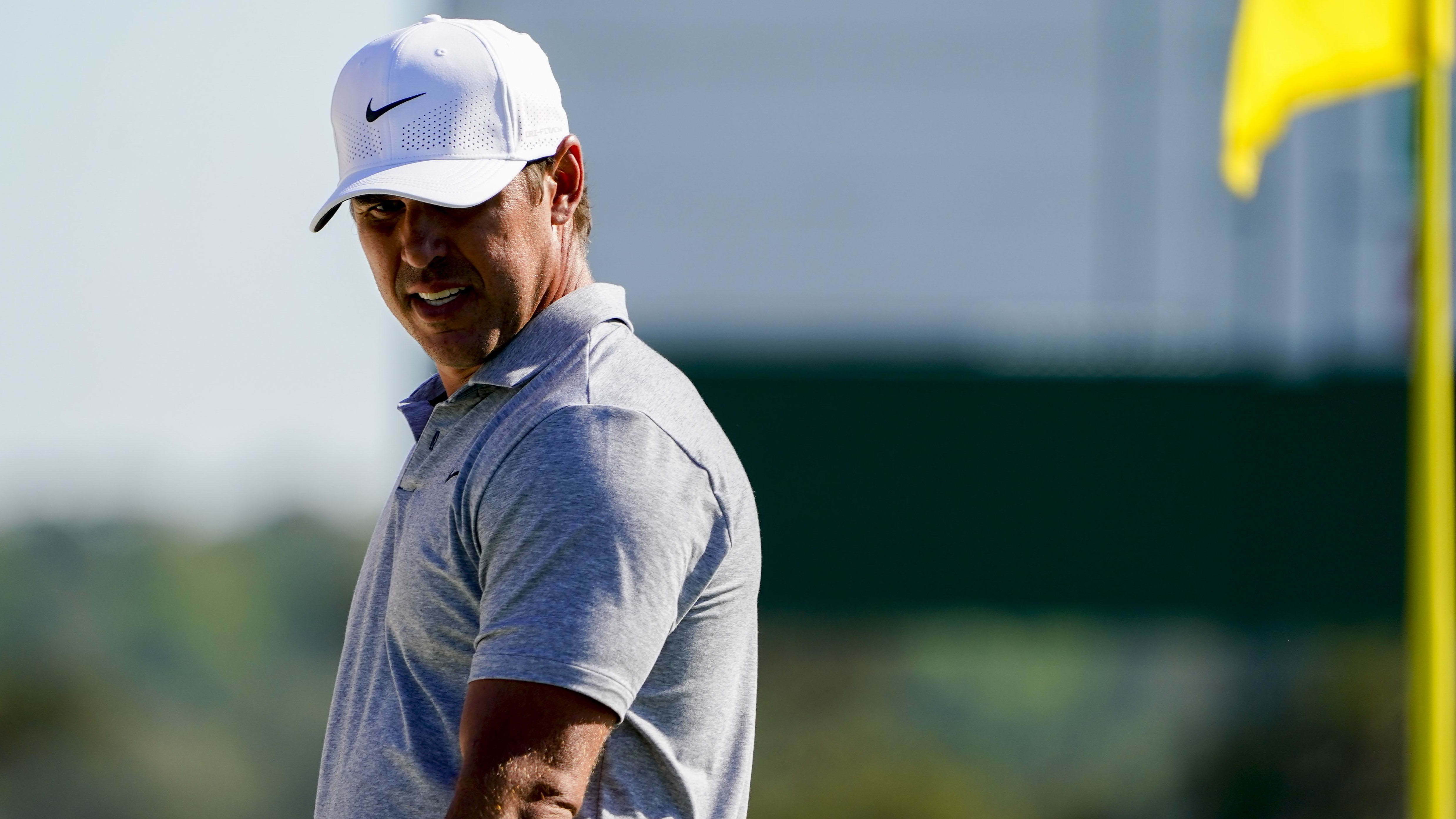
Masters Round 3 Winners and Losers: Augusta National’s Teeth, Brooks Koepka and One More Round With Verne Lundquist
- Author: SI Golf Staff
AUGUSTA, Ga. – Day 3 of the 2024 Masters is in the books, and there are winners and losers going into championship Sunday. We call ’em like we see ’em around here. They are:
Augusta National : With a heavy breeze Saturday, the golf course didn’t give up a lot of low scores. Scottie Scheffler played a solid round of golf , but not a great one. Collin Morikawa played a terrific round and has an excellent chance to win. So when people talk about lengthening Augusta to 8,000 yards? Not so fast. A little breeze and fast greens have a way of leveling the playing field.
Collin Morikawa: He played the best round among the leaders, finishing with a 3-under 69, including four birdies in his first eight holes. He had 10 consecutive pars to finish his round and is one stroke behind Scheffler. He will play in the final group with Scheffler on Sunday. Game on.
Max Homa: The Californian started Saturday with a share of the lead and a round of 17 pars and one bogey kept him squarely in the hunt. Playing in the penultimate pairing with Ludvig Åberg might be perfect for Homa given how he’s chasing his first major title.
Chris Kirk: The University of Georgia product has won six times on Tour but Saturday’s low round of 68 has to be among his very best.
Jon Rahm: There will be no repeat for the 2023 winner, who squeezed inside the cut at 5 over and had a quiet, even-par Saturday. Will be interesting to see if he has more fight next month at the PGA Championship or if a narrative starts to develop about his game now that he’s with LIV Golf.
Brooks Koepka: The Big Game Hunter who lives for majors has been a non-factor this week with rounds of 73-73-76. He came to Augusta off a 77-77 weekend at Doral, which many disregarded but maybe there was something to that.
Golf fans: It’s starting to set in that we’re about to lose Verne Lundquist from our TV screens. When Bryson DeChambeau three-putted the par-3 16th, immediately after a double bogey at 15, the legend delivered another great quip in saying the wheels had come off and now the rims were, too. Man, is he going to be missed.
Latest News

Jamaica vs. United States Predictions: CONCACAF Nations League Semifinals
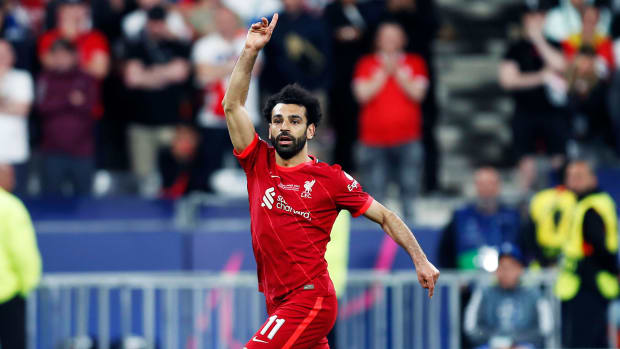
Liverpool vs. Manchester United Predictions: FA Cup QF Picks Today, 3/17

Chicago Fire Win MLS Game With Nonsensical Last-Second Goal From Midfield

Brittany and Patrick Mahomes Were So Hyped During Kansas City Current’s Season Opener
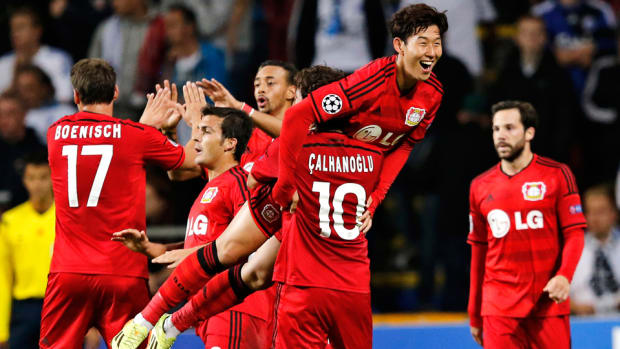
Europa League Predictions Today: Rangers, Benfica, Leverkusen & Liverpool
Advertisement
Annie Jacobsen: 'What if we had a nuclear war?’
The author and Pulitzer prize finalist, who has written the latest pick for the New Scientist Book Club, Nuclear War: A scenario, on the "shocking truths" about a nuclear attack
By Annie Jacobsen
12 April 2024

The Titan nuclear missile in the silo in Arizona, US
Michael Dunning/Getty Images
Not long after the last world war, the historian William L. Shirer had this to say about the next world war. It “will be launched by suicidal little madmen pressing an electronic button. Such a war will not last long and none will ever follow it. There will be no conquers and no conquests, but only the charred bones of the dead on an uninhabited planet.”
As an investigative journalist, I write about war, weapons, national security and government secrets. I’ve previously written six books about US military and intelligence programmes – at the CIA, The Pentagon, Defense Advanced Research Projects Agency– all designed to prevent, or deter, nuclear world war III . In the course of my work, countless people in the upper echelons of US government have told me, proudly, that they’ve dedicated their lives to making sure the US never has a nuclear war. But what if it did?
“Every capability in the [Department of Defense] is underpinned by the fact that strategic deterrence will hold,” US Strategic Command (STRATCOM), which is responsible for nuclear deterrence, insists publicly. Until the autumn of 2022, this promise was pinned on STRATCOM’s public Twitter feed. But to a private audience at Sandia National Laboratories later that same year, STRATCOM’s Thomas Bussiere admitted the existential danger inherent to deterrence. “Everything unravels itself if those things are not true.”
If deterrence fails – what exactly would that unravelling look like? To write Nuclear War: A scenario , I put this question to scores of former nuclear command and control authorities. To the military and civilian experts who’ve built the weapon systems, been privy to the response plans and been responsible for advising the US president on nuclear counterstrike decisions should they have to be made. What I learned terrified me. Here are just a few of the shocking truths about nuclear war.
The US maintains a nuclear launch policy called Launch on Warning. This means that if a military satellite indicates the nation is under nuclear attack and a second early-warning radar confirms that information, the president launches nuclear missiles in response. Former secretary of defense William Perry told me: “Once we are warned of a nuclear attack, we prepare to launch. This is policy. We do not wait.”
The US president has sole authority to launch nuclear weapons. He asks permission of no one. Not the secretary of defense, not the chairman of the joint chief of staff, not the US Congress. “The authority is inherent in his role as commander in chief,” the Congressional Research Service confirms. The president “does not need the concurrence of either his [or her] military advisors or the US Congress to order the launch of nuclear weapons”.
When the president learns he must respond to a nuclear attack, he has just 6 minutes to do so. Six minutes is an irrational amount of time to “decide whether to release Armageddon”, President Ronald Reagan lamented in his memoirs. “Six minutes to decide how to respond to a blip on a radar scope… How could anyone apply reason at a time like that?” And yet, the president must respond. This is because it takes roughly just 30 minutes for an intercontinental ballistic missile to get from a launch pad in Russia, North Korea or China to any city in the US, and vice versa. Nuclear-armed submarines can cut that launch-to-target time to 10 minutes, or less.
Today, there are nine nuclear powers, with a combined total of more than 12,500 nuclear weapons ready to be used. The US and Russia each have some 1700 nuclear weapons deployed – weapons that can be launched in seconds or minutes after their respective president gives the command. This is what Shirer meant when he said: “Such a war will not last long and none will ever follow it.”
Nuclear war is the only scenario other than an asteroid strike that could end civilisation in a matter of hours. The soot from burning cities and forests will blot out the sun and cause nuclear winter. Agriculture will fail. Some 5 billion people will die. In the words of former Soviet leader Nikita Khrushchev, “the survivors will envy the dead”.
I wrote Nuclear War: A scenario to demonstrate – in appalling, minute-by-minute detail – just how horrifying a nuclear war would be. “Humanity is one misunderstanding, one miscalculation away from nuclear annihilation,” UN secretary-general António Guterres warned the world in 2022. “This is madness. We must reverse course.”
Nuclear War: A Scenario by Annie Jacobsen, published by Torva (£20.00), is available now. It is the latest pick for the New Scientist Book Club: sign up here to read along with our members
- nuclear physics /
- New Scientist Book Club
Sign up to our weekly newsletter
Receive a weekly dose of discovery in your inbox! We'll also keep you up to date with New Scientist events and special offers.
More from New Scientist
Explore the latest news, articles and features
Read an extract from Nuclear War: A scenario by Annie Jacobsen
The biology of kindness review: living well and prospering.
Subscriber-only
Nuclear War, A scenario review: What if the US faces a first strike?
Martin macinnes: 'science fiction can be many different things', popular articles.
Trending New Scientist articles
- Listening Tests
- Reading Tests
- IELTS Writing Checker
- IELTS Writing Samples
- Free IELTS Speaking Test Online
- Speaking Club
- Vocabularying
- 2024 © IELTSing
- free ielts Listening test practice 2024 with answers
- free ielts Reading tests online 2024 with answers
- Free IELTS Writing Checker
- Check IELTS Speaking Test

About the first book I read

IELTS essay About the first book I read
- The government spends about 220 million pounds a year supporting museums and art galleries in the UK, and a similar amount subsidising the visual and performing arts. This is a huge sum to spend on minority interests, and the money would be better spent on more important things. It should be up to people who enjoy cultural attractions to pay for them. Some articles have reported that the UK government invests millions of dollars a year in museums and galleries, spending less money on visuals and performing arts. I agree that this is beneficial in some ways, I believe that money should be spent on essentials. Museum preserves history and it has e ...
- Some people think that the best way to reduce time spent time in traveling to work is to replace parks and gardens close to City Center with apartment building for commuters, but others disagree discuss both views and give your own In the fast-paced world, relaxing our body and mind is essential because the whole body procedure is dependent on it. Most echelons of the society reckon that public parks and gardens are the greatest method to relax rather than time spending on traveling because parts are easily available near the ...
- Because of the pressure of new subjects such as business studies, many schools have dropped sport of physical education (PE) from the curriculum. How important is sport or PE in a young person's education? In today's modern world, the incorporation of career-oriented subjects such as Business studies in the educational system has removed Physical Education (PE). This is a very big threat to the lives of our younger generations. According to the latest survey in schools and colleges, students are more ...
- People nowadays work hard to buy more things. This has made our live more comfortable, but many traditional values and customs have been lost a and this is a pity, to want extend During those days, the living standard for human beings have significantly increased, modern technologies benefits normal lives. However people purchase goods beyond their needs, causing the valuable customs faded. I completely agree with this view. As employees work harder, their income will incre ...
- In today's competitive world, many families find it necessary for both parents to en to work. While some say the children in these families benefit from the additional income, others feel they lack support because of their parents' absence. What are your opinions on this? The problem of children lacks care has been more note in society. People usually say parents should take the most responsibility for young children, but there are many reasons make the situation out of control. Whole family suffered by busy life and less love. First, why both folks should have jobs ...
- e live today in an electronic information age. It is easier to be connected by technology yet many people seem to no closer to feeling happy in their lives. it is real that we are living in the era of electronic information that we can’t doubt that it is easier to be connected to with technology; however, the involvement of technology still left many people left to live no closer to feeling happy. This essay will discuss these problems. Firstly, nowada ...
- The youth in many countries are unemployed and unskilled, while at the same time, the military services are in need of people. Compulsory military service is beneficial and necessary. with this statement? There is no denying that in most of the countries people, especially adolescents prefer to avoid the military service and start thinking to be part of the work force without having any experience or studies. I strongly agree with the idea of having mandatory military service can bring many benefits ...
- The number of books that were borrowed in four different months in 2014 from four village libraries, and the pie chart shows the percentage of books, by type, that were borrowed over this time. The two sets of data illustrate the quantity of books checked-out in various libraries, during the months of June, July, August and September; additionally depicting the types of books borrowed by percentage. Overall, Sutton Wood’s library had mayor fluctuations, in contrary to the other three whom ...
- An international language would remove one of the main differences separating people of different nationalities, and this would lead to greater international understanding and cooperation. There should be one international language that everyone agrees to learn and speak There are about over a hundred different languages in the world. Every country has its unique language related to either their culture or religon or maybe both. However, in order to comunicate with the rest of the world there. has to be one language that everyone should learn and speak Nevertheless, ...
- Violence in playgrounds is increasing. However, it is important that parents should teach children not to hit back at bullies. Discuss this view and give your own opinion. In recent years violence and bullying have become a serious issues especially between teenagers. We can see that these problems are going up not only among young people but also adults. Parents have different ways to educate their children how to deal with it in case they face it. Schools can be re ...
- Air transport is increasingly used to export fruit and vegetables to countries where they cannot be grown or are out of season. Do the benefits of this trend outweigh the drawbacks? With the growth in aviation, many countries now choose this mode of transport to export food such as fruit and vegetables to places where they are not in season or cannot be grown. I would argue that this has more positive than negative effects. The first positive effect is that it helps local farm ...
- Write a letter to the editor to give your opinion about a magazine that you purchased. Include Why you bought it What you liked and disliked about it Suggestions for improvement Dear editer I've purchased few days ago, your feetball magazine via your website. I received the magine yesterday and I finished reading it this morning, I'm writing you this letter to give you seme foodback I am a football fan and I really enjoy reading feetball news. I have been following footba ...

When shall I pay for the service taken up for the draft writing?
offers a great selection of professional essay writing services. Take advantage of original, plagiarism-free essay writing. Also, separate editing and proofreading services are available, designed for those students who did an essay and seek professional help with polishing it to perfection. In addition, a number of additional essay writing services are available to boost your customer experience to the maximum!
Advanced writer
Add more quality to your essay or be able to obtain a new paper within a day by requesting a top or premium writer to work on your order. The option will increase the price of your order but the final result will be totally worth it.
Top order status
Every day, we receive dozens of orders. To process every order, we need time. If you’re in a great hurry or seek premium service, then choose this additional service. As a result, we’ll process your order and assign a great writer as soon as it’s placed. Maximize your time by giving your order a top status!
SMS updates
Have you already started to write my essay? When it will be finished? If you have occasional questions like that, then opt-in for SMS order status updates to be informed regarding every stage of the writing process. If you’re pressed for time, then we recommend adding this extra to your order.
Plagiarism report
Is my essay original? How do I know it’s Turnitin-ready? Very simple – order us to attach a detailed plagiarism report when work is done so you could rest assured the paper is authentic and can be uploaded to Turnitin without hesitating.
1-page summary
World’s peace isn’t riding on essay writing. If you don’t have any intent on reading the entire 2000-word essay that we did for you, add a 1-page summary to your order, which will be a short overview of your essay one paragraph long, just to be in the loop.

Finished Papers

- Share full article
Advertisement
Supported by
NPR in Turmoil After It Is Accused of Liberal Bias
An essay from an editor at the broadcaster has generated a firestorm of criticism about the network on social media, especially among conservatives.

By Benjamin Mullin and Katie Robertson
NPR is facing both internal tumult and a fusillade of attacks by prominent conservatives this week after a senior editor publicly claimed the broadcaster had allowed liberal bias to affect its coverage, risking its trust with audiences.
Uri Berliner, a senior business editor who has worked at NPR for 25 years, wrote in an essay published Tuesday by The Free Press, a popular Substack publication, that “people at every level of NPR have comfortably coalesced around the progressive worldview.”
Mr. Berliner, a Peabody Award-winning journalist, castigated NPR for what he said was a litany of journalistic missteps around coverage of several major news events, including the origins of Covid-19 and the war in Gaza. He also said the internal culture at NPR had placed race and identity as “paramount in nearly every aspect of the workplace.”
Mr. Berliner’s essay has ignited a firestorm of criticism of NPR on social media, especially among conservatives who have long accused the network of political bias in its reporting. Former President Donald J. Trump took to his social media platform, Truth Social, to argue that NPR’s government funding should be rescinded, an argument he has made in the past.
NPR has forcefully pushed back on Mr. Berliner’s accusations and the criticism.
“We’re proud to stand behind the exceptional work that our desks and shows do to cover a wide range of challenging stories,” Edith Chapin, the organization’s editor in chief, said in an email to staff on Tuesday. “We believe that inclusion — among our staff, with our sourcing, and in our overall coverage — is critical to telling the nuanced stories of this country and our world.” Some other NPR journalists also criticized the essay publicly, including Eric Deggans, its TV critic, who faulted Mr. Berliner for not giving NPR an opportunity to comment on the piece.
In an interview on Thursday, Mr. Berliner expressed no regrets about publishing the essay, saying he loved NPR and hoped to make it better by airing criticisms that have gone unheeded by leaders for years. He called NPR a “national trust” that people rely on for fair reporting and superb storytelling.
“I decided to go out and publish it in hopes that something would change, and that we get a broader conversation going about how the news is covered,” Mr. Berliner said.
He said he had not been disciplined by managers, though he said he had received a note from his supervisor reminding him that NPR requires employees to clear speaking appearances and media requests with standards and media relations. He said he didn’t run his remarks to The New York Times by network spokespeople.
When the hosts of NPR’s biggest shows, including “Morning Edition” and “All Things Considered,” convened on Wednesday afternoon for a long-scheduled meet-and-greet with the network’s new chief executive, Katherine Maher , conversation soon turned to Mr. Berliner’s essay, according to two people with knowledge of the meeting. During the lunch, Ms. Chapin told the hosts that she didn’t want Mr. Berliner to become a “martyr,” the people said.
Mr. Berliner’s essay also sent critical Slack messages whizzing through some of the same employee affinity groups focused on racial and sexual identity that he cited in his essay. In one group, several staff members disputed Mr. Berliner’s points about a lack of ideological diversity and said efforts to recruit more people of color would make NPR’s journalism better.
On Wednesday, staff members from “Morning Edition” convened to discuss the fallout from Mr. Berliner’s essay. During the meeting, an NPR producer took issue with Mr. Berliner’s argument for why NPR’s listenership has fallen off, describing a variety of factors that have contributed to the change.
Mr. Berliner’s remarks prompted vehement pushback from several news executives. Tony Cavin, NPR’s managing editor of standards and practices, said in an interview that he rejected all of Mr. Berliner’s claims of unfairness, adding that his remarks would probably make it harder for NPR journalists to do their jobs.
“The next time one of our people calls up a Republican congressman or something and tries to get an answer from them, they may well say, ‘Oh, I read these stories, you guys aren’t fair, so I’m not going to talk to you,’” Mr. Cavin said.
Some journalists have defended Mr. Berliner’s essay. Jeffrey A. Dvorkin, NPR’s former ombudsman, said Mr. Berliner was “not wrong” on social media. Chuck Holmes, a former managing editor at NPR, called Mr. Berliner’s essay “brave” on Facebook.
Mr. Berliner’s criticism was the latest salvo within NPR, which is no stranger to internal division. In October, Mr. Berliner took part in a lengthy debate over whether NPR should defer to language proposed by the Arab and Middle Eastern Journalists Association while covering the conflict in Gaza.
“We don’t need to rely on an advocacy group’s guidance,” Mr. Berliner wrote, according to a copy of the email exchange viewed by The Times. “Our job is to seek out the facts and report them.” The debate didn’t change NPR’s language guidance, which is made by editors who weren’t part of the discussion. And in a statement on Thursday, the Arab and Middle Eastern Journalists Association said it is a professional association for journalists, not a political advocacy group.
Mr. Berliner’s public criticism has highlighted broader concerns within NPR about the public broadcaster’s mission amid continued financial struggles. Last year, NPR cut 10 percent of its staff and canceled four podcasts, including the popular “Invisibilia,” as it tried to make up for a $30 million budget shortfall. Listeners have drifted away from traditional radio to podcasts, and the advertising market has been unsteady.
In his essay, Mr. Berliner laid some of the blame at the feet of NPR’s former chief executive, John Lansing, who said he was retiring at the end of last year after four years in the role. He was replaced by Ms. Maher, who started on March 25.
During a meeting with employees in her first week, Ms. Maher was asked what she thought about decisions to give a platform to political figures like Ronna McDaniel, the former Republican Party chair whose position as a political analyst at NBC News became untenable after an on-air revolt from hosts who criticized her efforts to undermine the 2020 election.
“I think that this conversation has been one that does not have an easy answer,” Ms. Maher responded.
Benjamin Mullin reports on the major companies behind news and entertainment. Contact Ben securely on Signal at +1 530-961-3223 or email at [email protected] . More about Benjamin Mullin
Katie Robertson covers the media industry for The Times. Email: [email protected] More about Katie Robertson
10 books to add to your reading list in April
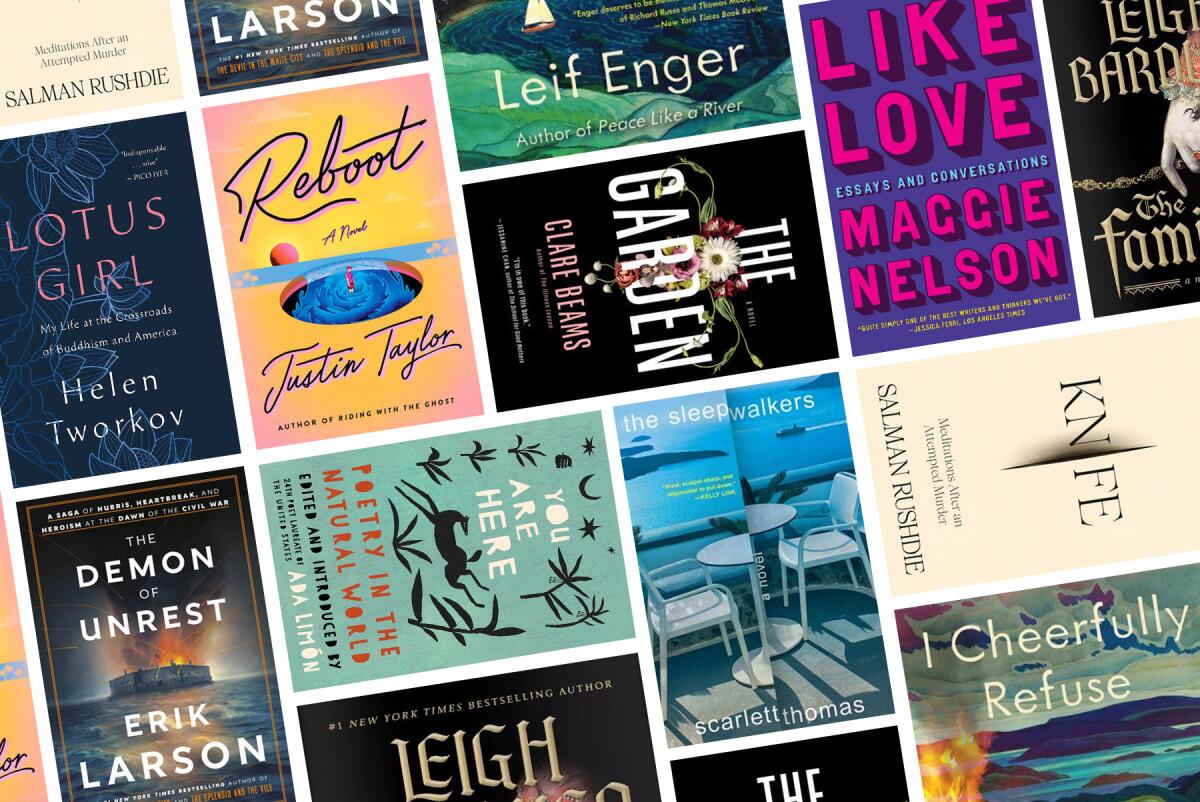
- Show more sharing options
- Copy Link URL Copied!
Critic Bethanne Patrick recommends 10 promising titles, fiction and nonfiction, to consider for your April reading list.
April’s book releases cover some difficult topics, including Salman Rushdie discussing his 2022 maiming, Leigh Bardugo’s fiction about the dark arts and Ada Limón’s poetry anthology about our fragile world. However, like April, there is also sunshine: Leif Enger’s wild Great Lakes love story, Helen Tworkov’s beautiful memoir of Buddhism and a collection of the inimitable Maggie Nelson’s essays. Happy reading, happy spring!
I Cheerfully Refuse: A Novel By Leif Enger Grove Press: 336 pages, $28 (April 2)

An unusual and meaningful surprise awaits readers of Enger’s latest, which takes place largely on Lake Superior, as a man named Rainy tries to reunite with his beloved wife, Lark. While the world around this couple, a dystopian near-future American where billionaires control everything, could not be bleaker, the author’s retelling of the myth of Orpheus (who went to the underworld to rescue his wife) contains the authentic hope of a born optimist.
The Familiar: A Novel By Leigh Bardugo Flatiron Books: 400 pages, $30 (April 9)
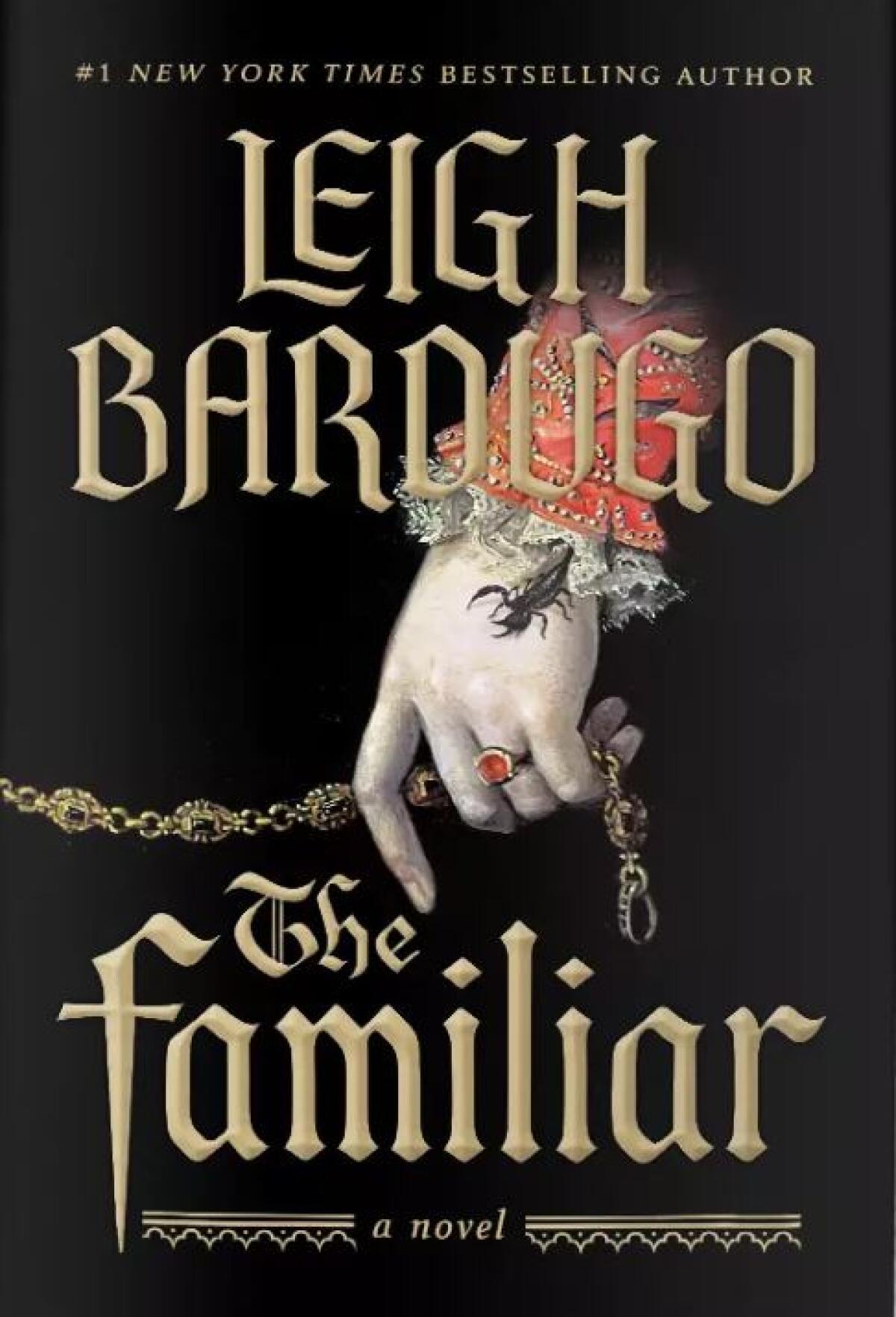
Bardugo departs from novels of dark academia in a standalone to make the hairs on your neck stand up, set in 16th century Spain. A hidden Sephardic Jew and scullery maid named Luzia Cotado matches wits with fellow servant Guillén Santángel. Luzia discovers a secret of Guillén’s, but she’s already fallen in love with him. And because he knows hers, too, they might both avoid the Spanish Inquisition. It’s a gorgeous tale of enchantments both supernatural and earthly.
The Sleepwalkers: A Novel By Scarlett Thomas Simon & Schuster: 304 pages, $28 (April 9)

A couple honeymoons at a Greek resort. What could go wrong? In Thomas’ hands, plenty – especially as the author has never written a comfortable story; her books, from “PopCo ” to “Oligarchy,” crackle with unreliable characters, as well as big philosophical ideas. In this case, the new marriage’s breakdown is chronicled through letters between the spouses, and sometimes bits of ephemera, that ultimately untangle a dark mystery relating to the title.
The Garden: A Novel By Clare Beams Doubleday: 304 pages, $28 (April 10)

Few novels of literary fiction are written as well as “The Garden,” let alone given its sadly relevant retro setting, a 1940s country-estate obstetrical program. Irene Willard walks through its gates having endured five miscarriages; pregnant again, she and her war-veteran husband George desperately hope for a live birth. But as Irene discovers more about the woman who controls all here, Dr. Bishop, she fears carrying to term as much as she once feared pregnancy loss.
Reboot: A Novel By Justin Taylor Pantheon: 304 pages, $28 (April 23)
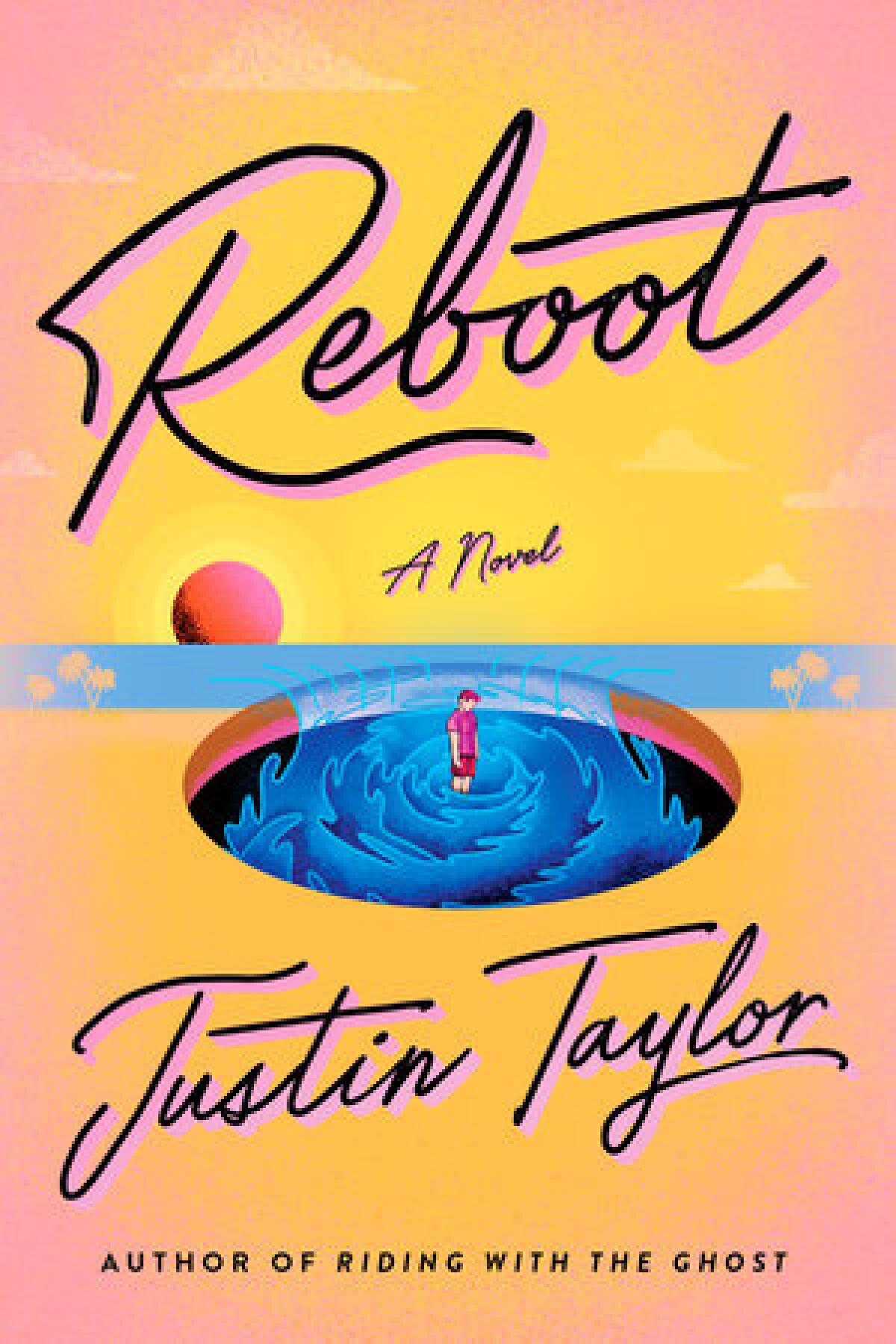
David Crader, former teen TV heartthrob, just wants to reboot his career when his old show “Rev Beach” has a moment. His life has devolved through substance abuse, divorce and underemployment. But when he and colleagues launch a remake, devolution continues: The protagonist’s struggles are mirrored by climate-change issues, from flooding to wildfires. Despite that darkness, Taylor’s gift for satire might make this a must-read for 2024 beach bags.
You Are Here: Poetry in the Natural World By Ada Limón (Editor) Milkweed Editions: 176 pages, $25 (April 2)

A wondrous artist herself, Limón is currently poet laureate of the United States, and this anthology is part of her signature project, “You Are Here,” which will also feature poetry as public art in seven national parks. Released in conjunction with the Library of Congress, the collection features 50 previously unpublished poems by luminaries including Jericho Brown, Joy Harjo, Carl Phillips and Diane Seuss, each focusing on a piece of regional landscape.
Like Love: Essays and Conversations By Maggie Nelson Graywolf Press: 336 pages, $32 (April 2)

While all of the pieces in Nelson’s new book have previously been published elsewhere, they’re made fresh here both through being collected and through their chronological placement. Readers can practically watch Nelson’s incisive mind growing and changing as she speaks with colleagues such as Hilton Als and Judith Butler, or as she writes about queerness, motherhood, violence, the lyrics of Prince and the devastating loss of a friend.
Knife: Meditations After an Attempted Murder By Salman Rushdie Random House: 204 pages, $28 (April 16)

On Aug. 12, 2022, the author Salman Rushdie was speaking at upstate New York’s Chautauqua festival when a man rushed the stage and attempted to murder him. Rushdie, a target of Iranian religious leaders since 1989, was permanently injured. In this book, he shares his experience for the first time, having said that this was essential for him to write. In this way, he answers violence with art, once again reminding us all that freedom of expression must be protected.
Lotus Girl: My Life at the Crossroads of Buddhism and America By Helen Tworkov St. Martin’s Essentials: 336 pages, $29 (April 16)
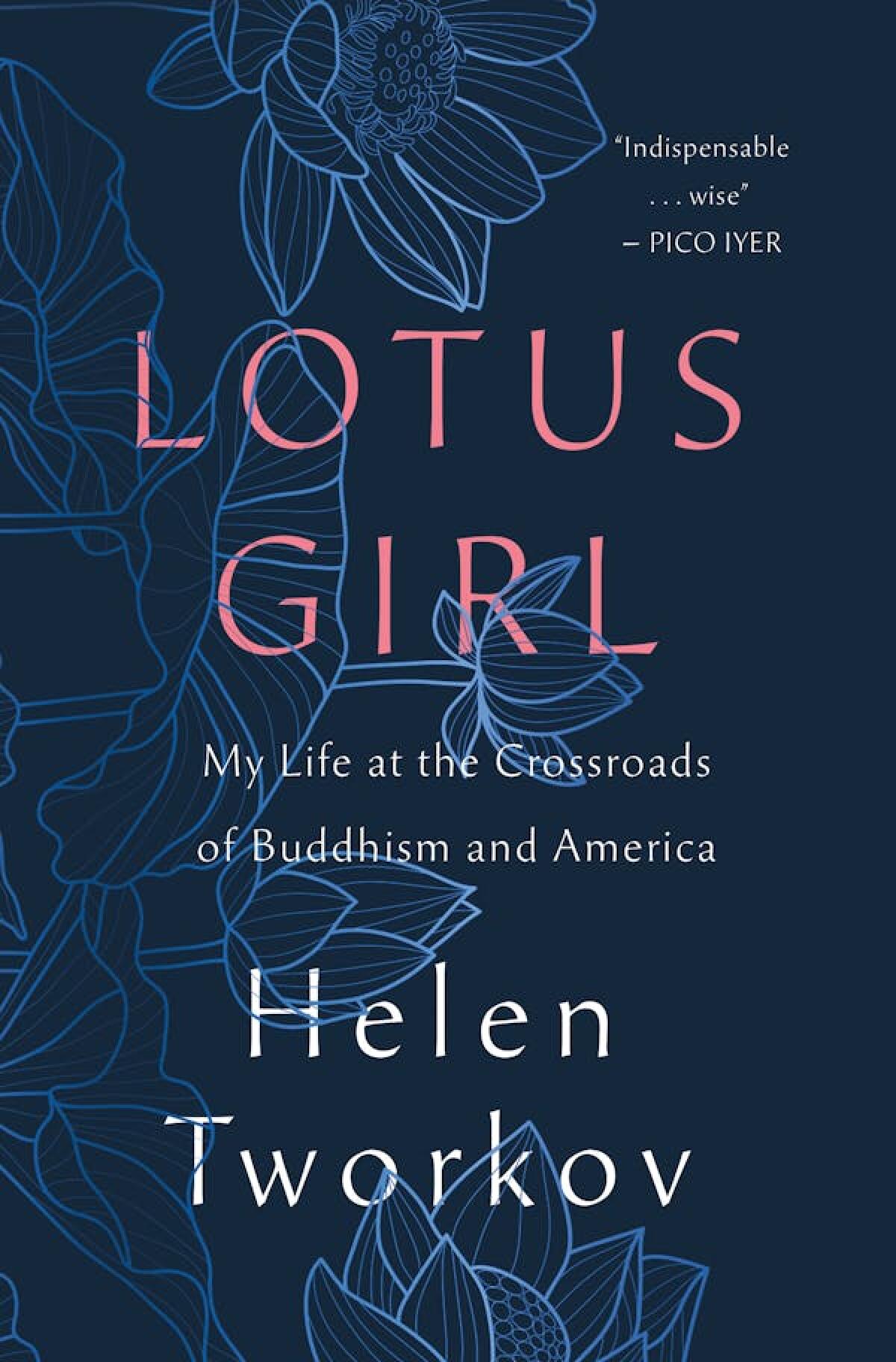
Tworkov, founder of the magazine Tricycle, chronicles her move from a 1960s young-adult interest in Buddhism to travels through Asia and deep study in the United States of the different strands that follow the Buddha’s teachings. Tworkov mentions luminaries such as the artist Richard Serra, the composer Charles Mingus and the Dalai Lama, but she’s not name-dropping. Instead, she’s strewing fragrant petals from her singular path to mindfulness that may help us find ours.
The Demon of Unrest: A Saga of Hubris, Heartbreak, and Heroism at the Dawn of the Civil War By Erik Larson Crown: 592 pages, $35 (April 30)

Even diehard Civil War aficionados will learn from Larson’s look at the six months between Lincoln’s 1860 election and the surrender of Union troops under Maj. Robert Anderson at Charleston’s Ft. Sumter. Larson details Anderson’s secret Christmas redeployment and explores this individual’s contradictions as a former slave owner who loyally follows Lincoln’s orders. The author also shares first-person perspective from the famous diaries of the upper-class Southerner Mary Chesnut. All together, the book provides a riveting reexamination of a nation in tumult.
More to Read

The week’s bestselling books, April 14
April 10, 2024
The week’s bestselling books, April 7
April 3, 2024

3 best mystery books to read this spring
A cure for the common opinion
Get thought-provoking perspectives with our weekly newsletter.
You may occasionally receive promotional content from the Los Angeles Times.
More From the Los Angeles Times

Reckoning with long shadow of 1960s counterculture
April 13, 2024

From Pomona to Oakland, how a skater mapped California block by block from his board
April 12, 2024

Lionel Shriver airs grievances by reimagining American society
April 8, 2024
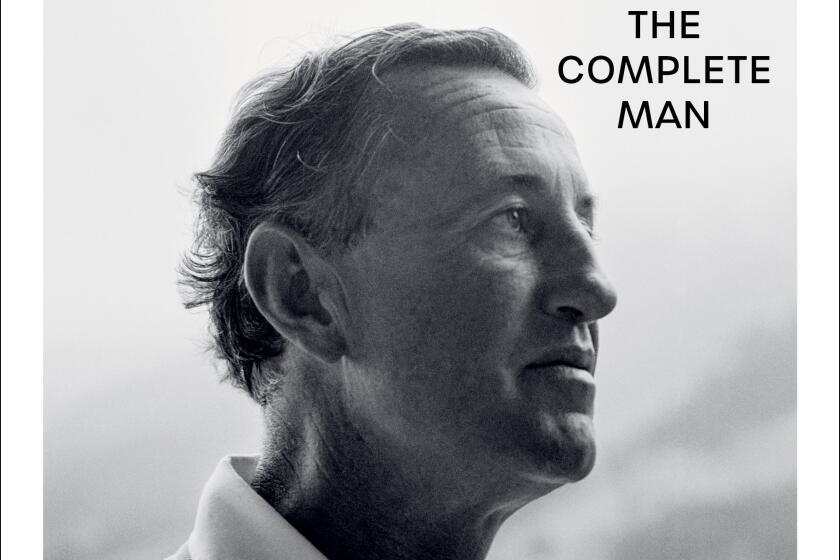
James Bond’s creator lived a life to rival the spy’s
April 4, 2024
Advertisement
More from the Review
Subscribe to our Newsletter
Best of The New York Review, plus books, events, and other items of interest
- The New York Review of Books: recent articles and content from nybooks.com
- The Reader's Catalog and NYR Shop: gifts for readers and NYR merchandise offers
- New York Review Books: news and offers about the books we publish
- I consent to having NYR add my email to their mailing list.
- Hidden Form Source
April 18, 2024
Current Issue

March 21, 2024 issue
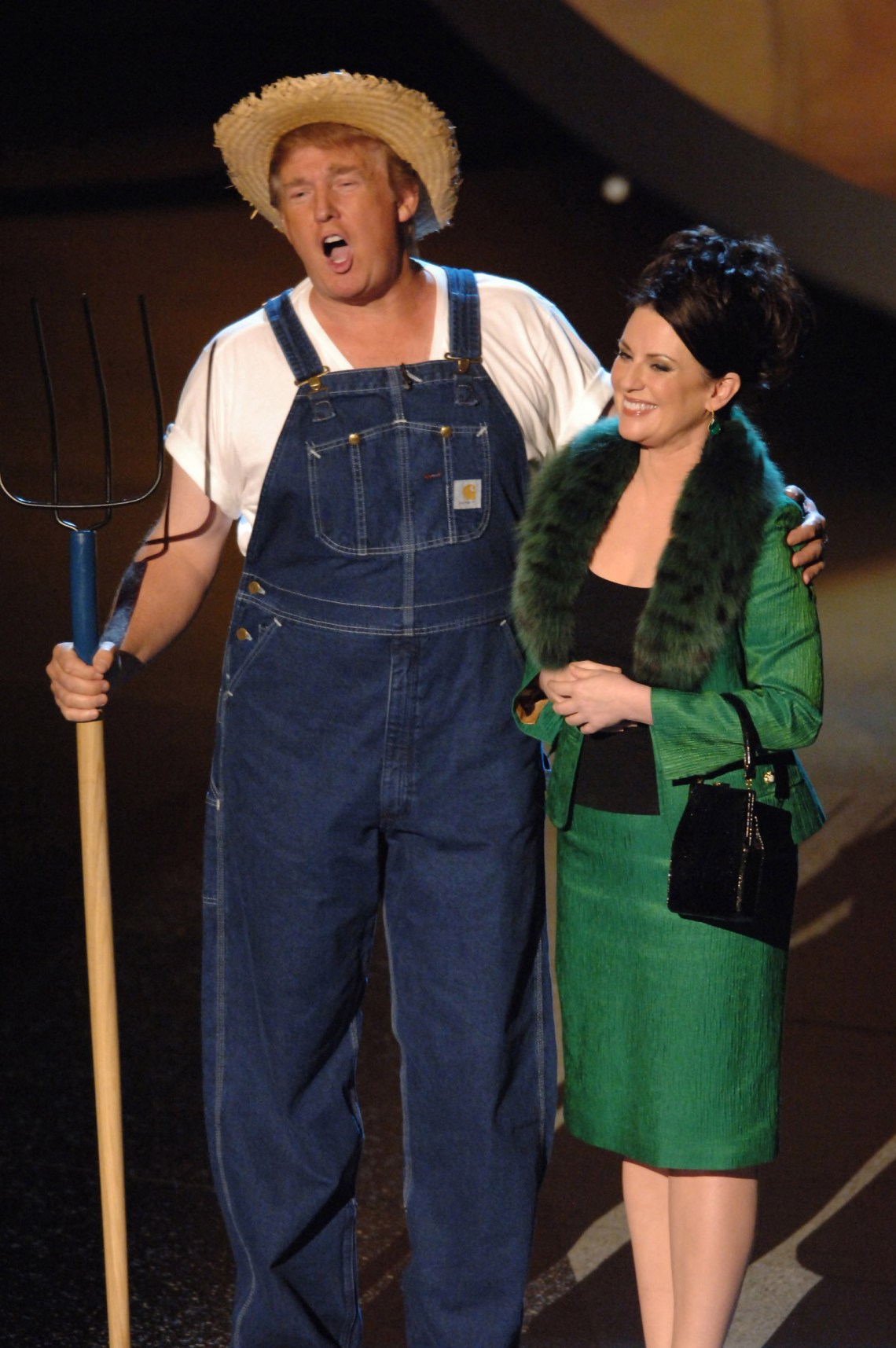
Michael Caulfield/WireImage/Getty Images
Donald Trump and Megan Mullally performing the Green Acres theme song at the Emmy Awards, Los Angeles, September 2005
Submit a letter:
Email us [email protected]
In the Warsaw Ghetto in October 1941 Mary Berg, then a teenager, wrote in her diary about the improbable persistence of laughter in that hellish place:
Every day at the Art Café on Leszno Street one can hear songs and satires on the police, the ambulance service, the rickshaws, and even the Gestapo, in a veiled fashion. The typhus epidemic itself is the subject of jokes. It is laughter through tears, but it is laughter. This is our only weapon in the ghetto—our people laugh at death and at the Nazi decrees. Humor is the only thing the Nazis cannot understand.
Berg here movingly expresses a common and comforting idea. Laughter is one of the few weapons that the weak have against the strong. Gallows humor is the one thing that cannot be taken away from those who are about to be hanged, the final death-defying assertion of human dignity and freedom. And the hangmen don’t get the jokes. Fascists don’t understand humor.
There is great consolation in these thoughts. Yet is it really true that fascists don’t get humor? Racist, misogynistic, antisemitic, xenophobic, antidisabled, and antiqueer jokes have always been used to dehumanize those who are being victimized. The ghetto humor that Berg recorded was a way of keeping self-pity at bay. But as Sigmund Freud pointed out, jokes can also be a way of shutting down pity itself by identifying those who are being laughed at as the ones not worthy of it: “A saving in pity is one of the most frequent sources of humorous pleasure.” Humor, as in Berg’s description, may be a way of telling us not to feel sorry for ourselves. But it is more often a way of telling us not to feel sorry for others. It creates an economy of compassion, limiting it to those who are laughing and excluding those who are being laughed at. It makes the polarization of humanity fun.
Around the time that Berg was writing her diary, Theodor Adorno and Max Horkheimer were pointing to the relationship between Nazi rallies and this kind of comedy. The rally, they suggested, was an arena in which a release that was otherwise forbidden was officially permitted:
The anti-Semites gather to celebrate the moment when authority lifts the ban; that moment alone makes them a collective, constituting the community of kindred spirits. Their ranting is organized laughter. The more dreadful the accusations and threats, the greater the fury, the more withering is the scorn. Rage, mockery, and poisoned imitation are fundamentally the same thing.
Donald Trump is not a Nazi, and his followers are (mostly) not fascists. But it is not hard to see how this description resonates with his campaign appearances. Trump is America’s biggest comedian. His badinage is hardly Wildean, but his put-downs, honed to the sharpness of stilettos, are many people’s idea of fun. For them, he makes anger, fear, and resentment entertaining.
For anyone who questions how much talent and charisma this requires, there is a simple answer: Ron DeSantis. Why did DeSantis’s attempt to appeal to Republican voters as a straitlaced version of Trump fall so flat? Because Trumpism without the cruel laughter is nothing. It needs its creator’s fusion of rage, mockery, and poisoned imitation, whether of a reporter with a disability or (in a dumb show that Trump has been playing out in his speeches in recent months) of Joe Biden apparently unable to find his way off a stage. It demands the withering scorn for Sleepy Joe and Crooked Hillary, Crazy Liz and Ron DeSanctimonious, Cryin’ Chuck and Phoney Fani. It requires the lifting of taboos to create a community of kindred spirits. It depends on Trump’s ability to be pitiless in his ridicule of the targets of his contempt while allowing his audience to feel deeply sorry for itself. (If tragedy, as Aristotle claimed, involves terror and pity, Trump’s tragicomedy deals in terror and self-pity.)
Hard as it is to understand, especially for those of us who are too terrified to be amused, Trump’s ranting is organized laughter. To understand his continuing hold over his fans, we have to ask: Why is he funny?
This is not the 1930s or the 1940s, and we should not expect this toxic laughter to be organized quite as it was then. Trump functions in a culture supersaturated with knowingness and irony. In twentieth-century European fascism, the relationship between words and actions was clear: the end point of mockery was annihilation. Now, the joke is “only a joke.” Populist politics exploits the doubleness of comedy—the way that “only a joke” can so easily become “no joke”—to create a relationship of active connivance between the leader and his followers in which everything is permissible because nothing is serious.
This shift has happened in Europe, too. Think of Boris Johnson’s clown act, his deliberately ruffled hair, rumpled clothes, and ludicrous language. Or think of Giorgia Meloni, the first Italian prime minister from the far right since Benito Mussolini, posting on election day in September 2022 a TikTok video of herself holding two large melons ( meloni in Italian) in front of her breasts: fascism as adolescent snigger. It is impossible to think of previous far-right leaders engaging in such public self-mockery. Only in our time is it possible for a politician to create a sense of cultlike authority by using the collusiveness of comedy, the idea that the leader and his followers are united by being in on the joke.
Trump may be a narcissist, but he has a long history of this kind of self-caricature. When he did the Top Ten List on the David Letterman show in 2009, he seemed entirely comfortable delivering with a knowing smirk the top ten “financial tips” written for him, including “When nobody’s watching I go into a 7/11 and stick my head under a soda nozzle”; “Save money by styling your own hair” (pointing to his own improbable coiffure); “Sell North Dakota to the Chinese”; “If all else fails, steal someone’s identity”; and “The fastest way to get rich: marry and divorce me.” This performance, moreover, was the occasion for Trump’s entry into the world of social media. His first ever tweet was: “Be sure to tune in and watch Donald Trump on Late Night with David Letterman as he presents the Top Ten List tonight!”
At the 2005 Emmy Awards, Trump dressed in blue overalls and a straw hat and, brandishing a pitchfork, sang the theme song from the 1960s TV comedy Green Acres . Trump is a terrible singer and a worse actor, but he seemed completely unembarrassed on stage. He understood the joke: that Oliver, the fictional character he was impersonating, is a wealthy Manhattanite who moves to rustic Hooterville to run a farm, following his dream of the simple life—an alternative self that was amusing because it was, for Trump, unimaginable. But he may have sensed that there was also a deep cultural resonance. The Apprentice was “reality TV ,” a form in which the actual and the fictional are completely fused.
Green Acres , scenes from which played on a screen behind Trump as he was singing, pioneered this kind of metatelevision. Its debut episode set it up as a supposed documentary presented by a well-known former newscaster. Its characters regularly broke the fourth wall. When Oliver launched into rhapsodic speeches about American rural values, a fife rendition of “Yankee Doodle” would play on the soundtrack, and the other characters would move around in puzzlement trying to figure out where the musician was. Eva Gabor, playing Oliver’s pampered wife, admits on the show that her only real talent is doing impressions of Zsa Zsa Gabor, the actor’s more famous real-life sister.
The critic Armond White wrote in 1985 that “ Green Acres ’ surreal rationale is to capture the moment American gothic turns American comic.” Trump playing Oliver in 2005 may be the moment American comedy turned gothic again. Whoever had the idea of connecting Trump back to Green Acres clearly understood that “Donald Trump” had by then also become a metatelevision character, a real-life failed businessman who impersonated an ultrasuccessful mogul on The Apprentice . And Trump went along with the conceit because he instinctively understood that self-parody was not a threat to his image—it was his image. This connection to Green Acres was reestablished by Trump himself as president of the United States. In December 2018, as he was about to sign the Farm Bill into law, Trump tweeted, “Farm Bill signing in 15 minutes! #Emmys #TBT,” with a clip of himself in the Green Acres spoof. Hooterville and the White House were as one.
What is new in the development of antidemocratic politics is that Trump brings all this comic doubleness—the confusion of the real and the performative, of character and caricature—to bear on the authoritarian persona of the caudillo, the duce, the strongman savior. The prototype dictators of the far right may have looked absurd to their critics (“Hitler,” wrote Adorno and Horkheimer, “can gesticulate like a clown, Mussolini risk false notes like a provincial tenor”), but within the community of their followers and the shadow community of their intended victims, their histrionics had to be taken entirely seriously. Trump, on the other hand, retains all his self-aware absurdity even while creating a political persona of immense consequence.
This comic-authoritarian politics has some advantages over the older dictatorial style. It allows a threat to democracy to appear as at worst a tasteless prank: in the 2016 presidential campaign even liberal outlets like The New York Times took Hillary Clinton’s e-mails far more seriously than Trump’s open stirring of hatred against Mexicans and Muslims. Funny-autocratic functions better in a society like that of the US, where the boundaries of acceptable insult are still shifting and mainstream hate-mongering still has to be light on its feet. It allows racial insults and brazen lies to be issued, as it were, in inverted commas. If you don’t see those invisible quotation marks, you are not smart enough—or you are too deeply infected by the woke mind virus—to be in on the joke. You are not part of the laughing community. The importance of not being earnest is that it defines the boundaries of the tribe. The earnest are the enemy.
The extreme right in America was very quick to understand the potency of “only a joke” in the Internet age. In a 2001 study of three hate speech websites sympathetic to the Ku Klux Klan, Michael Billig noted that each of them described itself on its home page as a humorous exercise. The largest, called “N…..jokes KKK ” (the ellipsis is mine) carried the disclaimers: “You agree by entering this site, that this type of joke is legal where you live, and you agree that you recognize this site is meant as a joke not to be taken seriously”; “And you agree that this site is a comedy site, not a real racist site”; “We ARE NOT real life racists.”
What does “real life” even mean when Klansmen are not really racist? The power of this “humorous” mode of discourse lies at least partly in the way it blurs the distinctions between the real and the symbolic, and between words and actions. Consider the example of some of the men tried for their alleged parts in a 2020 plot to kidnap Gretchen Whitmer, the Democratic governor of Michigan. One of them, Barry Croft, insisted at his trial in 2022 that he was joking most of the time when he posted on Facebook questions like “Which governor is going to end up being dragged off and hung for treason first?” Another, Brandon Caserta, was acquitted in 2022 in part because he successfully pleaded that violent statements he made on Facebook and in secretly recorded meetings of the group were not serious. These included claims that the Second Amendment sanctions the killing of “agents of the government when they become tyrannical.” “I may kill dozens of agents but eventually die in the process,” Caserta wrote on Facebook in May 2020. He later posted that he would beat government agents so hard they would “beg til they couldn’t beg any more because their mouth is so full of blood.”
At Croft’s trial, his defense attorney put it to an FBI witness that a meme Croft posted showing thirty bullets as “30 votes that count” was “A little tongue-in-cheek? A little bit funny?” On the second season of Jon Ronson’s superb podcast series for the BBC , Things Fell Apart , Caserta acknowledges that, on the secret recordings, he is heard to urge his fellow militia members that any lawyers advocating for the Covid vaccine be decapitated in their own homes, speaks of “wanting Zionist banker blood,” and advocates blowing up buildings where the vaccine is manufactured. He nonetheless insists to Ronson:
This isn’t something I’m dead serious about. This is nothing I ever planned. It’s funny, dude! It’s funny! It’s fun to blow stuff up. It’s fun to shoot guns. It’s fun to say ridiculous offensive shit. And if it offends you, so what? I don’t care about your feelings and how you feel about words. Sorry!
The twist of logic here is striking: Caserta equates blowing stuff up and shooting people with saying ridiculous offensive shit. Violent words and violent actions are all covered by the same disclaimer—one that Trump’s apologists use to blur the relationship between his words and his followers’ actions in the assault on the Capitol on January 6, 2021. In the Trumpian twilight zone where democracy is dying but not yet dead, the connection between words (“fight like hell”) and deeds (the armed invasion of the Capitol) must be both strong and weak, sufficiently “no joke” to be understood by the faithful yet sufficiently “only a joke” to be deniable to the infidels. The comic mode is what creates the plausible deniability that in turn allows what used to be mainstream Republicans (and some Democrats) to remain in denial about what Trumpism really means.
For those who love Trump, there is something carnivalesque in all of this. In his discussion of “mediaeval laughter” in Rabelais and His World , Mikhail Bakhtin wrote that “one might say that it builds its own world versus the official world, its own church versus the official church, its own state versus the official state.” Bakhtin suggested that the
festive liberation of laughter…was a temporary suspension of the entire official system with all its prohibitions and hierarchic barriers. For a short time life came out of its usual, legalized and consecrated furrows and entered the sphere of utopian freedom.
Trump and many of his followers have made this quite literal. They create their own America, their own republic, their own notions of legality, their own church of the leader’s cult, their own state versus what they see as the official state. In this way, extreme polarization becomes a sphere of utopian freedom.
This is the capacious zone in which Trump’s comedy operates, an arena that admits everyone who gets the joke, from those who fantasize about killing tyrants, decapitating lawyers, and torturing government agents to those who just like to blow off steam by listening to their hero saying stuff that riles the woke enemy. It is crucial that in Trump’s delivery there is no shift from mockery to seriousness, no line between entertainment and violence. His singsong tone is generous and flexible, serving equally well for vaudeville and vituperation. In his streams of consciousness, they flow together as complementary currents.
In the recent speeches in which he has upped the ante on openly fascist rhetoric by characterizing his opponents as “vermin” and accusing immigrants of “poisoning the blood of our country,” it is notable that his cadence is soft, almost lilting. There is no warning to his audience that these comments are of a different order. They are not even applause lines. By underplaying them, Trump leaves open the fundamental question: Is his mimicking of Hitler’s imagery just another impersonation, all of a piece with the way he does Biden and Haley in funny voices or even with the way he sings the theme song from Green Acres ?
Even when Trump actually goes the whole way and acknowledges that his rhetoric is indeed Hitlerian, as he did in a speech in Iowa after the alarmed reaction of liberals to his previous “poisoning the blood” speech, it is in a passage that jumbles together murderous intent, complaint about the media, and comic acting: “They are destroying the blood of our country. That’s what they’re doing…. They don’t like it when I said that. And I never read Mein Kampf .” But he makes the “Kampf” funny, puckering his lips and elongating the “pf” so it sounds like a rude noise. He continues: “They said ‘Oh, Hitler said that.’” Then he adds his defense: “in a much different way.” It is the stand-up comedian’s credo: it’s not the jokes, it’s the way you tell ’em. And this is, indeed, true—the difference is in the way he tells it, in a voice whose ambiguous pitch has been perfected over many years of performance.
The knowingness is all. In the speech in Conway, South Carolina, on February 10, in which he openly encouraged Russia to attack “delinquent” members of NATO , this startling statement, with potential world-historical consequences, was preceded by Trump’s metatheatrical riff on the idea of “fun.” What was fun, he told his followers, was the reaction he could provoke just by saying “Barack Hussein Obama”:
Every time I say it, anytime I want to have a little fun…even though the country is going to hell, we have to have a little bit of fun…. Remember Rush Limbaugh, he’d go “Barack Hooosaynn Obama”—I wonder what he was getting at.
He then segued into another commentary on his own well-honed send-up of Joe Biden: “I do the imitation where Biden can’t find his way off the stage…. So I do the imitation—is this fun?—I say this guy can’t put two sentences together…and then I go ‘Watch!’” (He said the word with a comic pout.) “I’ll imitate him. I go like this: ‘Haw!’” Trump hunches his shoulders and extends his arm, in a parody of Biden’s gestures. In this burlesque, Trump is not just mimicking his opponent; he is explicitly reenacting his own previous mocking impersonation, complete with commentary. He is simultaneously speaking, acting, and speaking about his acting.
It is within this “fun” frame that Trump proceeded to insinuate that there is something awry with Nikki Haley’s marriage: “Where’s her husband? Oh he’s away…. What happened to her husband? What happened to her husband! Where is he? He’s gone. He knew, he knew.” He and presumably many members of the audience were aware that Michael Haley is currently serving in Djibouti with the South Carolina National Guard. But as part of the show, with the funny voices and the exaggerated gestures, that lurid hint at some mysteriously unmentionable scandal (“He knew, he knew”) is somehow amusing. And then so is Trump’s story about telling an unnamed head of a “big” NATO country that the US would not defend it from invasion and—the punch line—that he would “encourage” Russia “to do whatever the hell they want.” Here Trump is acting in both senses, both ostentatiously performing and exerting a real influence on global politics—but which is which? How can we tell the dancer from the dance?
This shuffling in a typical Trump speech of different levels of seriousness—personal grudges beside grave geopolitics, savage venom mixed with knockabout farce, possible truths rubbing up against outrageous lies—creates a force field of incongruities. Between the looming solidity of Trump’s body and the airy, distracted quality of his words, in which weightless notions fly off before they are fully expressed, he seems at once immovable and in manic flux.
Incongruity has long been seen as one of the conditions of comedy. Francis Hutcheson in Reflections Upon Laughter (1725) noted that it is “this contrast or opposition of ideas of dignity and meanness which is the occasion of laughter.” The supposedly dignified idea of “greatness” is vital to Trump’s presence and rhetoric. But it is inextricably intertwined with the mean, the inconsequential, even the infantile. He is at one moment the grandiose man of destiny and the next a naughty child—an incongruity that can be contained only within an organized laughter in which the juxtaposition of incompatibilities is the essence of fun. This is why Trump’s lapses into pure gibberish—like telling a National Rifle Association gathering in Harrisburg, Pennsylvania, on February 9 that the Democrats are planning to “change the name of Pennsylvania” and that, in relation to the marble columns in the hall, it was “incredible how they could [have been built] years ago without the powerful tractors that you have today”—do not make his fans alarmed about his mental acuity. Cognitive dysfunction is not a worry with a man whose métier is cognitive dissonance.
Part of the dissonance is that Trump’s stand-up routine is completely dependent on the idea that he and his audience most despise: political correctness. Like much of the worst of contemporary comedy, Trump both amuses and thrills his audience by telling them that he is saying what he is not allowed to say. “Beautiful women,” he said at the rally in South Carolina after pointing to a group of female superfans in the audience. “You’re not allowed to say that anymore, but I’ll say it…. That usually is the end of a career, but I’ll say it.” There are so many layers to a moment like this: the idea that the woke mob is stopping manly men from complimenting attractive women, a sideways nod toward the “pussygate” tapes that should have ended Trump’s political career but didn’t, a dig at the Me Too movement, a reiteration of Trump’s right to categorize women as “my type” or “not my type,” the power of the leader to lift prohibitions—not just for himself but, in this carnivalesque arena of utopian freedom, for everyone in the audience.
Flirting with the unsayable has long been part of his shtick. If we go all the way back to May 1992 to watch Trump on Letterman’s show, there is a moment when Trump silently mouths the word “shit.” He does this in a way that must have been practiced rather than spontaneous—it takes some skill to form an unspoken word so clearly for a TV audience that everyone immediately understands it. Letterman plays his straight man: “You ain’t that rich, Don, you can’t come on here and say that.” But of course Trump did not “say” it. A sympathetic audience loves a moment like this because it is invited to do the transgressive part in its head. It gets the pleasure of filling in the blank.
Trump’s audiences, in other words, are not passive. This comedy is a joint enterprise of performer and listener. It gives those listeners the opportunity for consent and collusion. Consider a televised speech Trump gave at the Al Smith Dinner, hosted by the Catholic archbishop of New York, Cardinal Timothy Dolan, in October 2016, near the end of the presidential campaign. The dinner, held to raise money for Catholic charities, is traditionally the last occasion on which the two main presidential candidates share a stage—Hillary Clinton was also present. Trump deadpanned that he knew he would have a receptive audience because “so many of you in the archdiocese already have a place in your heart for a guy who started out as a carpenter working for his father. I was a carpenter working for my father. True.”
What is the joke here? That Trump is like Jesus Christ. Imagine if Clinton had attempted an equivalent gag. There would have been outrage and uproar: Clinton has insulted all Christians by making a blasphemous comparison between herself and the divine Savior. But the cameras cut to Dolan, a sycophantic supporter of Trump, and showed him laughing heartily. And if the cardinal found it funny, it was funny. It was thus an in-joke. If Clinton had made it, it would be the ultimate out-joke, proof of the Democrats’ contempt for people of faith.
But what is allowed as funny will sooner or later be proposed seriously. Many of those attending Trump rallies now wear T-shirts that proclaim “Jesus Is My Savior. Trump Is My President.” Some of them illustrate the slogan with a picture of an ethereal Christ laying both his hands on Trump’s shoulders. What begins as a risqué quip ends up as a religious icon. There is no line here between sacrilege and devotion, transgressive humor and religious veneration.
Just as Trump’s jokes can become literal, his ugly realities can be bathed in the soothing balm of laughter. Long before he ran for president, he was indulged on the late-night talk shows as the hilarious huckster. In 1986 Letterman tried repeatedly to get Trump to tell him how much money he had, and when he continually evaded the question, Letterman broke the tension with the laugh-line, “You act like you’re running for something.” In December 2005 Conan O’Brien asked him, “You also have an online school? Is that correct?” Trump replied, “Trump University—if you want to learn how to get rich.” The audience howled with laughter, presumably not because they thought he was kidding but because the very words “Trump University” are innately absurd. When he did that Top Ten List on Letterman in 2009, Trump’s comic financial advice included “For tip number four, simply send me $29.95.”
But these jokes came true. Trump wouldn’t say how much he was worth because his net worth was partly fictional. Trump did run for something. Trump University was an innately funny idea that people took seriously enough to enable Trump to rip them off. And Trump does want you to send him $29.95—the first thing you get on Trump’s official website is an insistent demand: “Donate Today.” This is the thing about Trump’s form of organized laughter, in which the idea of humor obscures the distinction between outlandish words and real-life actions. Sooner or later, the first becomes the second. The in-joke becomes the killer line.
March 21, 2024
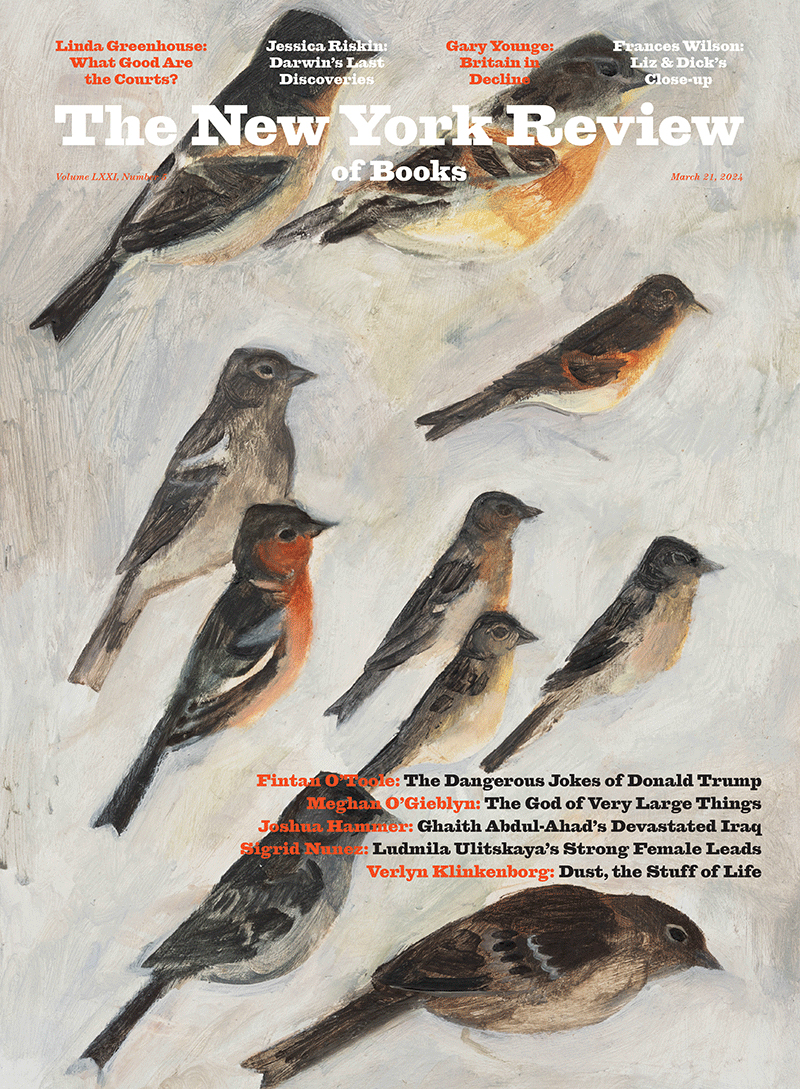
Who Should Regulate Online Speech?
Small Island
Subscribe to our Newsletters
More by Fintan O’Toole
February 11, 2024
As we enter an election year, can the Democrats prevent age from becoming a serious obstacle?
January 18, 2024 issue
November 14, 2023
Fintan O’Toole is the Advising Editor at The New York Review and a columnist for The Irish Times. His most recent book, We Don’t Know Ourselves: A Personal History of Modern Ireland , was published in the US last year. (March 2024)
The Fate of the Union: Kennedy and After
December 26, 1963 issue
Reagan and the Apocalypse
January 19, 1984 issue
‘Knee Deep in the Hoopla’
December 21, 1989 issue
A Double Standard
April 9, 1992 issue
Lost in the Cosmic
June 14, 1990 issue
An Illegal War
October 21, 2004 issue
The Report of Captain Secher
March 15, 2007 issue

Subscribe and save 50%!
Get immediate access to the current issue and over 25,000 articles from the archives, plus the NYR App.
Already a subscriber? Sign in
Finished Papers
Customer Reviews
Megan Sharp

Our Team of Essay Writers.
Some students worry about whether an appropriate author will provide essay writing services to them. With our company, you do not have to worry about this. All of our authors are professionals. You will receive a no less-than-great paper by turning to us. Our writers and editors must go through a sophisticated hiring process to become a part of our team. All the candidates pass the following stages of the hiring process before they become our team members:
- Diploma verification. Each essay writer must show his/her Bachelor's, Master's, or Ph.D. diploma.
- Grammar test. Then all candidates complete an advanced grammar test to prove their language proficiency.
- Writing task. Finally, we ask them to write a small essay on a required topic. They only have 30 minutes to complete the task, and the topic is not revealed in advance.
- Interview. The final stage is a face-to-face interview, where our managers test writers' soft skills and find out more about their personalities.
So we hire skilled writers and native English speakers to be sure that your project's content and language will be perfect. Also, our experts know the requirements of various academic styles, so they will format your paper appropriately.
What Can You Help Me With?
No matter what assignment you need to get done, let it be math or English language, our essay writing service covers them all. Assignments take time, patience, and thorough in-depth knowledge. Are you worried you don't have everything it takes? Our writers will help with any kind of subject after receiving the requirements. One of the tasks we can take care of is research papers. They can take days if not weeks to complete. If you don't have the time for endless reading then contact our essay writing help online service. With EssayService stress-free academic success is a hand away. Another assignment we can take care of is a case study. Acing it requires good analytical skills. You'll need to hand pick specific information which in most cases isn't easy to find. Why waste your energy on this when they're so many exciting activities out there? Our writing help can also do your critical thinking essays. They aren't the easiest task to complete, but they're the perfect occasion to show your deep understanding of the subject through a lens of critical analysis. Hire our writer services to ace your review. Are you struggling with understanding your professors' directions when it comes to homework assignments? Hire professional writers with years of experience to earn a better grade and impress your parents. Send us the instructions, and your deadline, and you're good to go.

Parents Are Welcome
No one cares about your academic progress more than your parents. That is exactly why thousands of them come to our essay writers service for an additional study aid for their children. By working with our essay writers, you can get a high-quality essay sample and use it as a template to help them succeed. Help your kids succeed and order a paper now!

tour des alpes 2023 parcours
- Cyclo-cross
En ce moment
Tour des Flandres
Accueil Courses cyclistes Tour des Alpes Le parcours et les favoris du Tour des Alpes 2023
Le parcours et les favoris du Tour des Alpes 2023
Le Tour des Alpes 2023 débute ce lundi 17 avril. Voici le parcours et les favoris de cette 46ème édition du Tour des Alpes.
16 avril 2023
Mis à jour le 16 avril 2023
Benjamin Blériot
La 46ème édition du Tour des Alpes débute ce lundi 17 avril. Les coureurs s’élanceront pour 5 étapes à travers le massif. Créée en 1962, la course fait partie du calendrier UCI Pro Series. L’an dernier, Romain Bardet (Team DSM) s’était adjugé le classement général devant Michael Storer (Groupama-FDJ) et Thymen Arensman (Team DSM).
Le parcours du Tour des Alpes 2023
1ʳᵉ étape : Rattenberg – Alpbach (127.5 km)
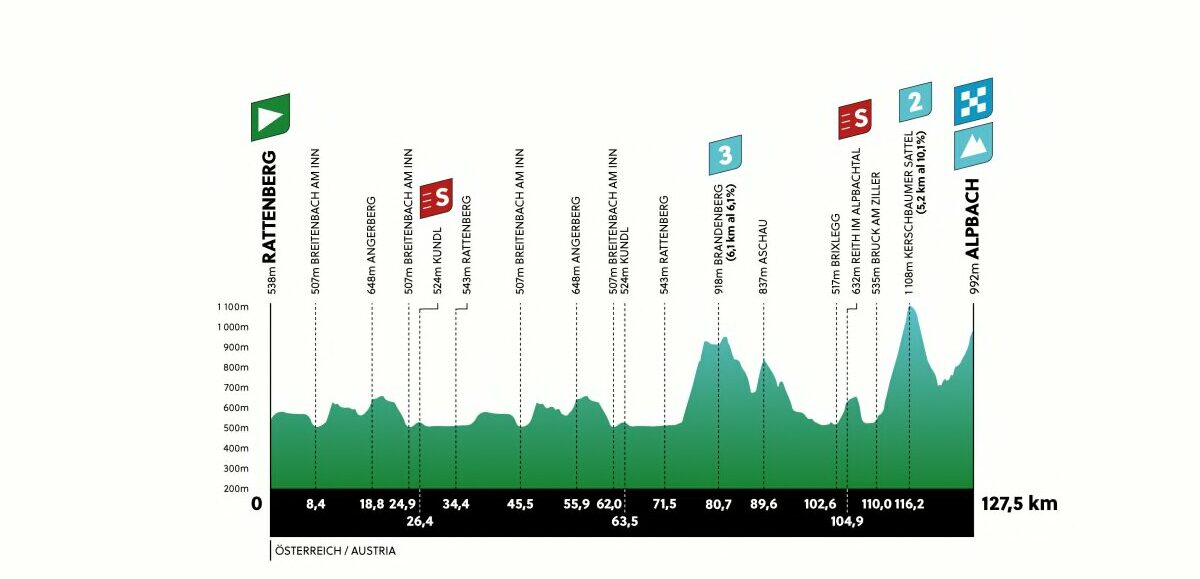
2ème étape : Reith im Alpbachtal – Ritten (165.2 km)
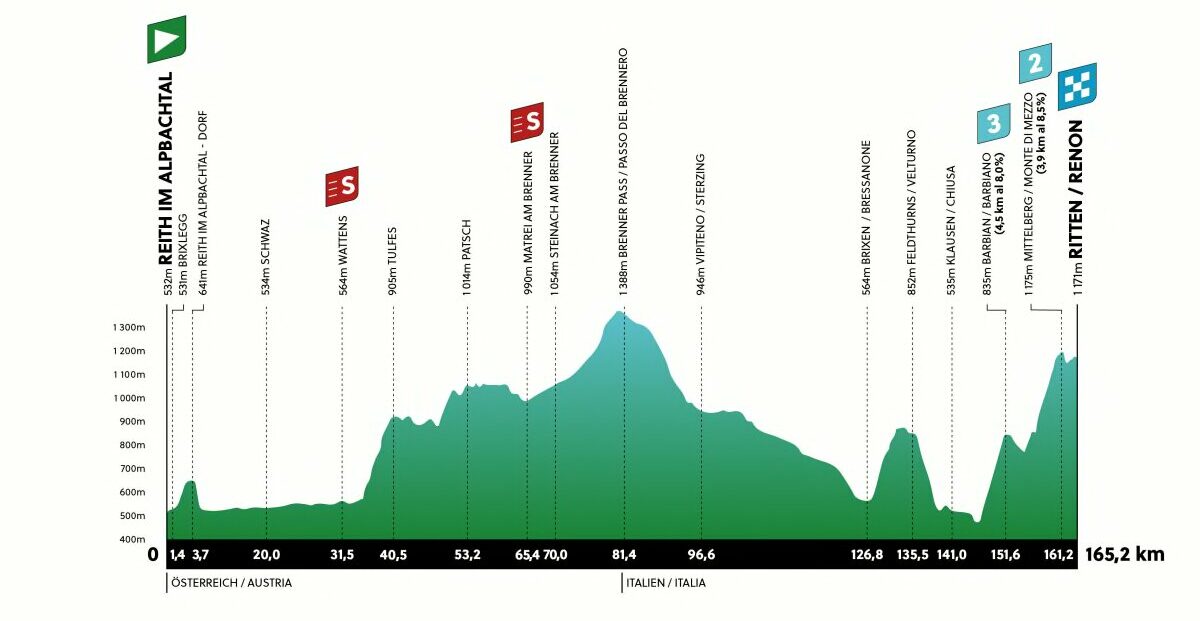
Étape 3 : Ritten – Brentonico San Valentino (162.5 km)
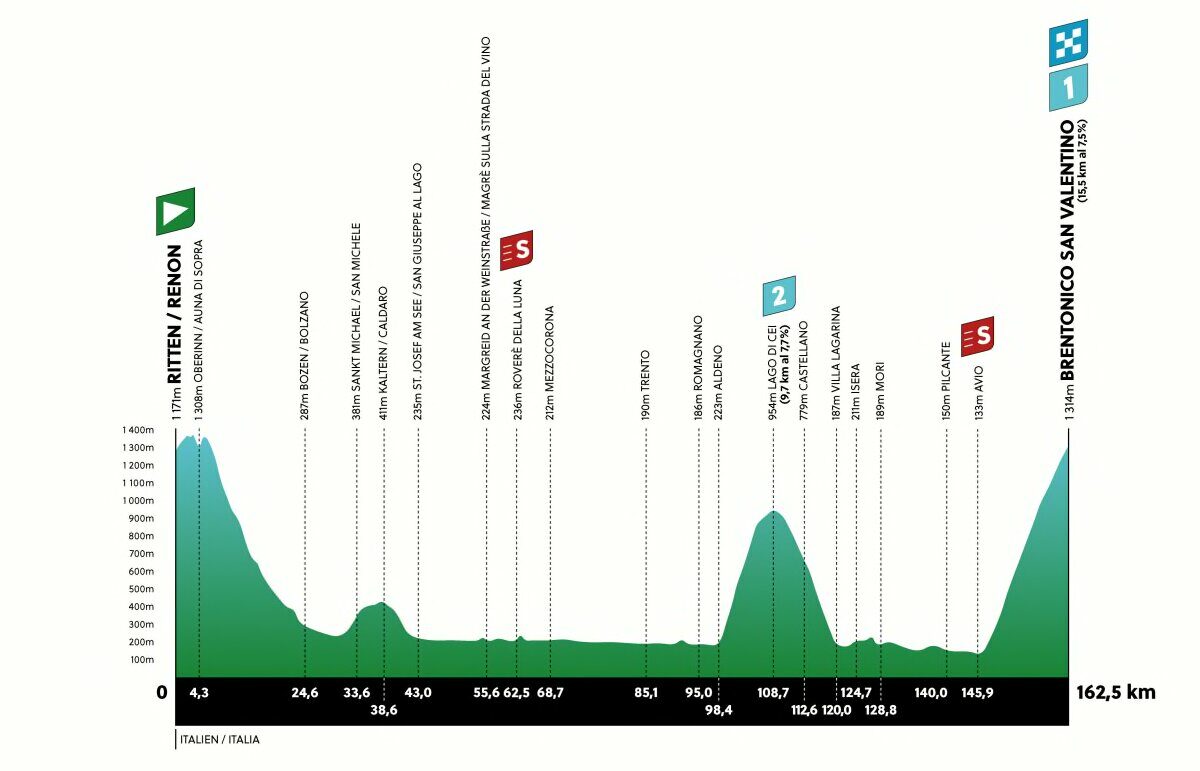
Étape 4 : Rovereto – Predazzo (152.9 km)
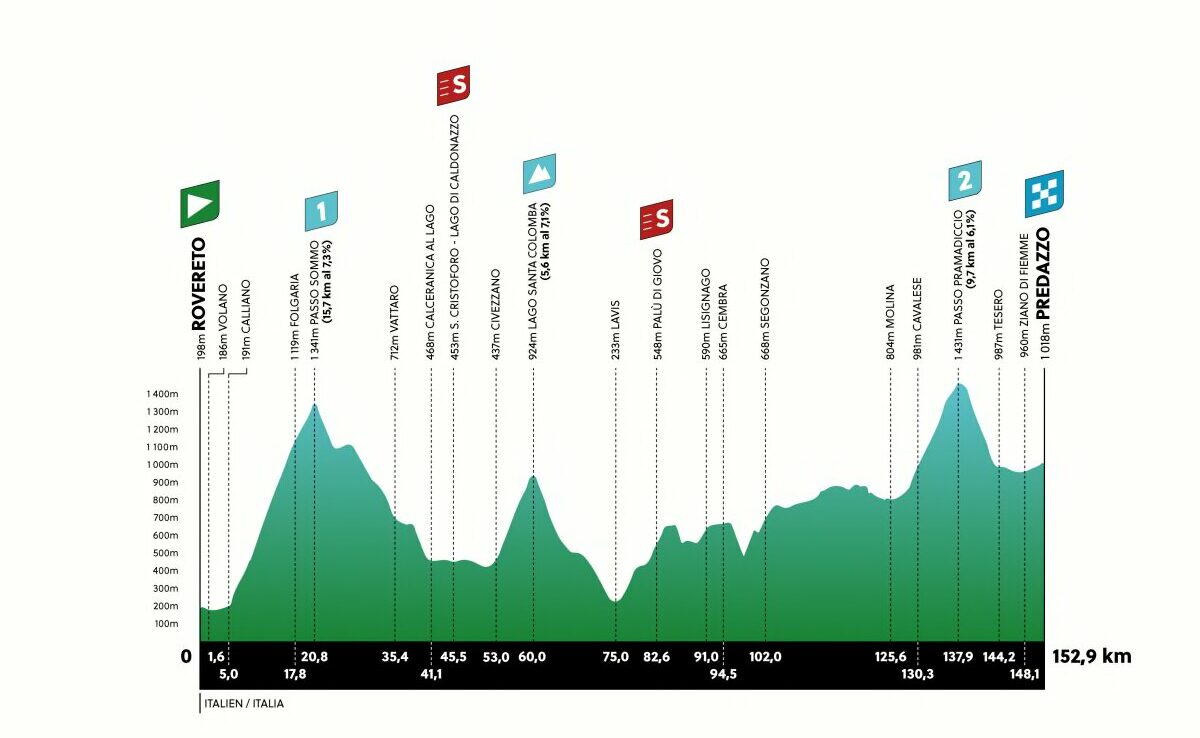
Étape 5 : Cavalese – Brunico (144.5 km)
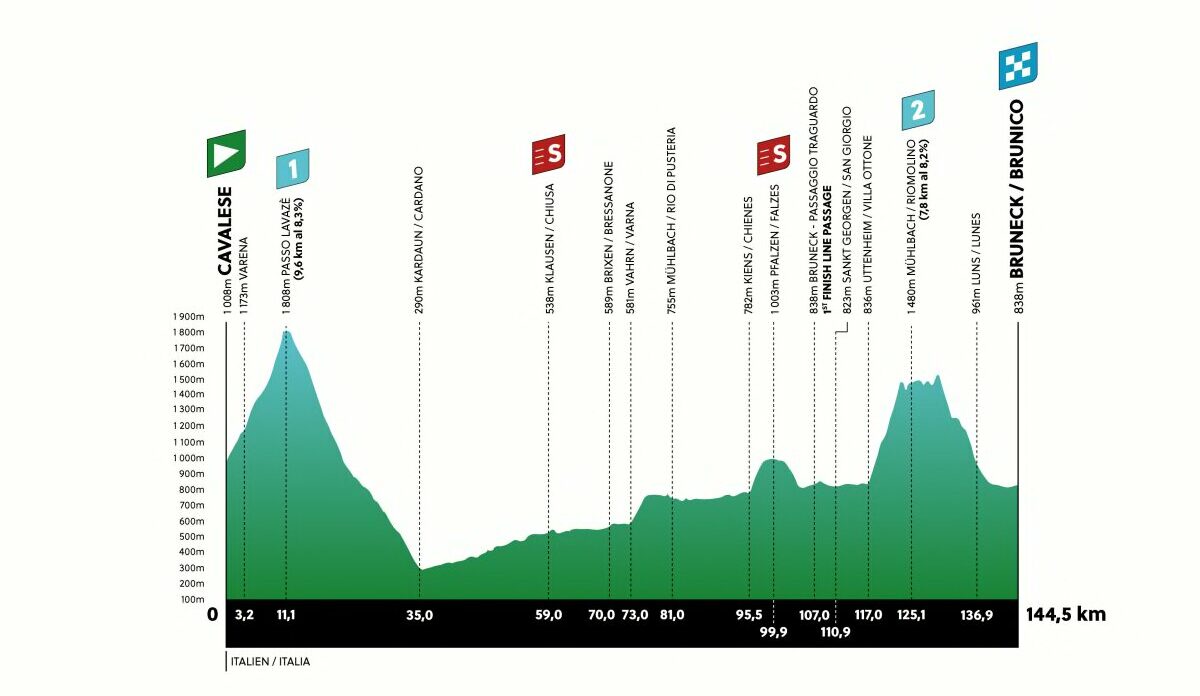
Les favoris du Tour des Alpes 2023

Aleksandr Vlasov (Bora-Hansgrohe)
Il sera l’un des favoris de ce Tour des Alpes.

Santiago Buitrago (Bahrain-Victorious)
Le grimpeur colombien aura une belle carte à jouer.

Tao Geoghegan Hart (Ineos Grenadiers)
il sera l’un des leaders de la formation Ineos.

Hugh Carthy (EF Education-EasyPost)
8ème de Tirreno-Adriatico, il sera à surveiller.

Thymen Arensman (Ineos Grenadiers)
3ème l’an dernier, le Néerlandais trentera de faire aussi bien.

Jack Haig (Bahrain-Victorious)
10ème de Paris-Nice, il tentera de monter en puissance avant le Giro.
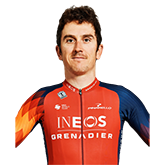
Geraint Thomas (Ineos Grenadiers)
Après un début de saison discret, il essaiera de jouer les premiers rôles.
Comment suivre le Tour des Alpes 2023 ?
Toutes les étapes seront diffusées sur la chaîne l’Équipe 21 et Eurosport 1.
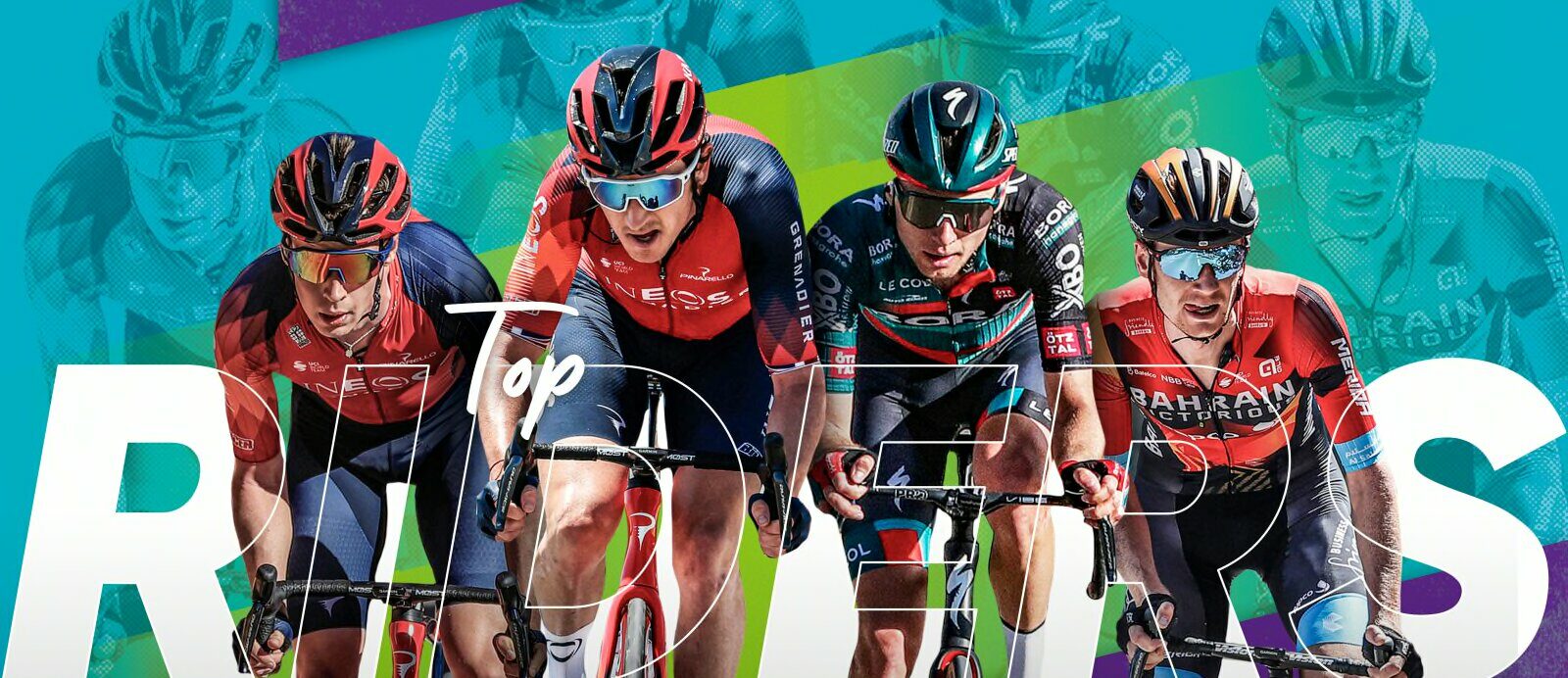
Courses cyclistes
Tour des Alpes
1# Tour des Alpes : victoire de Bouchard
2# Tour des Alpes : Bilbao au sprint
3# Tour des Alpes : victoire de Kämna
4# Tour des Alpes : Lopez en solitaire
Tao Geoghegan Hart remporte la 1ère étape du Tour des Alpes devant Felix Gall
2ème étape Tour des Alpes : nouvelle victoire de Tao Geoghegan Hart
Lennard Kämna s’impose sur la 3ème étape du Tour des Alpes
Gregor Mühlberger s’impose sur la 4ème étape du Tour des Alpes

Tao Geoghegan Hart a remporté, ce vendredi, le Tour des Alpes 2023. Simon Carr (EF Education-EasyPost) a lui remporté la 5ème et dernière étape.

Aleksandr Vlasov (Bora-Hansgrohe) n'a pas pris le départ de la 5ème et dernière étape du Tour des Alpes 2023.
L'Autrichien Félix Grosschartner (Bora-Hansgrohe) remporte la 5ème et dernière étape du Tour des Alpes entre Val du Chiese et Riva del Garda 120.9. Dans...
L'étape reine de ce Tour des Alpes menait les coureurs de Naturno à Pieve di Bono 168.6 km. 3 coureurs se sont dégagés dans...
3ème étape de ce 45ème Tour des Alpes entre Imst et Naturno 162 km. Echappée dès la 1ère difficulté, et c'est au bout que...
Simon Yates (GBR BikeExchange) s'est montré le plus costaud sur la 2ème étape du Tour des Alpes entre Innsbruck et Feichten 121.5 km. A...
De retour au calendrier depuis 2019, absence due au covid, le Tour des Alpes menait les coureurs de Bressanone à Insbruck 140.6 km. Sur...
Le Russe Pavel Sivakov apporte à son équipe le dernier sous les couleurs Sky avec sa victoire finale sur le 43ème Tour des Alpes....
L’Anglais Tao Geoghegan Hart (Sky) a remporté la 4ème étape du Tour des Alpes en réglant le sprint d’un groupe de 4 coureurs. Il...
L'Italien Fausto Masnada (Androni Giocattoli Sidermec) a placé une ultime attaque pour aller remporter en solitaire la troisième étape du Tour des Alpes. Il...
Veuillez laisser ce champ vide.
Veuillez laisser ce champ vide. En renseignant votre adresse email, vous acceptez de recevoir nos derniers articles par courrier électronique et vous prenez connaissance de notre Politique de confidentialité.
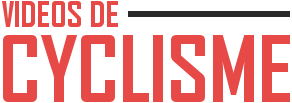
--> Tour des Alpes 2023 : parcours et profils des étapes
16 avril 2023 à 16:30 0
Du lundi 17 au vendredi 21 avril se déroule le Tour des Alpes 2023 (Tour of the Alps), une course par étapes italienne classée en UCI 2.Pro. L’an passé , le Français Romain Bardet s’était imposé devant Michael Storer et son coéquipier Thymen Arensman. Découvrez le parcours et toutes les étapes en détails :
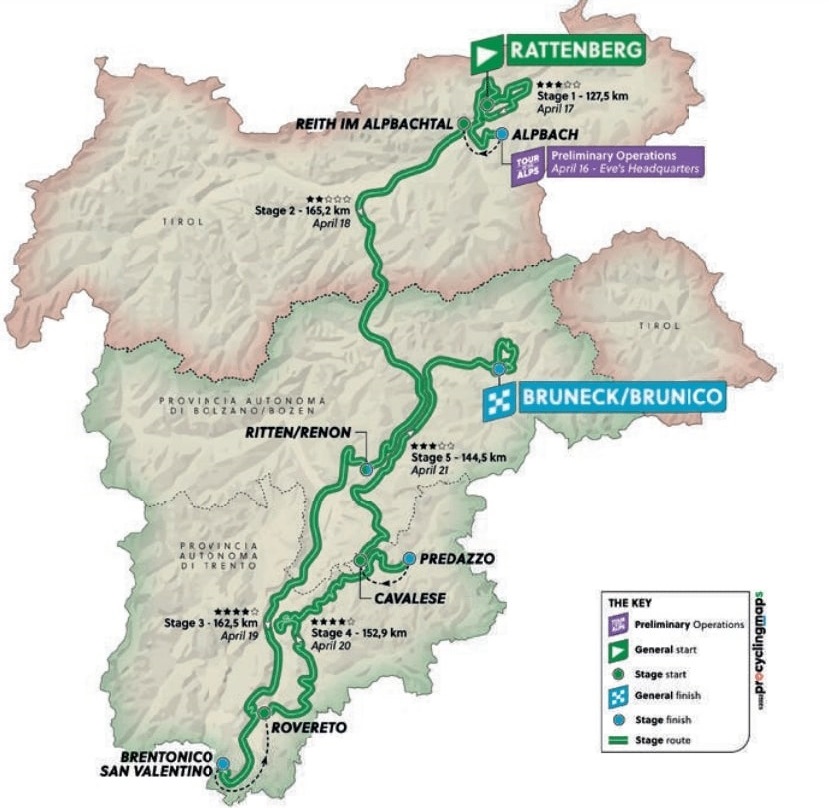
Etape 1 (lundi 17 avril) : Rattenberg – Alpbach, 127.5 km
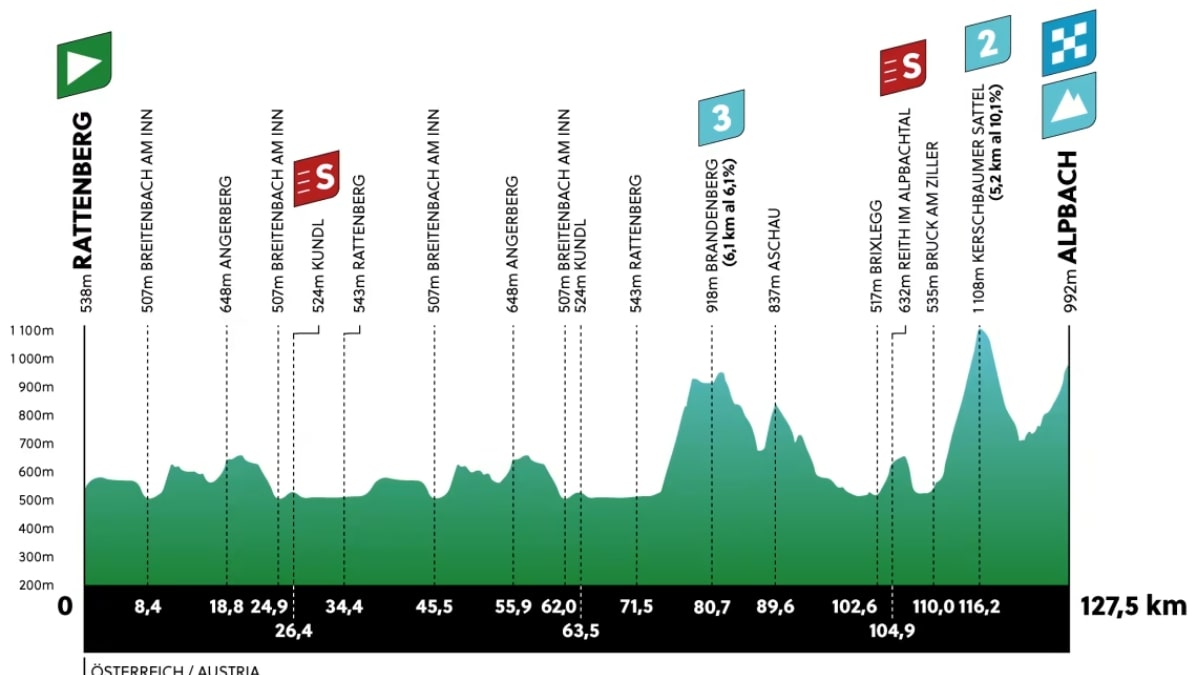
Parcours | Itinéraire horaire | Profil du dernier km | Guide technique
Etape 2 (mardi 18 avril) : Reith im Alpbachtal – Ritten/Renon, 165.2 km
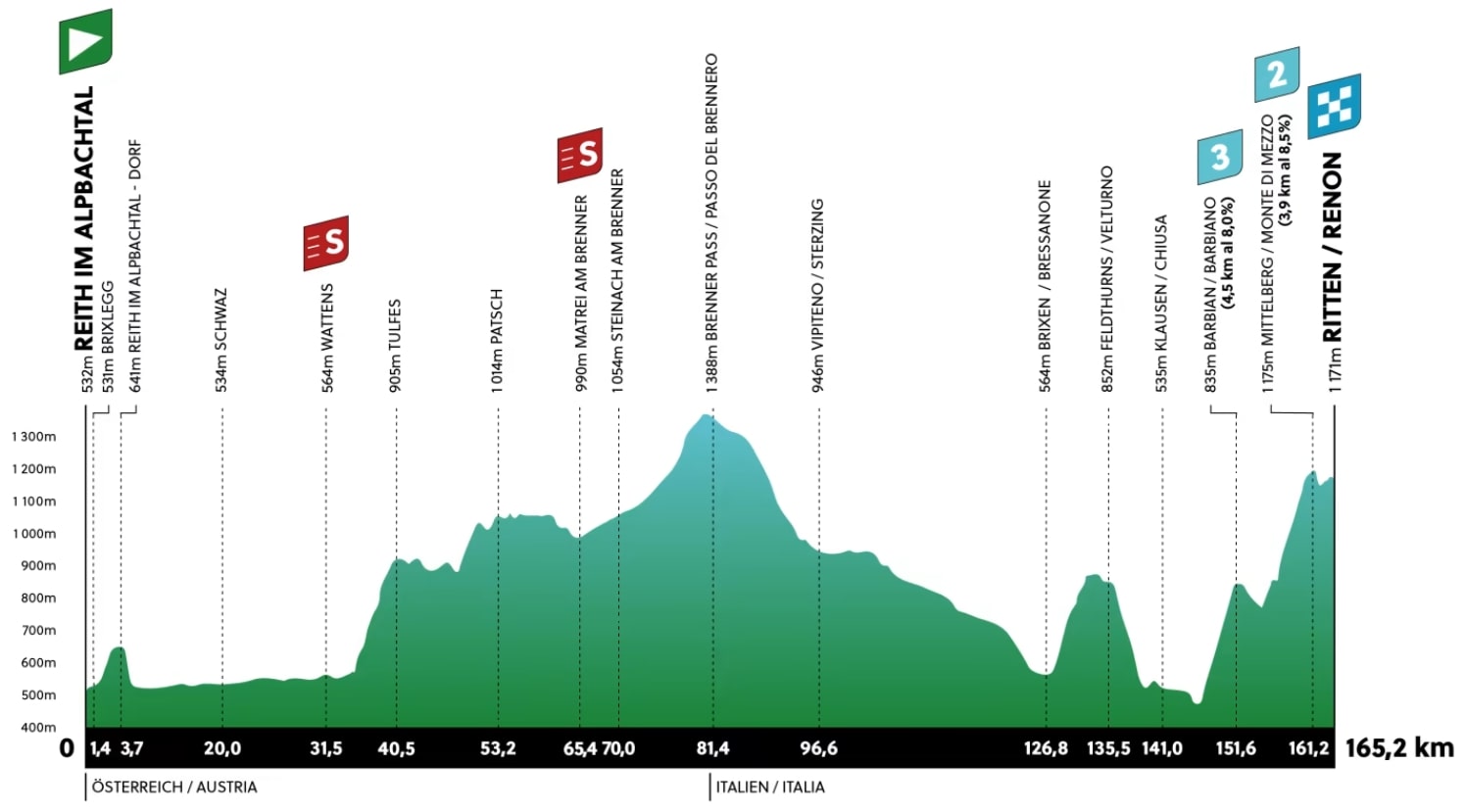
Etape 3 (mercredi 19 avril) : Ritten/Renon – Brentonico San Valentino, 162.5 km
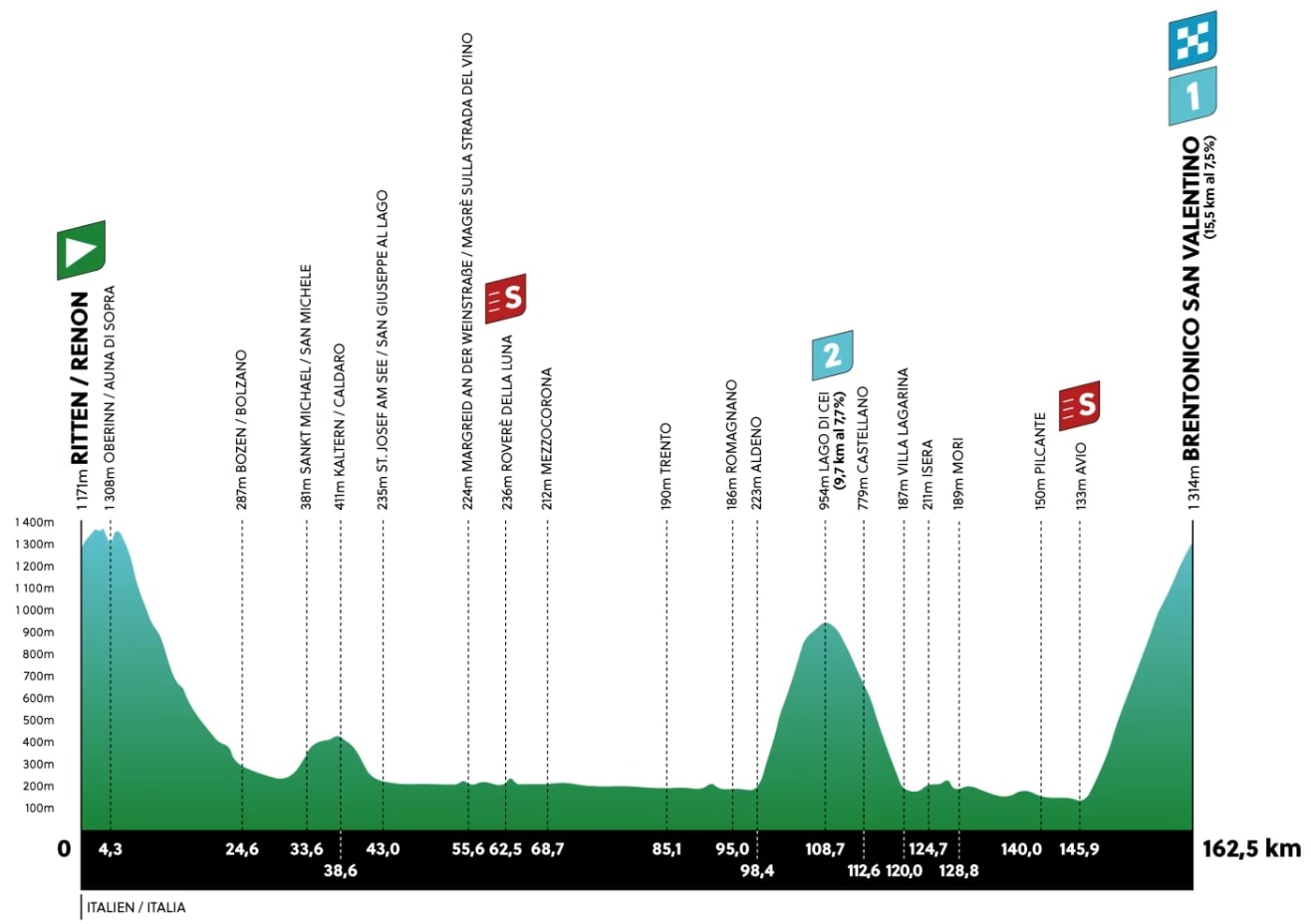
Etape 4 (jeudi 20 avril) : Rovereto – Predazzo, 152.9 km
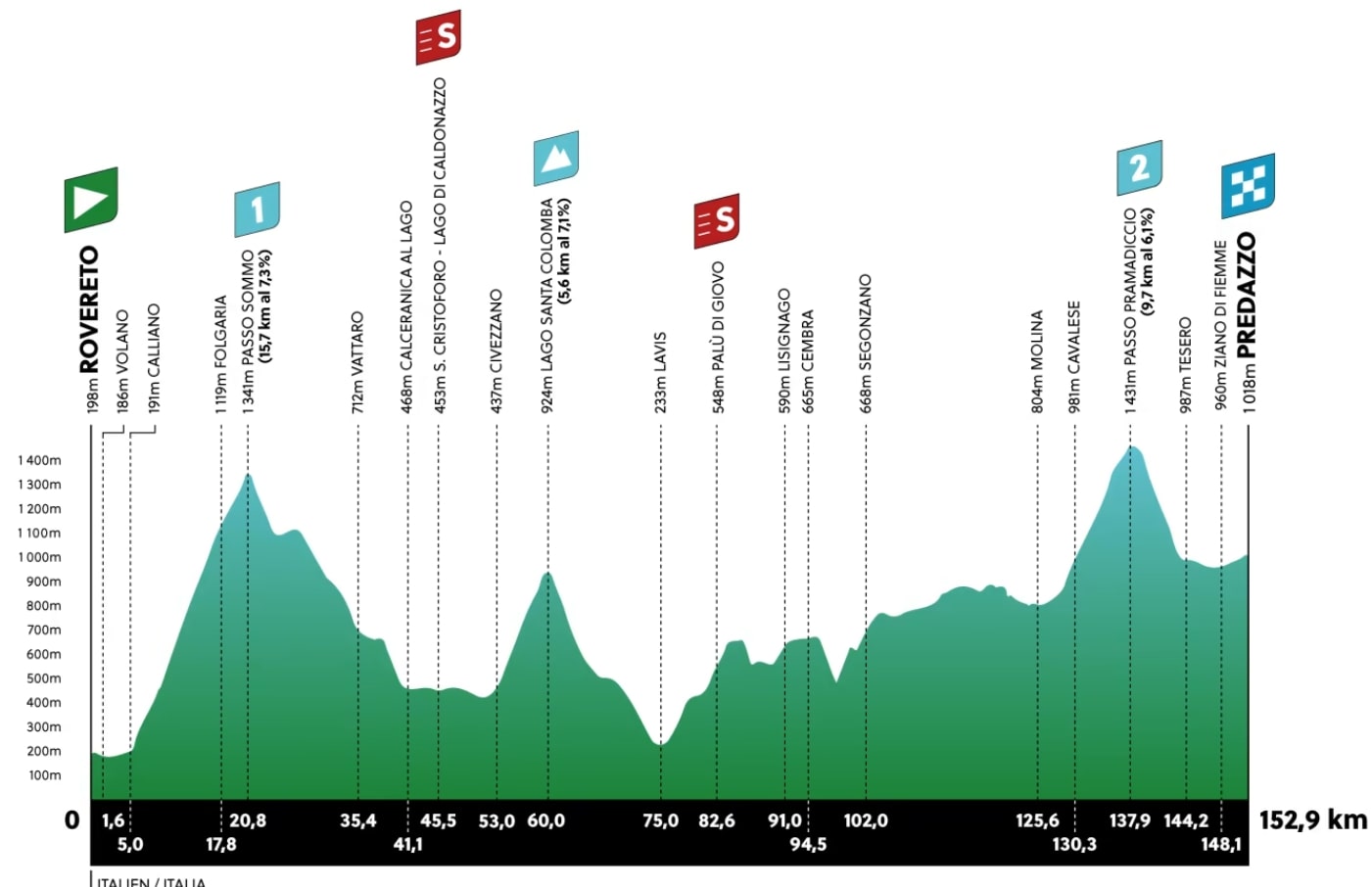
Etape 5 (vendredi 21 avril) : Cavalese – Bruneck/Brunico, 144.5 km
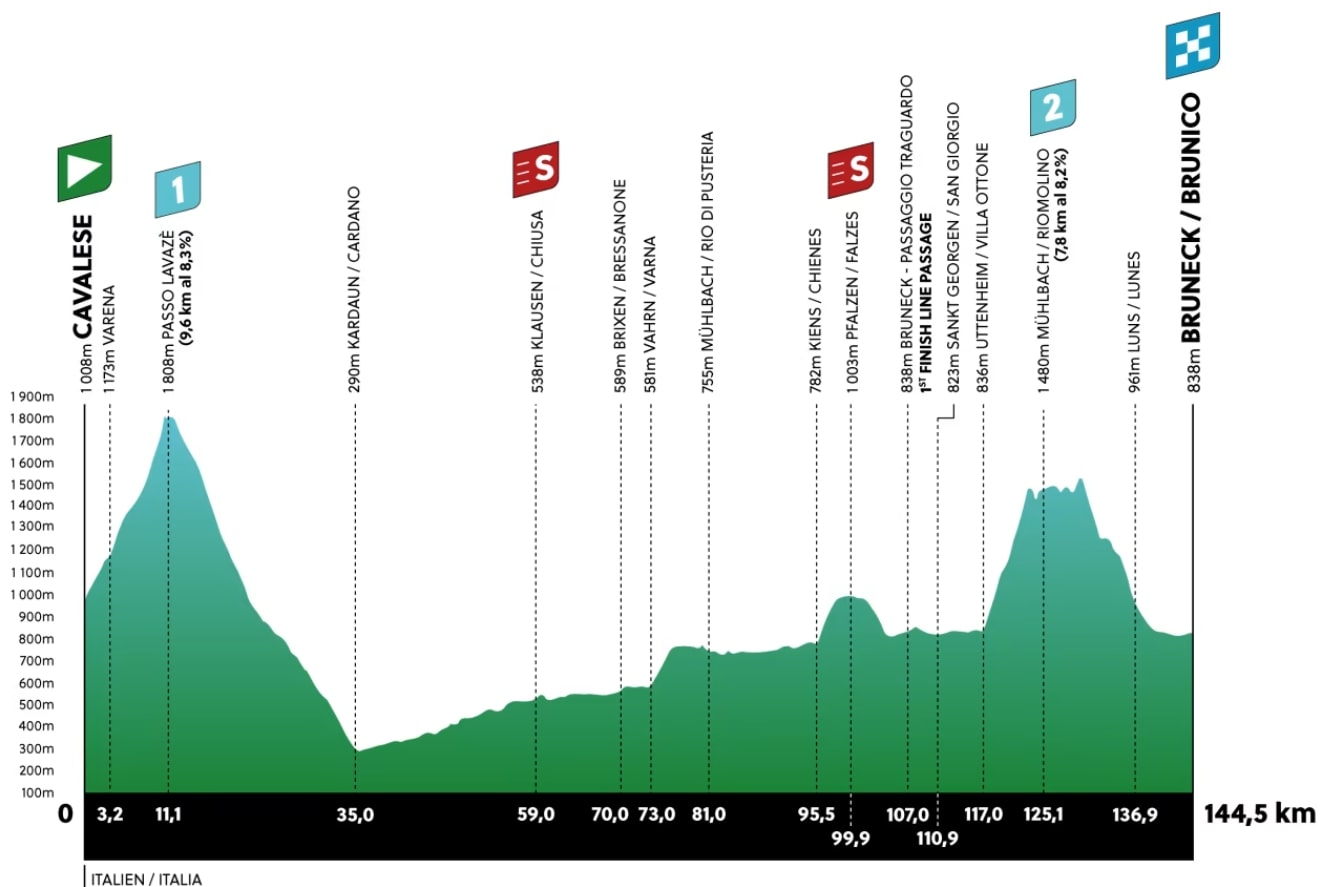
Vous aimez Videosdecyclisme.fr ? Soutenez-le en faisant un don
- Tour des Alpes 2023
Soyez le premier à commenter
Commenter annuler la réponse.
Votre e-mail ne sera pas publié.
Commentaire :
Votre nom : *
Votre e-mail : *
Votre site Web :
Copyright © 2024 | Videosdecyclisme.fr
Bloqueur de publicités détecté
Ce site existe seulement grâce aux publicités. merci de désactiver votre bloqueur de publicités pour pouvoir poursuivre la lecture..

- Facebook 67k
- Twitter 29k
- Instagram 6.2k
- Tik Tok 3.1k
- Youtube 3.7k
- Dailymotion 1.6k
Tour des Alpes - Le parcours complet du Tour des Alpes 2023 déjà révélé
Par Titouan LABOURIE le 09/12/2022 à 21:55
Vidéo - Romain Bardet a remporté cette course en 2022
Le détail des cinq étapes.
Dès la première étape, les coureurs doivent gravir trois ascensions classées et termineront au sommet d'Alpbach. Nous ne verrons probablement pas encore de très gros écarts, même si les coureurs emprunteront une montée de 5,2km à 10,1% dans le final. Les deux étapes suivantes se terminent également en montée, avec des arrivées à Ritten (deux ascensions se suivent, 4,5km à 8% puis 3,9km à 8,5%) et à Brentonico San Valentino (15,5km à 7,5%). Les deux dernières étapes se terminent par une descente, mais ont le plus de dénivelés. L'anné e dernière, Romain Bardet (Team DSM) remportait sa première course par étapes depuis le Tour de l'Ain 2013 à l'occasion de ce Tour des Alpes .
🇦🇹🇮🇹 TOUR OF THE ALPS, 17/4 - 21/4/2023 pic.twitter.com/2wUgzxKoFE — ammattipyöräily (@ammattipyoraily) November 4, 2022
A LIRE AUSSI
Les 18 premières équipes annoncées, dont 9 worldtour, le 47e tour des alpes... 13 250m de dénivelé positif , l'info en continu.

Nos Partenaires

- 7 avr. 2023
- 3 min de lecture
Tour des Alpes 2023 : Parcours et Favoris
Le Tour des Alpes fêtera sa 47ème édition en 2023 et s'élancera le 17 avril prochain. Courue sur 2 pays - Italie et Autriche - à travers un parcours montagneux, l'épreuve joue le rôle de répétition générale avant le Tour d'Italie, prévu début Mai. Présentation de la course, du parcours et des favoris, en rodage !

Histoire de la course
L'histoire du Tour des Alpes, autrefois nommé Tour du Trentin, est assez riche. La première édition a lieu en 1962 et se court alors sur un jour seulement. Partant et arrivant de Trente, la course est remportée par Enzo Moser, frère de Francesco Moser. Après une seconde édition, la course ne sera plus disputée jusqu'en 1979. Cette année-là, l'épreuve remplacera le Tour de Sardaigne pour ne plus jamais s'interrompre (hormis l'édition 2020, en raison de la pandémie).
En 2017, l'épreuve abandonne le nom de Tour du Trentin pour laisser place au Tour des Alpes; volonté des régions traversées par la course afin d'y promouvoir le tourisme. La course s'étend aussi géographiquement et intègre l'ouest de l'Autriche.
Enfin, en 2020, elle a intégré l'UCI ProSeries, le deuxième niveau du cyclisme international.
L'épreuve a donc construit sa réputation sur un parcours montagneux difficile, composée en 2023 de 5 étapes en ligne, dont chacune comprendra au minimum un dénivelé positif de 2300 mètres. Commencée à Clès dans le Trentin, l'épreuve s'achèvera en Autriche à Lienz.
Traditionnellement disputé sur la deuxième quinzaine d'avril, le Tour des Alpes précède de quelques semaines le Giro. La course joue donc un rôle important dans l'approche du Tour d'Italie puisqu'elle permet aux favoris de tester aussi bien leur condition que la concurrence ! L'épreuve consacre donc généralement un coureur spécialiste de course à étapes et de Grand Tour.
Niveau palmarès justement, l'Italie domine nettement les débats avec 29 victoires, loin devant la France ou le Royaume-Uni (2 victoires seulement). Vous ne serez donc pas surpris de voir l'Italien Damiano Cunego truster le classement avec 3 victoires finales, en 2004, 2006 et 2007.
Côté français, Luc Leblanc (1997), Thibaut Pinot (2018) et Romain Bardet (2023) sont les seuls lauréats tricolores.
Record de victoires
Damiano Cunego X3
Moser, Savoldelli, Casagrande, Nibali X2
Parcours et profil des étapes du Tour of The Alps 2023
Comme chaque année, la course sera réservé aux grimpeurs exclusivements. Une préparation idéale pour le Giro ! 3 arrivées au sommet difficile, notamment l'étape 3 qui sera décisive pour le classement général. Les autres étapes offrent cependant le terrain pour renverser la course.
1re étape : Rattenberg›Alpbach (127km)

2e étape: Reith im Alpbachtal›Ritten (165km)

3e étape: Ritten›Brentonico san valentino (162.5km)

4e étape: Rovereto›Brentonico San Valentino (152.9km)

5e étape: Cavalese›Brunico (144.5km)

Favoris du Tour des Alpes 2023
La préparation se poursuit pour les coureurs du Tour d’Italie avec l’un des passages important, la course tremplin : Le Tour des Alpes. Mais tous ces coureurs ne seront pas les grands favoris du Giro, qui eux ont choisi de ne pas courir de courses à étape en avril ! Vlasov, 5e du Tour de France 2023 est le favori de la course mais ne réalise pas une grande saison jusque là. Ineos est l'épouvantail sur le papier avec Thomas, qui sera leur leader sur le Giro, mais aussi Arensman, Geoghegan Hart et Sivakov. Les quatre seront aussi alignés sur le Giro. On suivra avec attention la forme de Kämna, qui peut prétendre à mieux qu'un simple équiper de luxe. Côté français Bouchard visera un top 5, tout comme Paret-Peintre.
++++ Vlasov, Geoghegan Hart
+++ Sivakov, Buitrago, Carthy
++ Kamna, Uijtebroecks, Thomas, Bouchard, Pozzovivo, Paret-Peintre, Gall
+ Haig, Arensman, Sosa, Fortunato, Cepeda, Traeen, Riccitello, Vanhoucke, Bizkarra
- Preview cyclisme
Posts similaires
Tour des Flandres 2024 : Analyse, parcours et favoris
Paris-Roubaix 2024 : parcours détaillé et favoris
A Travers la Flandre 2024 : Parcours, engagés et Favoris
Commentaires

Cyclisme sur route 2023
Tour des alpes 2023 : profil des étapes.
CYCLISME – C’est ce lundi 17 avril que débute le Tour des Alpes 2023. Découvrez le profil des étapes de cette 47ème édition .
1ère étape – Rattenberg – Alpbach : Lundi 17 avril 2023
Étape de moyenne montagne longue de 127,5 km.

© Pro Cycling Stats

Passionné de sport et entrepreneur depuis mes 18 ans, la création de Dicodusport m'a semblé évidente pour participer à la médiatisation d'un plus grand nombre de sports. Le chemin est long mais avec une équipe des plus motivées et les Jeux Olympiques de Paris 2024 en point de mire, nous y arriverons ! Journaliste dans le monde du sport depuis plus de 5 ans, je traite aussi bien de football, de rugby, de biathlon que de cyclisme.
Vos commentaires sont pris en compte mais ne s'affichent pas actuellement suite à un souci technique.
Votre adresse e-mail ne sera pas publiée. Les champs obligatoires sont indiqués avec *

Classement Pro D2 2023-2024
PRO D2 2023-2024 - Découvrez le classement de la saison régulière de Pro D2 2023-2024, qui se déroule du jeudi...

Ligue 1 (J27) : Lille trop fort pour Lens
LIGUE 1 2023-2024 - Au terme d'une partie parfaitement maîtrisée, Lille remporte le derby du Nord face à Lens (2-1)...

EuroCoupe Playoffs : Inarrêtable, le Paris Basketball écarte les Lions et accède à la finale !
EUROCOUPE 2023/24 - Le Paris Basketball a assuré sa qualification pour la finale en l'emportant ce vendredi sur le parquet...

Tennis de table : Étival décroche sa place en finale de la Ligue des Champions féminine
SAISON ETTU 2023/2024 - Après le succès de l'aller, Étival a fini le travail à domicile et verra bien la...

EuroCoupe Playoffs : La JL Bourg grille un joker à Istanbul et disputera une belle décisive à Ekinox
EUROCOUPE 2023/24 - La JL Bourg s'est inclinée ce vendredi sur le parquet du Besiktas, 81-72. Dans le coup en...
Classement général Tour des Alpes 2023
Ben o’connor has come of age: the australian returns to the tour of the alps.
Decathlon AG2R-La Mondiale's captain is one of the many youngsters who broke out at the Tour of the Alps. Following his stage victory in Merano and securing the young rider classification in 2018, O'Connor is set to return to the Euregio roads with significant ambitions from April 15 to 19.
Melinda adds flavour to #TotA’s Green Jersey
#tota and fc südtirol’s bike day a resounding success (on and off the field).
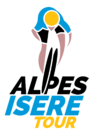
Consulter les parcours détaillés des étapes de l’Edition 2022 :
MERCREDI 25 MAI 2022
Charvieu-Chavagneux -> Charvieu-Chavagneux 118,1 KM
JEUDI 26 MAI 2022
Les Abrets en Dauphiné – VDD -> Saint Quentin Fallavier CAPI 161,2 KM
VENDREDI 27 MAI 2022
Siège CCEL St Exupery -> Toussieu CCEL 145,5 KM
SAMEDI 28 MAI 2022
St Maurice L’Exil -> Beaurepaire 174,0 KM
DIMANCHE 29 MAI 2022
Entre-2-Guiers/Les Echelles -> Allevard 133,1 KM
SUIVEZ NOUS SUR LES RESEAUX SOCIAUX

- Courses en direct
- Calendrier/Résultats
- Tour de France
- Tour d'Espagne
- Dare to Dream
- Toutes les compétitions
- Scores en direct
- Accueil Football
- Ligue des champions
- Premier League
- Accueil Tennis
- Calendrier ATP
- Calendrier WTA
- Accueil Cyclisme
- Accueil Sports d'hiver
- Tous les sports
- Accueil JO Paris 2024
- Olympic Channel
- Mon Paris Olympique
- Accueil Rugby
- Coupe du monde
- Champions Cup
- Accueil Auto-Moto
- Goodyear Ready For Anything
- Accueil Athlétisme
- Ligue de Diamant
- Ch. Monde outdoor
- Ch. Monde indoor
- Accueil Basketball
- Betclic Élite
- Toutes les Ligues
- Accueil Boxe
- Accueil Cyclisme sur piste
- UCI Track Champions League
- Accueil Cyclo-cross
- Accueil Equitation
- Accueil Formule 1
- Classements
- Accueil Golf
- World Ranking
- DP World Tour
- Accueil Handball
- Championnats du Monde
- Championnat d'Europe
- Accueil Judo
- Accueil MotoGP
- Classements Moto GP
- Accueil Natation
- Championnats du monde
- Accueil PTO Tour
- Paris, la vie sportive
- Accueil Snooker
- Northern Ireland Open
- Tous les championnats
- Accueil Speedway
- Accueil Sports universitaires
- Accueil Triathlon
- Accueil UCI TCL
- Classement messieurs
- Classement dames
- Accueil Volleyball
- Marmara SpikeLigue
- Ligue des Champions
- Ligue Mondiale
Tour des Alpes - Course en ligne Hommes - Étape 1
/dnl.eurosport.com/sd/img/match/cycling-header-bg-desktop.jpg)
- Classements généraux
Classement général
Etape actuelle, prochaine étape, dernières infos, carr s'offre la dernière étape, geoghegan hart la victoire finale.
21/04/2023 à 17:37
Mühlberger s'impose, Geoghegan Hart reste leader
20/04/2023 à 16:28
EN DIRECT : Rattenberg - Alpbach
Tour des Alpes - 17 avril 2023
Suivez Tour des Alpes Rattenberg - Alpbach en direct avec Eurosport. Rattenberg - Alpbach commence à 11:55 le 17 avril 2023.
Suivez les dernières informations du cyclisme et retrouvez Tour des Alpes . Résultats , Classements et les parcours. Une fois Rattenberg - Alpbach terminée, n'oubliez pas de consulter le programme complet des étapes et de vous tenir informé en direct de la prochaine étape. Vous pouvez également retrouver une liste des Vainqueurs précédents .
Suivez Romain Bardet, Tadej Pogacar, Thibaut Pinot et d'autres coureurs majeurs pour découvrir qui domine cette saison. Suivez les équipes cyclistes les plus en vue en action - Bora-Hansgrohe, Jumbo Visma, Ineos Grenadiers et Cofidis pour n'en citer que quelques-unes.
Les fans de cyclisme peuvent découvrir les derniers titres de l'actualité Tour des Alpes , des interviews, des commentaires d'experts, des reprises et des temps forts. Suivez tous les grands événements de la saison, notamment le Tour de France, le Giro et la Vuelta.
Faites d'Eurosport votre source principale d'information pour le sport en ligne, du cyclisme au football, au tennis, au snooker et bien plus encore. Profitez des mises à jour en direct des plus grandes compétitions sportives.
Cyclisme sur route : Julian Alaphilippe pour concurrencer Mathieu van der Poel sur le Tour des Flandres 2024 ? | Présentation, parcours programme, et comment regarder
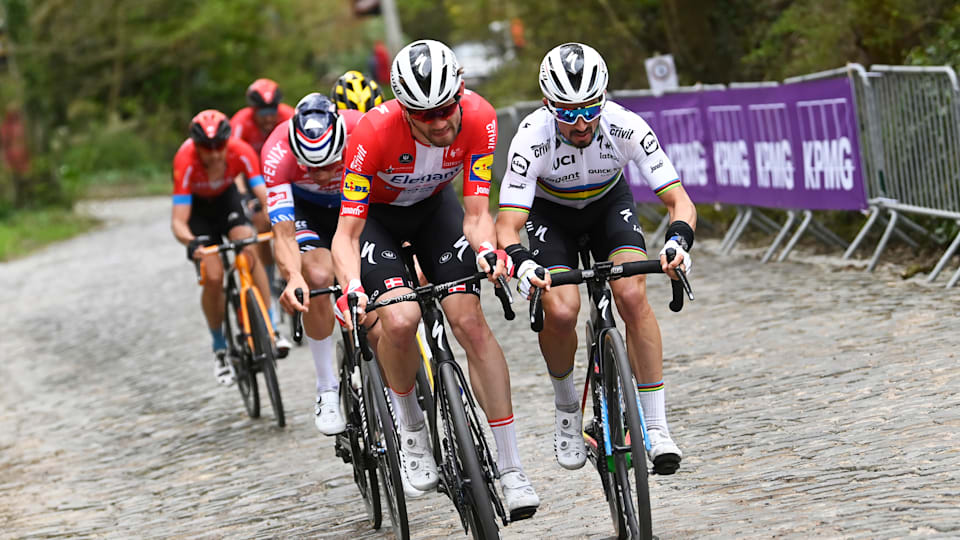
Le Tour des Flandres 2024 se tient le dimanche 31 mars.
Un parcours long de 270,8 km entre Anvers et Audenarde attend le peloton pour le deuxième Monument de la saison
Cette 108e édition pourrait rentrer dans l'histoire en cas de victoire de Mathieu van der Poel . Grandissime favori après avoir remporté l'E3 Saxo Classic , sa première victoire en 2024, le Néerlandais peut égaler le record de trois victoires sur De Ronde van Vlaanderen actuellement co-détenu par six hommes.
Son rival de toujours, le Belge Wout van Aert , est forfait à cause de sa chute sur À travers la Flandre et manquera toutes les Classiques restantes. Tadej Pogacar , tenant du titre, est aussi absent mais les prétendants restent nombreux avec notamment Julian Alaphilippe , Alberto Bettiol ou Stefan Küng .
Parcours, programme, favoris, comment regarder en direct : découvrez tout ce qu'il faut savoir sur le Tour des Flandes 2024 .
LIRE AUSSI - Comment se qualifier en cyclisme pour Paris 2024 ?
Cyclistes à suivre au Tour des Flandres 2024
Tim Wellens aura les mains libres sur le Tour des Flandres 2024. En l'absence de son coéqupier Tadej Pogacar , il sera le leader de l'équipe UAE Team Emirates.
Mads Pedersen , qui a battu van der Poel au sprint sur Gand-Wevelgem est aussi attendu mais dans quel état ? Le Danois a été impliqué dans une chute sur À Travers les Flandres cette semaine.
Julian Alaphilippe , avec la Soudal Quick-Step, va tenter de dynamiter la course. Après sa neuvième place sur Milan-San Remo , où il aurait pu viser mieux une sans crevaison, l'ancien double champion du monde pourra-t-il prétendre à la victoire ? Il a le profil pour.
Le Slovène Matej Mohoric (Bahrain Victorious) peut aussi espérer faire un bon résultat. Excellent descendeur, il réalise un bon début de saison. Son style agressif, fait d'attaques incessantes, peut être redoutable sur cette course.
Parmi les autres outsiders, on retrouve le Suisse Stefan Küng ou l'Américain Matteo Jorgenson qui a gagné Paris-Nice et À Travers la Flandre.
Retrouvez la liste complète des participants ici, sur le site officiel du Tour de Flandres .
LIRE AUSSI - Calendrier du circuit mondial UCI en 2024
Parcours du Tour des Flandres 2024
Le peloton va parcourir 270,8 km entre Anvers et Audenarde lors de l'édition 2024 du Tour des Flandres. Véritable course de mouvement pensée pour les coureurs qui aiment attaquer, la plus belle des classiques flandriennes est faite de montées, de pavés et de routes escarpées qui sont la signature de ce Monument .
Le Tour des Flandres peut se gagner, mais surtout se perdre, dans les monts pavés mythiques que sont le Vieux Quaremont , le Paterberg ou le Koppenberg .
Les pourcentages, comme les milliers de spectateurs, s'y comptent en dizaines pour un spectacle total.
Programme du Tour des Flandres 2024
- 10h00 : Départ d'Anvers (Steenplein)
- 16h29 environ : Arrivée à Audenarde (Minderbroedersstraat)
Palmarès du Tour des Flandres
- 2023 : Tadej Pogacar (SLO)
- 2022 : Mathieu van der Poel (NED)
- 2021 : Kasper Asgreen (DEN)
- 2020 : Mathieu van der Poel (NED)
- 2019 : Alberto Bettiol (ITA)
LIRE AUSSI - Mathieu van der Poel rêve de VTT aux JO de Paris 2024
Comment regarder le Tour des Flandres 2024 ?
Pour voir le Tour des Flandres 2024 , rendez-vous dès 9h45 sur Eurosport ou à partir de 13h45 sur France Télévisions .
LIRE AUSSI - Paris 2024 dévoile le parcours des épreuves de cyclisme sur route
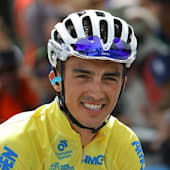
Contenu associé

Cyclisme : Lenny Martinez meilleur jeune et septième du classement général de la Volta a Catalunya 2024

E3 Saxo Classic : Mathieu van der Poel s'impose en solitaire, Wout Van Aert termine troisième | Résultats, classement et résumé

Cyclisme | Classiques flandriennes 2024 : Présentation, coureurs, calendrier et comment regarder Alaphilippe, Laporte, van Aert et van der Poel en direct

Cyclisme sur route : Programme de Julian Alaphilippe en 2024 | Calendrier de ses courses avec le Giro et les Jeux Olympiques

Milan-San Remo 2024 | Jasper Philipsen l'emporte au sprint
Vous aimerez peut-être.
- accéder au contenu
- accéder au menu principal
- contactez-nous
- direct radio
- Gouvernement de Gabriel Attal
- Assemblée nationale
- Emmanuel Macron
- Réforme des retraites 2023
- Les Républicains
- Renaissance
- Rassemblement national
- Parti socialiste
- La France insoumise
- Les Ecologistes - EELV
- Election présidentielle
- Toutes les élections
- Élections européennes 2024
- Egalité femmes-hommes
- Immigration
- Maltraitance dans les Ehpad
- Droits des femmes
- Violences sexuelles
- Féminicides
- Prostitution
- Calendrier des vacances scolaires
- Résultats Bac
- Résultats Brevet
- Résultats Bts
- Résultats Cap
- Harcèlement scolaire
- Enlèvements
- Justice – Procès
- Incendies de forêt
- Mort de Nahel à Nanterre
- Disparition de Delphine Jubillar
- Attaque au couteau à Annecy
- Procès de l’attentat de Magnanville
- Disparition du petit Emile
- Incendie meurtrier à Wintzenheim
- Vaccin contre le Covid-19
- La crise de l’hôpital public
- Biologie - Génétique
- Alimentation
- Lutte contre le tabagisme
- Politique de santé
- Psycho - Bien-être
- Sport et santé
- Professions médicales
- Le tabou de la santé mentale
- Pouvoir d'achat
- Impôts - Fiscalité
- Entreprises
- Auto-entrepreneurs
- Aéronautique
- Budget de la France
- Soldes d'hiver 2024
- Asie-Pacifique
- Etats Unis d'Amérique
- Proche-orient
- Guerre en Ukraine
- Sommet de l'UE
- Royaume-Uni
- Story Killers
- Conflit dans le Haut-Karabakh
- Guerre entre Israël et le Hamas
- Inondations meurtrières en Libye
- Séisme au Maroc
- Festival de Cannes 2024
- Oscars 2024
- Victoires de la musique 2024
- Festival du livre de Paris 2024
- Les Molières
- Fête de la musique 2024
- Rock en Seine 2024
- Festivals d'été
- Roland-Garros
- Coupe du monde de foot
- Mondiaux d'athlétisme
- Coupe du monde de rugby
- Crise climatique
- Convention citoyenne sur le climat
- Biodiversité
- Pollution de l'air
- Le tableau de bord du réchauffement climatique
- Nos réponses à vos questions sur le climat
- Empreinte carbone
- Montée des eaux
- Greta Thunberg
- Carte des restrictions d'eau
- Tableau de bord des nappes phréatiques
- Calculez votre empreinte carbone
- Calculez l'impact carbone de vos déplacements
- Trouvez des fruits et légumes de saison
- Triez mieux vos déchets
- Intempéries
- Météo France
- Météo Paris
- Météo Marseille
- Actualités météo
Solitaire du Figaro : le parcours dévoilé, des festivités à Rouen pendant une semaine
De Rouen (Seine-Maritime) à La Turballe (Loire-Atlantique) en passant par Gijón (Espagne) et Royan (Charente-Maritime), le parcours d’une des courses en solitaire les plus difficiles au monde, la Solitaire du Figaro, a été dévoilé à Rouen, vendredi 24 mars 2024, avec son lot d’animations dans la capitale normande.
« À la première approche, Rouen peut surprendre », reconnaît Malo Le Peru, chef de projet de La Solitaire du Figaro Paprec, présent dans la capitale normande ce vendredi 29 mars 2024 pour une conférence de presse autour de l’évènement.
Rouen, ville de Grand départ
Pourtant, c’est bien Rouen qui a été choisi comme ville de Grand départ. Selon le chef de projet, la ville maritime, portuaire et fluviale répond à tous les critères avec des bateaux qui seront amarrés à proximité du centre-ville, accessibles gratuitement au public.
« Et puis ces remontées et descentes de la Seine, c'est l’occasion pour le public d’assister à l’arrivée des bateaux sous voiles, c’est assez rare », s’enthousiasme Malo Le Peru. Le jour du départ, la descente de la Seine est avant tout un convoyage technique, « l’enjeu pour nous c’est que les bateaux partent de Rouen et arrivent jusqu’au port du Havre sans problème parce qu’ils prennent le départ deux jours après », développe-t-il.
Une semaine de village évènementiel
Le village sera ouvert à partir du samedi 17 août jusqu’au vendredi 23 août, jour du départ des voiliers. « C’est avant tout la rencontre entre les marins et le public, des animations pour les petits et les grands, une scène animée toute la journée », explique Malo Le Peru.
Des animations musicales, des animations nautiques avec les clubs locaux le CVSAE (Club de voile de Saint-Aubin-lès-Elbeuf) et le YCR 76 (Yacht club Rouen 76). « On va pouvoir se défier sur des concours de winch (manivelle servant à monter et descendre les voiles) qui plaisent toujours au grand public », se réjouit Malo.
Avec l’Armada, le seul point commun est la présence de bateaux. 50 000 visiteurs sont attendus à Rouen pour cette 55 ème édition de la Solitaire du Figaro Paprec (contre six millions lors de la dernière édition de l’Armada).
Le village départ de la célèbre course est l’occasion d’une fête maritime avec pour objectif premier une grande présentation des marins. « C’est important pour nous que le public découvre les marins et essaie de s’identifier à ces profils-là, on a des hommes, des femmes de 18 à 62 ans ». Actuellement, 38 navigateurs se sont positionnés pour participer à la course.
Visites des embarcations « spartiates »
Assez rare dans la discipline, il sera possible de visiter les bateaux, habituellement sous le secret technologique. « Je pense que le public va être surpris par ces bateaux-là, ils sont très spartiates, il n’y a pas de cuisine, pas de toilettes et pourtant les marins y restent plusieurs jours d’affilée », explique le chef de projet.
« Ils vont pouvoir y découvrir toutes les petites annotations de leurs équipes, les petits mots d’encouragement cachés dans le bateau. La course est dure et peut-être que visiter les bateaux ça racontera cette difficulté », confie Malo Le Peru.
Le parcours détaillé de Rouen à La Turballe
C’est l’une des courses des plus difficiles au monde. « Le plus long des formats courts avec des temps de sommeil extrêmement courts », précise Yann Chateau, directeur de la course la Solitaire du Figaro Paprec avec des cycles de quatre nuits en mer puis trois nuits à terre. Et contrairement au Vendée Globe, lors de la Solitaire du Figaro, tous les marins naviguent sur le même voilier monocoque.
Les skippers doivent repousser leurs limites assez loin pour performer. « C’est une grande fierté d’accueillir cette course, une des plus belles au monde », s’est réjoui Nicolas Mayer-Rossignol, président de la Métropole Rouen-Normandie lors de la conférence de presse organisée ce vendredi 29 mars 2024.
La 55 ème édition de la Solitaire du Figaro Paprec se disputera en trois étapes inédites du 17 août au 15 septembre. La première ralliera Rouen à Gijón en Espagne sur 615 milles nautiques. La deuxième entre Gijón et Royan (Charente-Maritime) sur 605 milles nautiques et la dernière étape ralliera Royan à La Turballe (Loire-Atlantique) sur 620 milles nautiques.
Au total, 1840 milles nautiques (soit plus de 3400 kilomètres) de course côtière et hauturière, au contact et courue au temps. L’arrivée est programmée le 12 septembre 2024.
Pour aller plus loin :
Notre sélection d’articles à explorer sur le même thème.
- copier le lien https://france3-regions.francetvinfo.fr/normandie/seine-maritime/rouen/solitaire-du-figaro-le-parcours-devoile-des-festivites-a-rouen-pendant-une-semaine-2947784.html
- Bourg-en-Bresse
- Clermont-Ferrand
- Le Puy-En-Velay
- Saint-Etienne
- Haute-Loire
- Haute-Savoie
- Puy-de-Dôme
- Toute la région
- Chalon-sur-Saône
- Lons le Saunier
- Luxeuil Les Bains
- Montbéliard
- Côte-d'Or
- Haute-Saône
- Saône-et-Loire
- Territoire de Belfort
- Saint-Brieuc
- Côtes-d'Armor
- Ille-et-Vilaine
- Châteauroux
- Eure-et-Loir
- Indre-et-Loire
- Loir-et-Cher
- Corse-du-Sud
- Haute-Corse
- Châlons-en-Champagne
- Charleville-Mézières
- Saint-Dizier
- Haute-Marne
- Meurthe-et-Moselle
- Boulogne-sur-Mer
- Saint-Quentin
- Valenciennes
- Pas-de-Calais
- Cherbourg-En-Cotentin
- Seine-Maritime
- Châtellerault
- La Rochelle
- Mont-de-Marsan
- Sarlat-la-Canéda
- Charente-Maritime
- Deux-Sèvres
- Haute-Vienne
- Lot-et-Garonne
- Pyrénées-Atlantiques
- Montpellier
- Haute-Garonne
- Hautes-Pyrénées
- Pyrénées-Orientales
- Tarn-et-Garonne
- Grand Paris
- Saint-Denis
- Hauts-de-Seine
- Seine-et-Marne
- Seine-Saint-Denis
- Val-de-Marne
- Val-d'Oise
- La Roche-sur-Yon
- Les Sables-d'Olonne
- Saint-Nazaire
- Loire-Atlantique
- Maine-et-Loire
- Aix-en-Provence
- Digne-les-Bains
- Fréjus Et Saint-Raphaël
- Saint-Tropez
- Alpes-de-Haute-Provence
- Alpes-Maritimes
- Bouches-du-Rhône
- Hautes-Alpes
- Toute la France

Les Dolomites vous font rêver ? Voici comment les découvrir en train
- Lire dans l’app
- Copier le lien Lien copié
Malgré les idées reçues, voyager en montagne sans voiture, et par le train, c'est possible, même en Italie. Voici nos conseils pour côtoyer les sommets des Dolomites sans prendre le volant.
La voie du Nord : en train sur la Bolzano-San Candido
La voie du sud : de feltre à cortina.
Situées à cheval entre le Trentin-Haut-Adige et la Vénétie, les Dolomites font rêver. Appelées « Montages Pâles » jusqu'en 1796, elles sont ensuite baptisées Dolomites en hommage à Déodat Gratet de Dolomieu, géologue français dont les travaux portèrent sur la pierre dolomie, dont le massif est riche. Son plus haut sommet, la Marmolada, culmine à 3343 mètres. Autres géants, le Plan de Corrona (2277m), les Tre Cime di Lavaredo (2999m) ou les Cinque Torri (2361m), sont des destinations prisées des skieurs en hiver, des randonneurs l'été. Entre les cimes, les lacs d'altitude reflètent les sapins. Autrefois, une ligne de train traversait entièrement le massif, de Dobbiaco à Calalzo. Hélas, démantelée en 1964, elle a été remplacée par une piste cyclable, certes splendide. Pour aborder le massif, il ne nous reste plus que deux lignes : côté Vénétie, de Feltre à Colalzo, côté Trentin-Haut-Adige, la Bolzano San Candido. Complétées par un réseau de bus et de télésièges, elles permettent de passer des vacances dans les Dolomites sans voiture, et sans renoncer pour autant ni à la nature ni aux paysages splendides.
Allemands et Italiens se mêlent dans les rues de Bolzano , capitale de la province autonome du même nom. Agréable, à l'architecture alpine et aux façades colorées en style italien, Bolzano est une bonne introduction à ce voyage. Avant de quitter la ville en train, on embarque pour un voyage vertical vers le plateau du Renon, qu'on atteint en télécabine. Là haut, une ligne de train relie sept villages plongés dans une nature verdoyante, d'où contempler les cimes des Dolomites. Pour s'approcher de ces montagnes scintillantes, on redescend à Bolzano où monter à bord du train régional pour Fortezza . En route, on s'arrête à Bressanone , belle cité sur le chemin entre l'Autriche et l' Italie . Un bus roule jusqu'à l' Abbazia di Novacela , qu'on visite pour goûter ses vins d'altitude frais et équilibrés. À Fortezza, changement de cap : le train continue vers le col de Brennero pour gagner l' Autriche , nous, on change de ligne pour parcourir la Val Pusteria, qui commence cpoté italien et se prolonge après la frontière. À Brunico , on monte à bord du téléphérique vers le Plan de Corrones , où visiter le musée de la Montagne fondé par l'alpiniste Reinhold Messner, skier ou randonner, à moins qu'on ne préfère déjeuner dans le panoramique restaurant d'altitude AlpiNN, qui sert un tiramisù mémorable. À Dobbiaco , le lac de montagne n'est pas bien loin de la gare, et un bus emporte les marcheurs vers les Tre Cime, sommet emblématique du massif. Enfin, à Versiaco , la télécabine décolle directement de la gare jusqu'au Mont Helm, à la frontière avec l'Autriche. Le train s'arrête là, mais à vélo, on peut poursuivre l'exploration de la Val Pusteria jusqu'à Lienz, une balade réalisable en journée.
Certes, les Dolomites n'ont pas de frontières officielles, mais on peut tout de même dire que Feltre en est la porte d'entrée Sud. Des trains venus de Trévise , dans la plaine, circulent jusqu'à sa gare, en contrebas de l'éperon où pousse le centre-ville. Si au Nord, l'influence autrichienne est palpable, ici, c'est Venise qui a étendu sa domination, d'où les palais au style rappelant la cité lagunaire. Le train poursuit sa course entre le Piave et le flanc des montagnes du Parc National des Dolomiti Bellunesi pour arriver à Belluno , la « grande ville » du coin. Ici aussi, la Renaissance vénitienne a laissé palais et tours. Pour la visiter, on suit un parcours piéton baptisé percorso rosso ou percorso Dolomiti , qui part du centre d'information du parc des Dolomites pour explorer Piazza Mercato , passer sous la Torre Civica et rejoindre le Duomo. Les autocars de la compagnie Dolomitibus permettent de s'aventurer dans la montagne, en direction d' Agordo , village perché d'où partent des sentiers de randonnée. En train, on ira jusqu'à Calalzo , au bout de la ligne. Un bus CortinaLink, assuré par Trenitalia, permet enfin de gagner Cortina d'Ampezzo, station huppée surnommée la Reine des Dolomites . Située dans une conque entre trois sommets, la petite ville aux magasins de luxe est prisée pour la beauté de son domaine skiable, qui compte 120 km de pistes. Depuis le centre, un téléphérique grimpe au refuge Faloria. Depuis ce chalet, la vue plonge sur le massif enneigé. On y trouve des chambres, un spa et une table agréable pour déguster la gastronomie italienne montagnarde.
Bon à savoir :
Côté Nord, la région Trentin-Haut-Adige propose une carte dite MobilCard ou MuseumCard, qui ouvre les portes de 89 lieux culturels et permet de prendre les transports gratuitement. Certains hôtels vous offriront la GuestCard, version gratuite de la MobilCard, le temps de votre séjour.
Tous les billets sont à acheter sur Trenitalia ou en gare. S'agissant de trains régionaux, le tarif est fixe et le placement libre.
EN VIDÉO - SNCF : LES BILLETS DE TRAIN POUR LES VACANCES D'ÉTÉ PARTENT VITE
- En Italie, ces cinq trains d’époque vous font voyager dans le temps et dans l'espace
- Au pied de l’Etna et le long de la Méditerranée : nos conseils pour faire le tour de la Sicile en train
- L’Italie en train : de Milan au lac d’Iseo, découverte de la Lombardie du patrimoine et des lacs
- vacances d'été
Partager via :
Plus d'options
Il n'y a actuellement aucun commentaire concernant cet article. Soyez le premier à donner votre avis !
Vous aimez l’archéologie ? À la découverte de la fascinante Éphèse
Éphèse fut l’une des plus puissantes cités grecques d’Asie mineure, même si les ruines les plus spectaculaires sont un héritage de l’époque romaine. La cité qui héberge les restes du temple d’Artémis, l’une des sept merveilles du monde, dévoile un impressionnant complexe archéologique qui réveille sa splendeur passée. Balade fascinante au cœur du « Pompéi turc ».
Visiter Lisbonne et sa région en 3 jours : itinéraire jour par jour et conseils
La capitale portugaise plaît, beaucoup. Mais voici comment vraiment profiter de Lisbonne et prolonger le plaisir à Cascais et Sintra sur un long week-end.
Partir sur les Chemins de Compostelle : ce qui pourrait vous surprendre
À partir d’avril, les marcheurs comment à reprendre leur bâton de pèlerin vers Saint-Jacques de Compostelle. Novices ou confirmés, ils ne sont pas à l'abri de surprises qui pimenteront le parcours, côté français comme espagnol.
- Résultats des élections
- Tension Iran-Etats Unis
- Corée-Du-Nord
- Actualité politique en temps réel
- Analyses, débats politiques et sociétaux
- Actualité et réseaux sociaux
- Programme TV en ce moment
- Programme TV TNT
- Séries Netflix, HBO, OCS et TV
- Election et photos Miss France 2024
- Programme TV Canalsat
- Programme TV Free
- Programme TV SFR
- Actu people
- Calendriers et résultats des matchs en direct
- Coupe du monde de rugby 2023
- Jeux olympiques
- Actualité cyclisme
- Résultats, classement général Tour De France
- Qualifications Euro 2024
- Classement Ligue 1
- Classement Top 14
- Transferts football
- Coupe du monde 2022
- Ballon d'Or France Football
- Horoscope du jour
- Guide du mariage
- Recettes de cuisine
- Brigitte Macron
- Apéritif dînatoire
- Recette pâte à crêpe
- Tendance bijoux
- Meghan Markle
- Gainer son corps
- Fiches et guides des médicaments
- Astuces et conseils bien-être
- Santé et sexualité
- Index des maladies
- Conseils alimentation, nutrition et santé
- L'encyclopédie des organes
- Conseils en psychologie
- La pollution va t-elle nous tuer ?
- Apnée du sommeil : Comment mieux dormir ?
- 15 mythes sur les vertus des aliments
- Guide d'achat maison et jardin
- Guide d'achat santé et beauté
- Guide d’achat high-tech
- Guide d'achat smartphones et tablettes
- Comment choisir le meilleur extracteur de jus ?
- Quelle est la meilleure montre connectée ?
- Quel est le meilleur home cinéma sans fil ?
- Comparatif semelle gel
- Quel épilateur électrique choisir ?
- Meilleurs VPN de 2023
- Révisions du Bac
- Annuaire des écoles de commerce
- Les entreprises qui recrutent
- Trouver un stage
- Résultats Brevet des collèges
- Classement des écoles de commerce
- Trouver une alternance
- Agenda étudiant : JPO, salons…
- Succession de Johnny Hallyday
- Sorties cinéma
- Guide arts et expositions
- Actualité musicale
- Actualité jeux-vidéo
- Citations et proverbes
- Réservation de spectacles et théâtre
- Sortir à Paris
- Histoire de France
- Langue française
- Code promo Wish
- Code promo Cdiscount
- Code promo SheIn
- Code promo eBay
- Code promo AliExpess
- Code promo Deliveroo
- Code promo Nike
- Code promo Sephora
- Code promo Showroomprive
- Code promo Asos
- Toutes les offres d'emploi
- Emploi à Paris
- Emploi à Lyon
- Emploi à Toulouse
- Emploi à Nantes
- Emploi à Bordeaux
- Emploi commercial
- Emploi contrôleur de gestion
- Emploi logistique
- Emploi communication
- Nos fiches métiers
- Annonces immobilières
- Achat appartement Paris
- Achat appartement Nice
- Achat appartement Cannes
- Achat appartement Bordeaux
- Achat appartement Lyon
- Achat appartement Aix-en-provence
- Achat maison Bordeaux
- Achat maison Marseille
- Achat maison Montpellier
- Simulateur de seuil de richesse
- Actualité économique et analyses
- Impôts sur le revenu : simulateur
- Palmarès des villes où investir dans l'immobilier
- Studios et 2-pièces : les loyers ville par ville
- Calculer l'impôt à payer
- Barême des droits de succession et donation
- Indice de référence des loyers (IRL)
- En France, les hauts revenus sont-ils tous des «riches»?
- Carte familles nombreuses : jusqu’à 75 % de réduction sur les billets de train
- Guide des croisières
- Guide voyage Jordanie
- Guide voyage Namibie
- Guide voyage Maroc
- Guide voyage New York
- Guide voyage Birmanie
- Guide voyage Lille
- Guide voyage Antilles
- Guide voyage Japon
- Guide voyage Amsterdam
- Le Figaro Magazine
- Madame Figaro
- Le Figaro Hors-Série
- Le Figaro Histoire
- TV Magazine
- F, l'art de vivre
- SCPI de rendement
- Changer d’assurance de prêt immobilier
- Le Village de l'emploi avis
- Alarme maison
- Demande de carte grise en ligne
- Définition du portage salarial
- Stress et troubles du sommeil
- A savoir en France
- Annonces légales
- Comprendre le vin
- Tops et sélections
- Domaines et vignerons
- Economie du vin
- Foire aux vins
- Magazine du vin
- Cocktails et mixologie
- Terroir et viticulture
- Résultats des élections Hauts-de-Seine
- Résultats des élections Seine-Saint-Denis
- Résultats des élections Val-de-Marne
- Résultats des élections Val-d'Oise
- Résultats des élections Yvelines
- Résultats des élections Var
- Résultats des élections Alpes-Maritimes
- Résultats des élections Essonne
- Résultats des élections Nord
- Résultats des élections Auvergne-Rhône-Alpes
- Résultats des élections Bourgogne-Franche-Comté
- Résultats des élections Bretagne
- Résultats des élections Centre-Val de Loire
- Résultats des élections Corse
- Résultats des élections Grand Est
- Résultats des élections Hauts-de-France
- Résultats des élections Ile-de-France
- Résultats des élections Normandie
- Résultats des élections Nouvelle-Aquitaine
- Résultats des élections Occitanie
- Résultats des élections Pays de la Loire
- Résultats des élections Provence-Alpes-Côte d'Azur
- Résultats des élections Paris
- Résultats des élections Marseille
- Résultats des élections Lyon
- Résultats des élections Toulouse
- Résultats des élections Nice
- Résultats des élections Nantes
- Résultats des élections Montpellier
- Résultats des élections Strasbourg
- Résultats des élections Bordeaux
- Résultats des élections Lille
- Résultats des élections Rennes
- Résultats des élections Reims
- Résultats des élections Saint-Étienne
- Le Figaro Bordeaux
- Le Figaro Lyon
- Le Figaro Nantes
- Le Figaro Nice
À tout moment, vous pouvez modifier vos choix via le bouton “paramétrer les cookies” en bas de page.
- TOUR DE FRANCE
- CALENDRIER WORLDTOUR
- CALENDRIER UCI
- COUPE DE FRANCE
- CLASSEMENTS

- Actualité cycliste
Tour des Alpes 2023, étape 1, parcours et profil
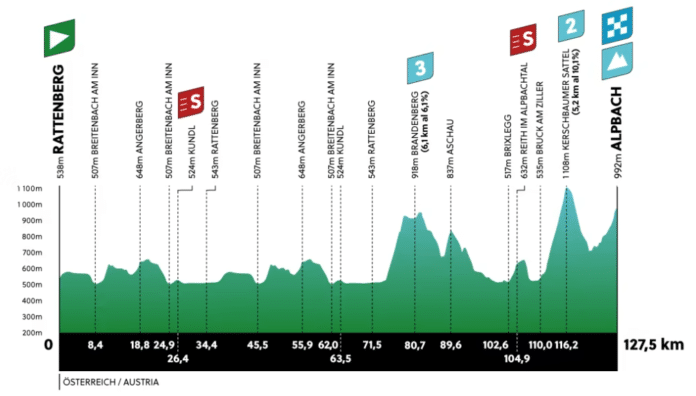
Ce lundi, les coureurs du Tour des Alpes 2023 vont disputer la première étape, qui partira de Rattenberg pour s’achever à Alpbach le tout en Autriche. Dès l’entame de cette course d’une durée de cinq jours, ce sera du costaud avec un parcours certes court de 127,5 mais particulièrement compliqué dans sa partie finale. Clairement, les meilleurs grimpeurs sont déjà attendus pour passer à l’action et faire des premières différences au niveau du classement général.
Le peloton s’élancera dans le village de Rattenberg pour un départ fictif prévu à 11h50. Le kilomètre zéro interviendra quasiment dans la foulée avec un départ donné à 11h55. Le vainqueur de cette première étape est attendu au mieux sur la ligne d’arrivée à 15h06 (40 km/h de moyenne).
D’entrée, une explication entre cadors ?
Au vu du profil proposé pour démarrer ce Tour des Alpes, la course austro-italienne pourrait bien démarrer sur les chapeaux de roue. Avec des prétendants au classement général, qui risqueraient déjà de se dévoiler et se mettre en évidence. Ce lundi 17 avril, il y aura quasiment 2 500 mètres de dénivelé (2 470m D+) répartis sur seulement 127,5 kilomètres au programme. Une sacrée entrée en matière d’autant plus que les difficultés sont concentrées dans les 45 derniers kilomètres.
Lire aussi : La liste des coureurs engagés et des abandons
Effectivement, jusqu’au kilomètre 74,6 pour être précis, le tracé reste largement abordable. Par contre, cela se complique nettement par la suite avec d’abord la montée du Brandenberg (6,1 kms à 6,1%) . Elle sera suivie de deux courtes ascensions non répertoriées, à Aschau (1,6 kms à 9,8%) et à Reith im Alpbachtal (2 kms à 5,6%) où au sommet sera d’ailleurs tracée la ligne du sprint intermédiaire. De quoi grappiller des secondes de bonifications. Mais le plus difficile arrive dans la foulée en devant franchir Kerschbaumer Sattel, qui fait 5,2 kilomètres à 10,1% de moyenne . De quoi permettre assurément aux plus forts de se détacher. Au passage au sommet, il restera 11,3 kilomètres à parcourir dont les 6,2 derniers kilomètres à 4,8% pour rejoindre l’arrivée située à Alpbach .
Le programme TV du lundi 17 avril
Ce lundi, la diffusion aura lieu à la fois sur la chaîne l’Equipe et Eurosport. D’un côté, sur la chaîne gratuite, vous aurez rendez-vous avec Claire Bricogne pour l’émission Ça va frotter , accompagné par Patrick Chassé et des consultants Christophe Riblon et Cédric Pineau qui commenteront ensuite la course du jour. Le direct débutera à partir de 13h .
Sur la chaîne payante, l’un des journalistes parmi Guillaume di Grazia, Colin Bourgeat, Jérémy Sahakian, Thomas Bihel et Louis-Pierre Frileux accompagné du consultant David Moncoutié, seront aux commentaires à partir de 13h30 . La durée de diffusion des images de la course est estimée aux alentours de 1h45.
Les favoris de la 1re étape
*** Tao Geoghegan Hart, Aleksandr Vlasov ** Thymen Arensman, Jack Haig * Aurélien Paret-Peintre, Lennard Kämna, Hugh Carthy, Santiago Buitrago
Lire aussi : Toute l’actualité du cyclisme sur route 2023
LAISSER UN COMMENTAIRE
Enregistrer mon nom, email et site web dans ce navigateur pour la prochaine fois que je commenterai.
Ce site utilise Akismet pour réduire les indésirables. En savoir plus sur comment les données de vos commentaires sont utilisées .

Le site TODAYCYCLING présente l’actualité du cyclisme mondial sur route, du cyclo-cross ainsi que la piste. Initialement lancé sous forme de superblog, TCNews se transforme au fur et à mesure que son audience augmente* en véritable site média avec toutes les informations essentielles, des résultats, des classements, des directs-live ainsi qu'un forum. Et le tout à destination des passionnés de cyclisme, comme nous le sommes !
Envie de rejoindre notre rédaction ? Contactez-nous : [email protected]
SUIVEZ-NOUS
🧑💻 Site internet codé par Alex
- Proposer un article
- Recrutement / Offres d’emploi
- Mentions légales
- Politique de confidentialité
Les dates des étapes du Tour des Alpes 2023. Lundi 17 avril 2023 - Etape 1 | Rattenberg - Alpbach (127,5 kms) Classement de l'étape - Tous les classements à l'issue de l'étape. Mardi 18 avril 2023 - Etape 2 | Reith im Alpbachtal - Ritten (165,2 kms) Classement de l'étape - Tous les classements à l'issue de ...
Le Tour des Alpes 2023 (2.Pro) se déroulera du 17 au 21 avril prochain sur un peu plus de 750 km. Au travers de 5 étapes, le parcours concocté par les organisateurs de l'épreuve propose des profils variés qui satisferont surtout les profils de grimpeurs.
La 46 e édition du Tour des Alpes (nom officiel : Tour of the Alps 2023) a lieu du 17 au 21 avril 2023, en Autriche et en Italie, sur cinq étapes et un parcours d'un total de 752,6 km. La course fait partie du calendrier UCI ProSeries 2023 en catégorie 2.Pro.
Le parcours du Tour des Alpes 2023. 1ʳᵉ étape : Rattenberg - Alpbach (127.5 km) 2ème étape : Reith im Alpbachtal - Ritten (165.2 km) Étape 3 : Ritten - Brentonico San Valentino (162.5 km)...
16 avril 2023 à 16:30 0. Du lundi 17 au vendredi 21 avril se déroule le Tour des Alpes 2023 (Tour of the Alps), une course par étapes italienne classée en UCI 2.Pro. L'an passé, le Français Romain Bardet s'était imposé devant Michael Storer et son coéquipier Thymen Arensman.
Le parcours du Tour des Alpes 2023, qui se déroulera entre le lundi 17 et le vendredi 21 avril, a été dévoilé par l'organisation. Et il sera encore plus dur et attractif que les années...
Parcours et favoris du Tour des Alpes 2023 qui s'élancera le 17 avril. Le Tour des Alpes fêtera sa 47ème édition en 2023 et s'élancera le 17 avril prochain. Courue sur 2 pays - Italie et Autriche - à travers un parcours montagneux, l'épreuve joue le rôle de répétition générale avant le Tour d'Italie, prévu début Mai.
Le parcours et le profil détaillé du Tour des Alpes 2023. Etape 1 (lundi 17 avril) : Rattenberg - Alpbach, 127.5 km. Le Tour des Alpes débute par une course de 127,5 kilomètres entre Rattenberg et Alpbach. Deux sommets sont réunis dans les 10 derniers kilomètres.
Tour des Alpes 2023 Parcours, Étapes & Résultats - Calendrier Cyclisme - Route | Eurosport. Publicité. Tour des Alpes étapes et résultats 2023. 2023. Rattenberg Alpbach. 17/04. Étape 1...
Profils des étapes du Tour des Alpes 2023. Lundi 17 avril 2023 - Etape 1 | Rattenberg - Alpbach (127,5 kms) Profil de la 1ère étape. Mardi 18 avril 2023 - Etape 2 | Reith im Alpbachtal - Ritten (165,2 kms) Profil de la 2e étape. Mercredi 19 avril 2023 - Etape 3 | Ritten - Brentonico San Valentino (162,5 kms) Profil de la 3e étape.
Quelles sont les différentes étapes du Tour des Alpes 2023 ? Première étape : Rattenberg - Alpbach (127.5 km) Aucune étape ne sera simple sur ce Tour des Alpes. La première étape...
à 21h00. Par. Nicolas Jacquemard. Photo Icon Sport. CYCLISME - C'est ce lundi 17 avril que débute le Tour des Alpes 2023. Découvrez le profil des étapes de cette 47ème édition. 1ère étape - Rattenberg - Alpbach : Lundi 17 avril 2023. Étape de moyenne montagne longue de 127,5 km. © Pro Cycling Stats. Deuxième étape. Nicolas Jacquemard.
Profil de la 4e étape du tour des Alpes 2023. Photo : @touroftheAlps. Au lendemain de l'étape reine remportée par Lennard Kämna, place à une nouvelle étape de montagne à l'occasion de cette 4e étape du Tour des Alpes 2023.
Profil de la 2e étape du Tour des Alpes 2023. Photo : Tour of the Alps. Ce mardi, les coureurs du Tour des Alpes 2023 vont disputer la deuxième étape, qui partira de Reith im Alpbachtal en Autriche pour s'achever à Ritten / Renon en Italie.
Classement général Tour des Alpes 2023. le 21 avril 2023. afficher uniquement les Français. L'ÉQUIPE. chrono. filtrer : cyclisme. 14:15. Cyclisme, A travers la Flandre. La course sur la...
La 46e édition du Tour des Alpes (nom officiel : Tour of the Alps 2023) a lieu du 17 au 21 avril 2023, en Autriche et en Italie, sur cinq étapes et un parcours d'un total de 752,6 km. La course fait partie du calendrier UCI ProSeries 2023 en catégorie 2.Pro. Équipes.
Le Tour des Alpes 2023 (2.Pro) qui se dispute du lundi 17 au vendredi 21 avril propose un parcours montagneux qui a attiré de nombreux coureurs qui viseront le Giro 2023 quelques jours plus tard. Romain Bardet, le vainqueur sortant étant absent, la succession est donc ouverte.
5. Levico Terme. Friday 19 April — 118.6 km. Discover the #TOTASpirit. Premium Sponsors. The Official Website of the UCI Pro Series Stage Race, held in the Alps between Italy and Austria, through Tirol, Südtirol and Trentino (April 18-22, 2022)
Le Parcours 2023 de l'Alpes Isère Tour - 32ème édition Consulter les parcours détaillés des étapes de l'Edition 2022 : MERCREDI 25 MAI 2022 Charvieu-Chavagneux -> Charvieu-Chavagneux118,1 KM Détails du parcours - Etape 1 JEUDI 26 MAI 2022 Les Abrets en Dauphiné - VDD -> Saint Quentin Fallavier CAPI161,2 KM Détails du parcours - Etape.
21/04/2023. 0. 775. Profil de la 5e et dernière étape du Tour des Alpes 2023. Photo : @D.R. Ce vendredi, place à la 5e et dernière étape du Tour des Alpes 2023. Au programme du parcours du jour, Tao Goeghegan Hart le leader de la course et ses adversaires vont avoir quelque 144,5 kilomètres à parcourir entre Cavalese et Brunico.
Du 17 au 19 février se déroule le Tour des Alpes Maritimes et du Var 2023. En trois étapes, dans le Sud de la France, les coureurs trouveront un terrain de jeu idéal pour ceux qui aiment passer à l'attaque.
Étape 1 | Hommes | 17.04.2023. Terminé. Rattenberg Alpbach. 1. T. Geogheghan Hart. SCO. 2. F. Gall. AUT. 3. H. Carthy. ENG. Résumé. Résultats. Classements généraux. Etapes. Infos. Publicité. Ad....
Dénivelé. 13 250 m. Site officiel. Site officiel. 2023. Documentation. La 47e édition du Tour des Alpes (nom officiel : Tour of the Alps 2024) a lieu du 15 au 19 avril 2024, en Autriche et en Italie, sur cinq étapes et un parcours d'un total de 709,3 km. La course fait partie du calendrier UCI ProSeries 2024 en catégorie 2.Pro.
Le Tour des Flandres 2024 se tient le dimanche 31 mars.. Un parcours long de 270,8 km entre Anvers et Audenarde attend le peloton pour le deuxième Monument de la saison. Cette 108e édition pourrait rentrer dans l'histoire en cas de victoire de Mathieu van der Poel.Grandissime favori après avoir remporté l'E3 Saxo Classic, sa première victoire en 2024, le Néerlandais peut égaler le ...
De Rouen (Seine-Maritime) à La Turballe (Loire-Atlantique) en passant par Gijón (Espagne) et Royan (Charente-Maritime), le parcours d'une des courses en solitaire les plus difficiles au monde ...
Tour des Alpes 2023, étape 3, parcours et profil. Par. Laurent DEVERNET. - 18/04/2023. 0. 871. Profil de la 3e étape du Tour des Alpes 2023. Photo : @TouroftheAlps. Mercredi, les coureurs du Tour des Alpes (UCI 2.Pro) vont disputer la 3e étape entre Ritten et Brentonico San Valentino.
Malgré les idées reçues, voyager en montagne sans voiture, et par le train, c'est possible, même en Italie. Voici nos conseils pour côtoyer les sommets des Dolomites sans prendre le volant.
17/04/2023. 0. 934. Profil de la 1re étape du Tour des Alpes 2023. Photo : Tour of the Alps. Ce lundi, les coureurs du Tour des Alpes 2023 vont disputer la première étape, qui partira de Rattenberg pour s'achever à Alpbach le tout en Autriche.
Customer Reviews
Useful Links
- Request a call back
- Write For Us

"The impact of cultural..."
Charita Davis
Don Winslow's crime saga continues in 'City of Dreams': 5 new must-read books this week

In search of something good to read? USA TODAY's Barbara VanDenburgh scopes out the shelves for this week’s hottest new book releases. All books are on sale Tuesday.
For more must-read book recommendations, check out the 20 books we are most excited about this spring, including Laura Dern and Diane Ladd's memoir " Honey, Baby, Mine " and Nana Kwame Adjei-Brenyah fierce new novel " Chain Gang All Stars "; our favorite books of 2022 that received perfect four-star reviews; and the juiciest recent celebrity memoirs from Matthew Perry , Tom Felton , William Shatner , Jennette McCurdy and more.
Make sure to sign up for our books newsletter to have the latest books news delivered straight to your inbox.
Millennial Therapist: Sara Kuburic announces first book
Purchases you make through our links may earn us and our publishing partners a commission.
Check out: USA TODAY's weekly Best-selling Booklist
‘City of Dreams’
By Don Winslow (William Morrow, fiction)
What it's about: The crime saga continues in this follow-up to Winslow’s bestselling “ City on Fire .” An East Coast crime war has Danny Ryan on the run from the Mafia and the FBI. He lands in California to start life over, but a beautiful movie star with a dark past pulls him right back in.
The buzz: "You wouldn’t want to spend time with these gangsters in real life, but they’re top-notch company on the page," reads a ★★★½ (out of four) review for "City on Fire," this book's precursor.
'City on Fire' review: Don Winslow's new gangster shoot-‘em-up is a wild ride
- "City of Dreams" at Amazon for $21
- "City of Dreams" at Bookshop for $26.96
‘Not Funny: Essays on Life, Comedy, Culture, Et Cetera’
By Jena Friedman (Atria/One Signal, nonfiction)
What it's about: The Academy Award-nominated writer and stand-up comedian (“Borat Subsequent Moviefilm”) subversively reflects on modern cultural flashpoints – sexism, cancel culture, celebrity worship – in a debut essay collection .
The buzz: Kirkus Reviews calls it "a serious memoir with jokes, self-deprecating yet rarely self-diminishing."
- "Not Funny: Essays on Life, Comedy, Culture, Et Cetera" at Amazon for $25.19
- "Not Funny: Essays on Life, Comedy, Culture, Et Cetera" at Bookshop for $26.03
'Good Girls: A Story and Study of Anorexia'
By Hadley Freeman (Simon & Schuster, nonfiction)
What it's about: Freeman couples her own experience with anorexia nervosa, including several years in psychiatric wards and decades of self-destructive behavior, with deep reporting to offer insight and make sense of the condition.
The buzz: "If you need to understand anorexia, look no further. This is the book for you," says a starred Kirkus review .
- "Good Girls: A Story and Study of Anorexia" at Amazon for $25.19
- "Good Girls: A Story and Study of Anorexia" at Bookshop for $26.03
'The Last Animal'
By Ramona Ausubel (Riverhead, fiction)
What it's about: A widowed mother and research scientist takes her two teenage daughters on a scientific expedition around the world, from studying a frozen baby mammoth in Siberia to an exotic animal farm in Italy, and hatch a plan that just might change the world.
The buzz: "An amazing amount of humor, pizazz, wisdom, and wonder packed into a story that is essentially about processing grief," says a starred Kirkus review .
- "The Last Animal" at Amazon for $22.78
- "The Last Animal" at Bookshop for $26.04
'The Five Sorrowful Mysteries of Andy Africa'
By Stephen Buoro (Bloomsbury, fiction)
What it's about: Teenager Andrew Aziza, aka Andy Africa , comes of age in Nigeria, reckoning with his identity and desires under the shadow of colonialism.
The buzz: "This bold, spirited tale deserves attention," says Publishers Weekly .
- "The Five Sorrowful Mysteries of Andy Africa" at Amazon for $28
- "The Five Sorrowful Mysteries of Andy Africa" at Bookshop for $26.04
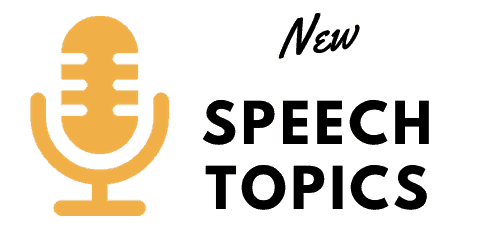
Essay Writing about A BOOK I HAVE READ
A book i have read.
Of all the possessions in the world, books are the most valuable, especially to those who are the lovers of books. Books contain a priceless treasure which friends cannot match, brothers cannot give and time cannot destroy. A good book is a good friend. Many books written by great authors led to the downfall of many empires and rise of new nations. “The Social Contract” written by Rousseau brought about the French Revolution. Karl Marx’s “Das Kapital” gave birth to the communist movement and socialist governments.
Reading is my hobby and I have read many books. The book I read recently is the Malayalam version of the Ramayana. This great book has acted as a source of culture and civilization for more than two thousand years. It is written in a simple language which any one can understand. The story is simple, but enlightening. The book has many charms of its own. It has a philosophical value. It provides a moral code for the people to follow.
The story is centred round Rama, the legendary hero of the ancient India. Its starts in the kingdom of Ayodhya in the north part of India in the early period of the Aryan settlement. As directed by his father Dasaratha, Rama went into exile for fourteen years with his wife Sita and his stepbrother Lakshmana. Ravana, the cruel king of Lanka stole away Sita treacherously. Rama, with the help of a monkey army, invaded Lanka, defeated and killed Ravana and set Sita free. He came back victoriously after fourteen years and ascended the throne of Ayodhya and ruled for years in a just way.
The Ramayana teaches us a great moral lesson. It upholds the ideal of duty and sacrifice. Rama went into exile in order to obey his father as a dutiful son. Lakshmana sacrificed his comforts for his brother. The Ramayana sets a good example of womanhood in Sita. Besides these, the book gave me a deep understanding about the social and political conditions of ancient times. Thus the book has historical importance. The story unfolds the social and religious life of the people in the entire sub-continent. The great victory of good overall is a theme running through this great epic.
The book contains noble saying of great sages. The poetic beauty of the verse makes the book immortal. The Ramayana teaches us virtues and morals and thus it helps in building up one’s character. It advocates truth, love, sacrifice and bravery. It upholds justice and duty. The book has ever been a source of inspiration for the people of India.
1 thought on “Essay Writing about A BOOK I HAVE READ”
this website is very useful for school kids
Leave a Comment Cancel reply
This site uses Akismet to reduce spam. Learn how your comment data is processed .

COMMENTS
1. Make a List of Your Favorite Books, Articles, and Essays. If you're prepping for the most common interview questions, prepare thoughtful answers about the last book you read or your favorite essays. In fact, feel free to create lists of your favorite podcasts, creators, and television shows, too. Even if you're not planning to talk about ...
First, this could simply be a conversation starter. The interviewer wants to get to know you a little bit and is curious about what kinds of books you read. Another purpose of this question could be to see how well-read you are (in other words, how many books you read, and what kind). In some corporate environments, being well-read is really ...
3. Briefly explain the book. If an interviewer asks you this question, start with the title of the book and a brief explanation. Describe either the premise of the book if it's nonfiction or a plot summary for a fiction story. This helps introduce the interviewer to the book and can allow them to understand the essence of what you've read.
6 Paragraphs on 'A Book I Have Recently Read'. A Book I Have Recently Read: Books are the best resources of people. With which no earthly wealth can be compared. By reading books we can keep our mind healthy and happy. A good book opens the eyes of the human mind as well as expands and develops the knowledge and intellect and helps to light ...
If you haven't read a book recently, say so and offer the title of an old favorite instead. You can discuss why it was important to you and what you learned from it. Sample Answer. Here is an example of a good answer to the question of what title you last read: The last book I read was Leaves of Grass by Walt Whitman.
So, let's prepare to answer this common question, even if your reading habits are missing. 1. Make a List of Your Favorite Books, Articles, and Essays. By preparing a list of books, articles, and essays you are communicating to the recruiter that you are organized and well prepared. This also makes it easy for you to recall the most interesting ...
Make a List of Your Favorite Books, Articles, and Essays By preparing a list of books, articles, and essays you are communicating to the recruiter that you are organized and well prepared.
I will begin from the "One Hundred Years of Solitude" by Gabriel García Márquez. This is the apogee of the writer's creative skill. When the novel was issued for the first time, its author was forty years old. He accumulated a huge baggage of life experience, which he embodied in the novel.
Table of contents. Step 1: Reading the text and identifying literary devices. Step 2: Coming up with a thesis. Step 3: Writing a title and introduction. Step 4: Writing the body of the essay. Step 5: Writing a conclusion. Other interesting articles.
This novel begins with Spaz, a teenage epileptic, complaining how he can not use a needle probe. In his time, the needle probe is a needle you plug in your head and you can watch television, read ...
Amid a surge in book bans, the most challenged books in the United States in 2023 continued to focus on the experiences of L.G.B.T.Q. people or explore themes of race.
Marion Winik ** ** is the author of nine books, including The Big Book of the Dead (Counterpoint, 2019) and First Comes Love (Vintage, 1997). Her essays have been published in The New York Times, AGNI, The Sun, and elsewhere; her column at BaltimoreFishbowl.com has been running since 2011. A professor at the University of Baltimore, she reviews ...
Hilton Als, White Girls (2013) In a world where we are so often reduced to one essential self, Hilton Als' breathtaking book of critical essays, White Girls, which meditates on the ways he and other subjects read, project and absorb parts of white femininity, is a radically liberating book.
NPR defends its journalism after senior editor says it has lost the public's trust. NPR is defending its journalism and integrity after a senior editor wrote an essay accusing it of losing the ...
April 2, 2024. John Barth, who, believing that the old literary conventions were exhausted, extended the limits of storytelling with imaginative and intricately woven novels like "The Sot-Weed ...
PenMyPaper offers you with affordable 'write me an essay service'. We try our best to keep the prices for my essay writing as low as possible so that it does not end up burning a hole in your pocket. The prices are based on the requirements of the placed order like word count, the number of pages, type of academic content, and many more.
A book you have recently read paragraph writing in english || Hello Friends, In this video we will learn how to write an essay on a book I have recently read...
AUGUSTA, Ga. - Day 3 of the 2024 Masters is in the books, and there are winners and losers going into championship Sunday. We call 'em like we see 'em around here.
The author and Pulitzer prize finalist, who has written the latest pick for the New Scientist Book Club, Nuclear War: A scenario, on the "shocking truths" about a nuclear attack. By Annie Jacobsen ...
Those books were my mother's and I was not interested in them. I used to read comics at that time. But one day, I was bored and there was no new comic for me to read, so I picked one of my mother's books. And what I chose was the first book I read and my favourite book of all time. It was a thin book and the author's writing is very simple.
Therefore EssayService strongly advises its clients to use the provided work as a study aid, as a source of ideas and information, or for citations. Work provided by us is NOT supposed to be submitted OR forwarded as a final work. It is meant to be used for research purposes, drafts, or as extra study materials.
In his essay, Mr. Berliner laid some of the blame at the feet of NPR's former chief executive, John Lansing, who said he was retiring at the end of last year after four years in the role. He was ...
Critic Bethanne Patrick recommends 10 promising titles, fiction and nonfiction, to consider for your April reading list. April's book releases cover some difficult topics, including Salman ...
Fintan O'Toole. Fintan O'Toole is the Advising Editor at The New York Review and a columnist for The Irish Times. His most recent book, We Don't Know Ourselves: A Personal History of Modern Ireland, was published in the US last year. (March 2024)
The Last Book I Read Essay, Psychology Research Review Paper, Sanganak Shap Ki Vardan Essay In Marathi Pdf, Popular Course Work Proofreading Sites For Masters, Professional Research Proposal Ghostwriters For Hire For Mba, Popular Thesis Ghostwriter Websites Gb, Narrative Essay Helping Othe
Essay On Last Book I Read. Visit the order page and download the assignment file. Pay only for completed parts of your project without paying upfront. We'll get back to you shortly. Your order needs a perfect match, so give us a few mins. EssayService boasts its wide writer catalog. Our writers have various fields of study, starting with ...
A "who am I" essay is a simple type of open-ended introductory essay. It is used in certain schools, workplaces and around the world to help members of a group introduce themselves through their writing. They are generally about a page long..... A "hook" is something irresistibly interesting in the first sentence or two of an essay that draws readers in and inspires them to keep reading.
Essay On Last Book I Read. Level: College, High School, University, Master's, Undergraduate, PHD. Alexander Freeman. #8 in Global Rating. In the order page to write an essay for me, once you have filled up the form and submitted it, you will be automatically redirected to the payment gateway page. There you will be required to pay the entire ...
All books are on sale Tuesday. For more must-read book recommendations, check out the 20 books we are most excited about this spring, including Laura Dern and Diane Ladd's memoir "Honey, Baby ...
The book I read recently is the Malayalam version of the Ramayana. This great book has acted as a source of culture and civilization for more than two thousand years. It is written in a simple language which any one can understand. The story is simple, but enlightening. The book has many charms of its own. It has a philosophical value.